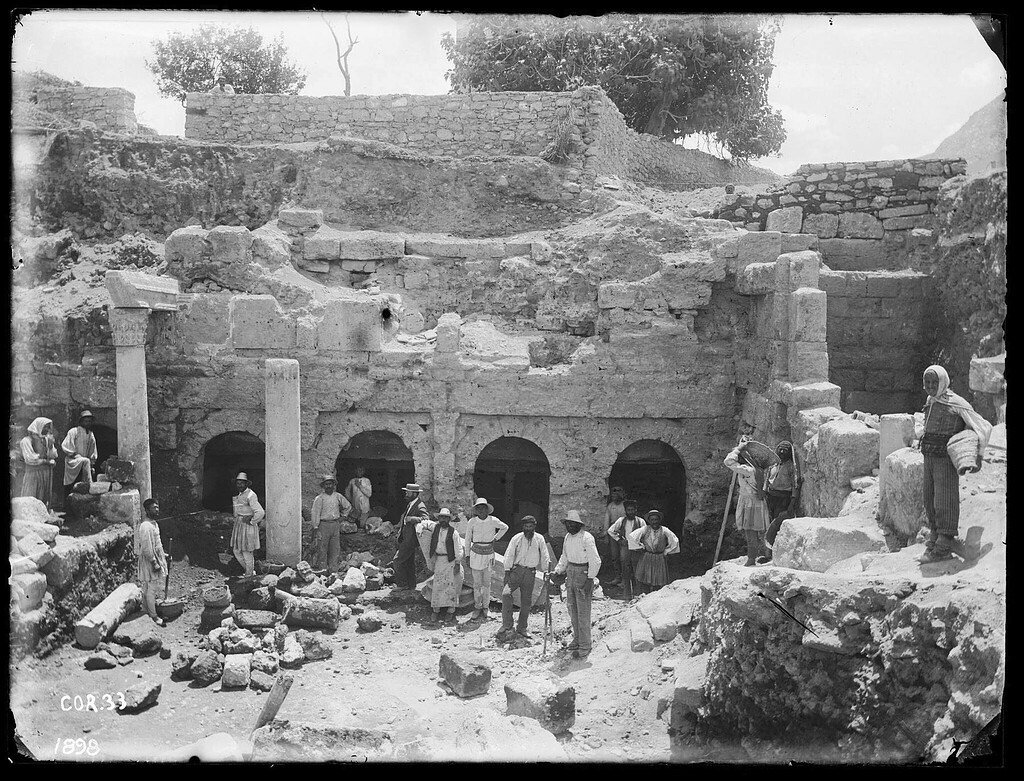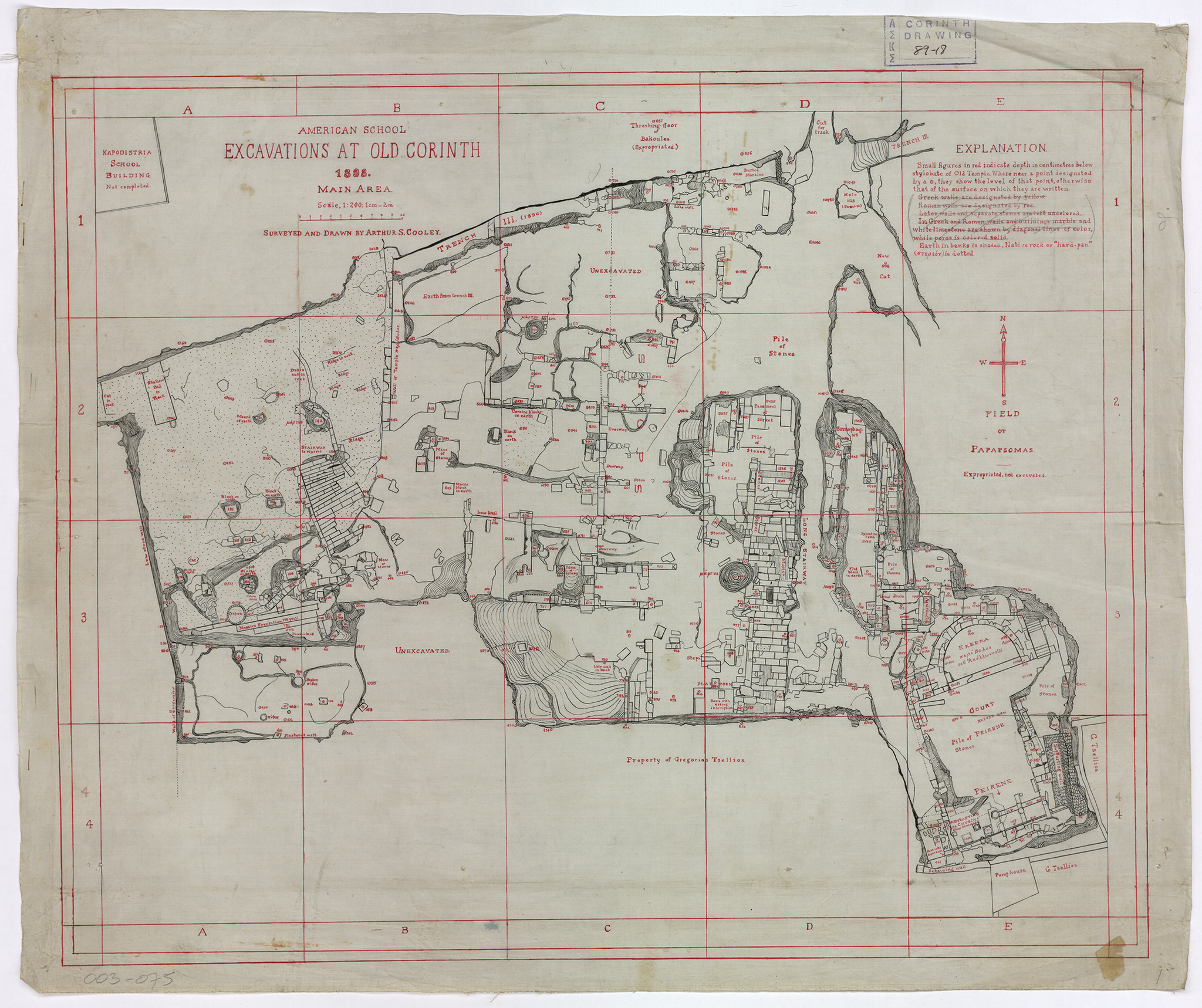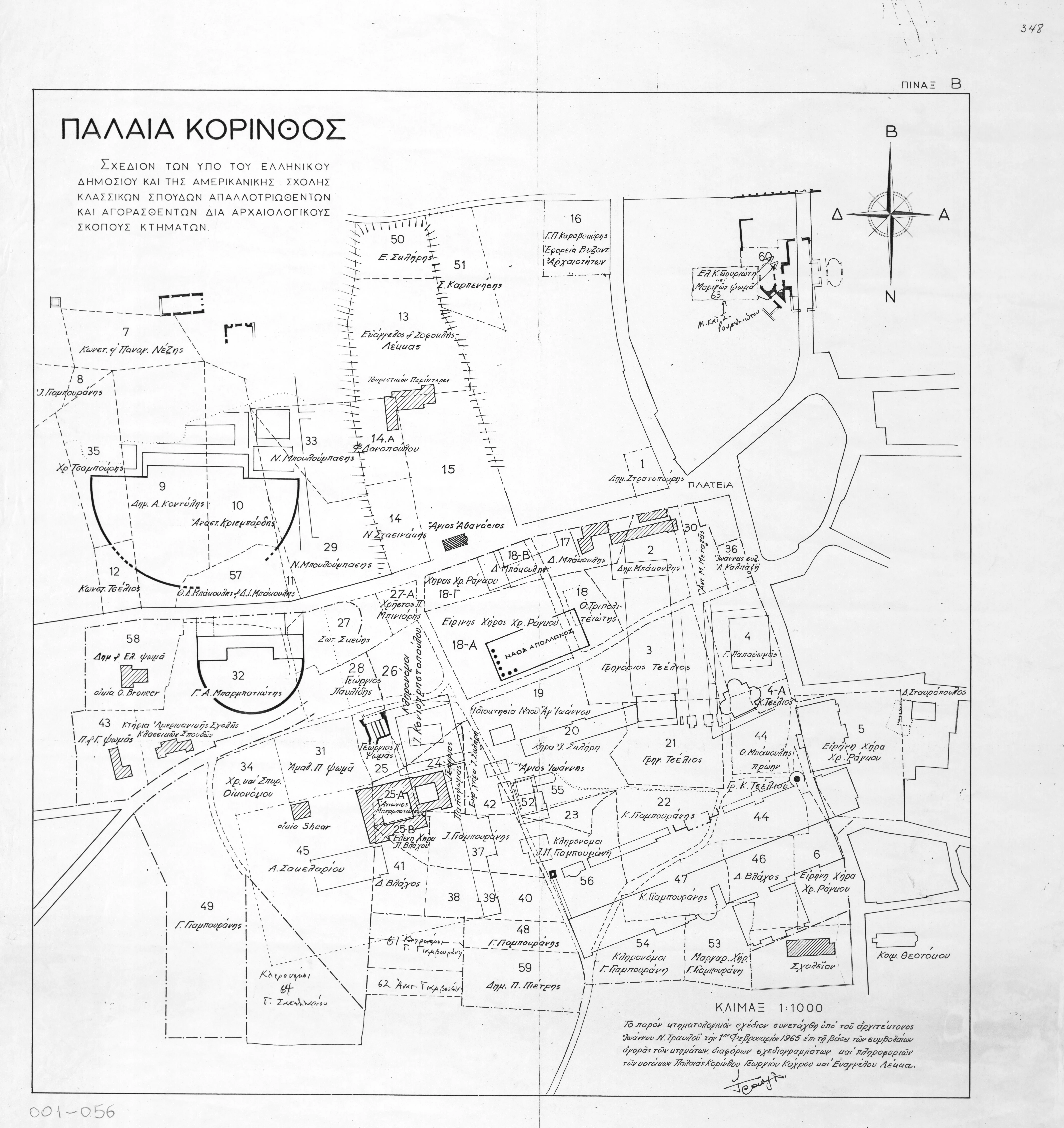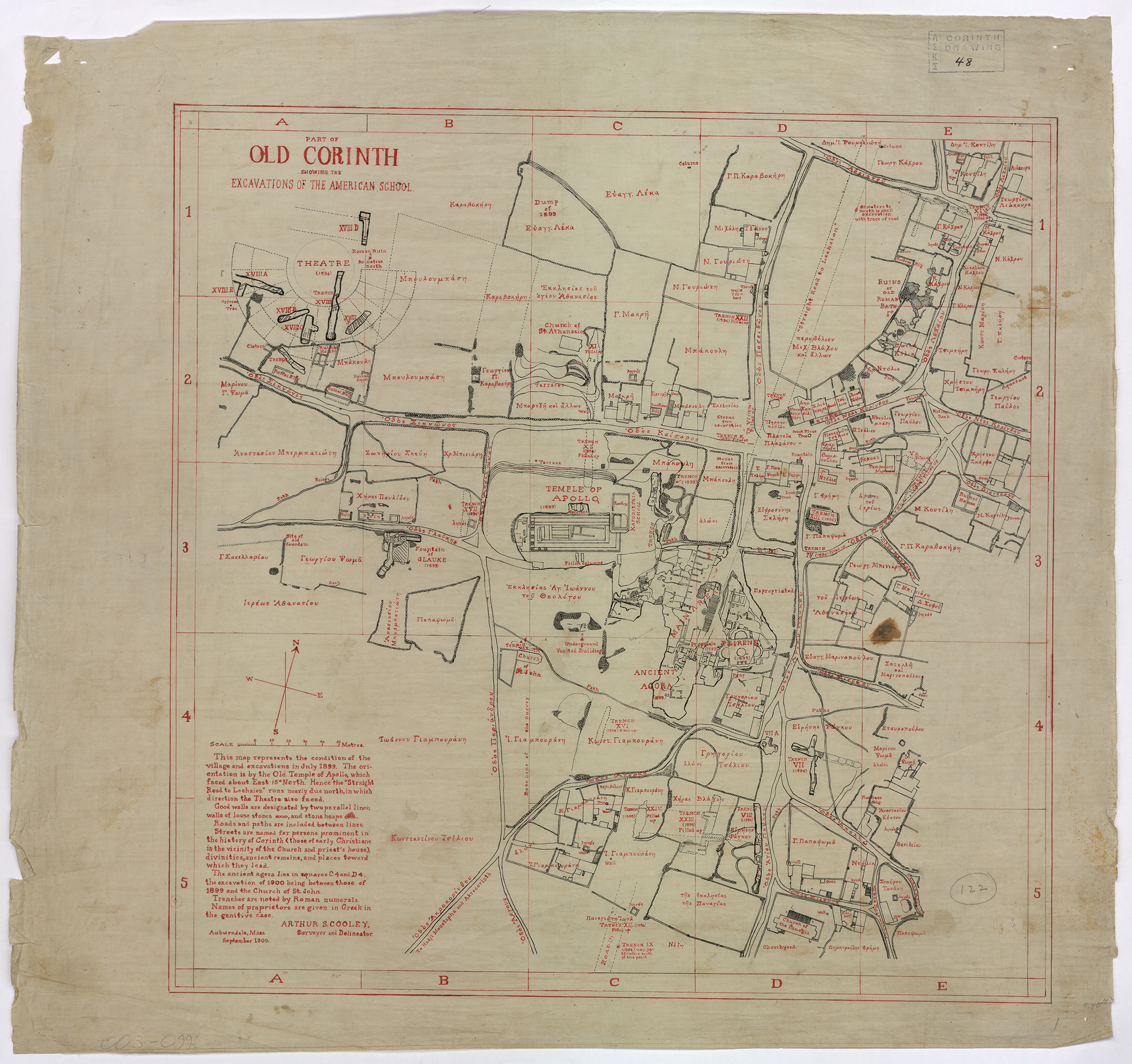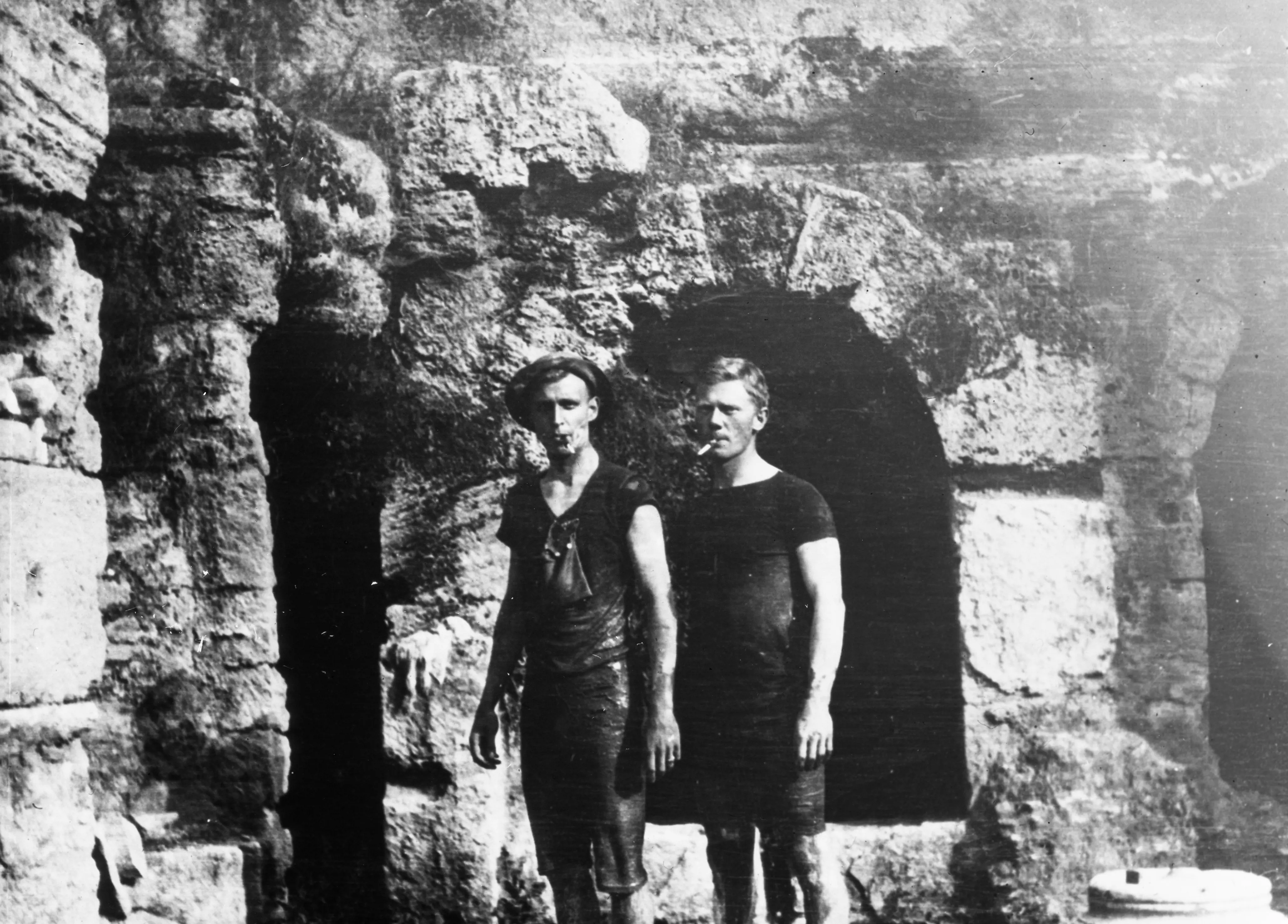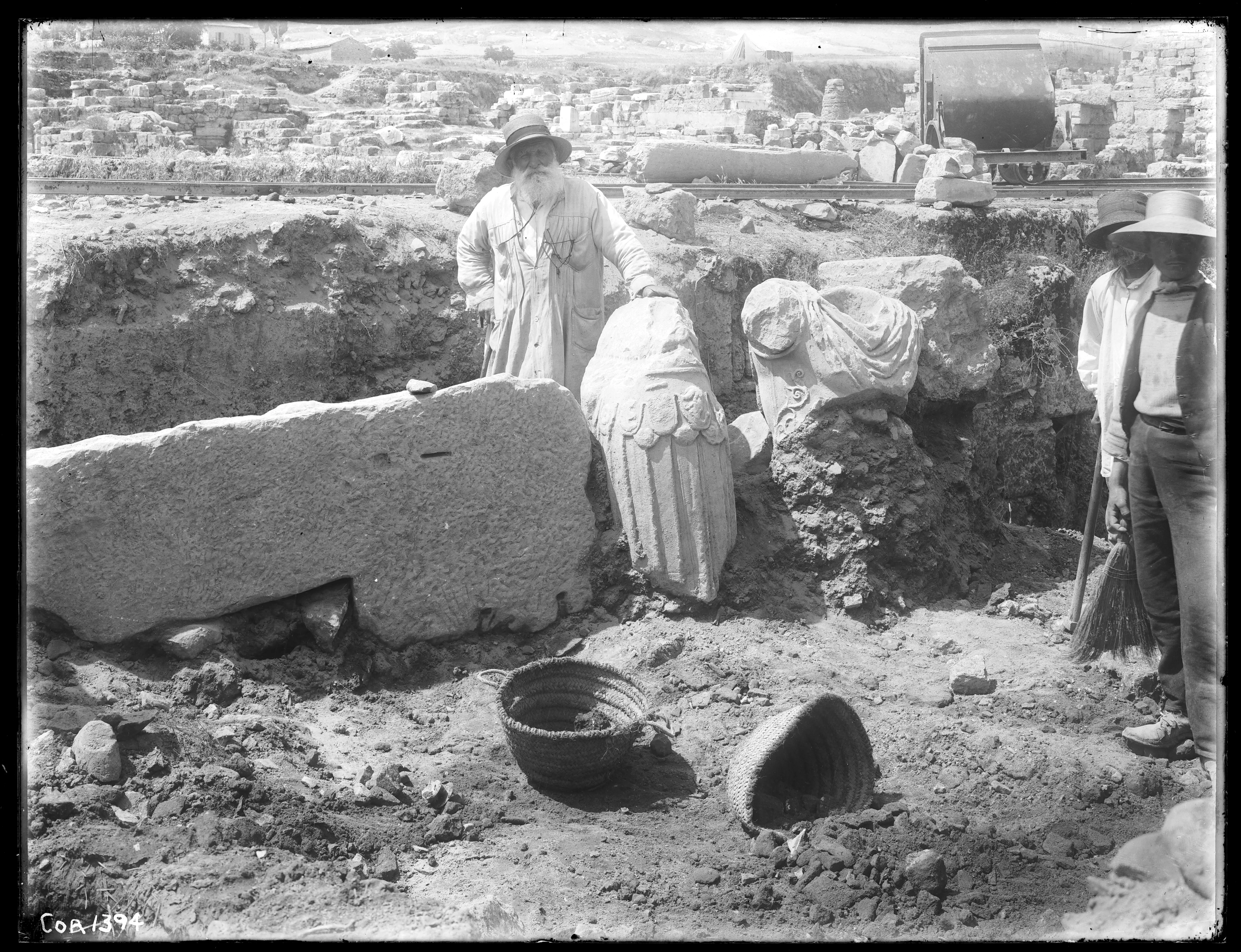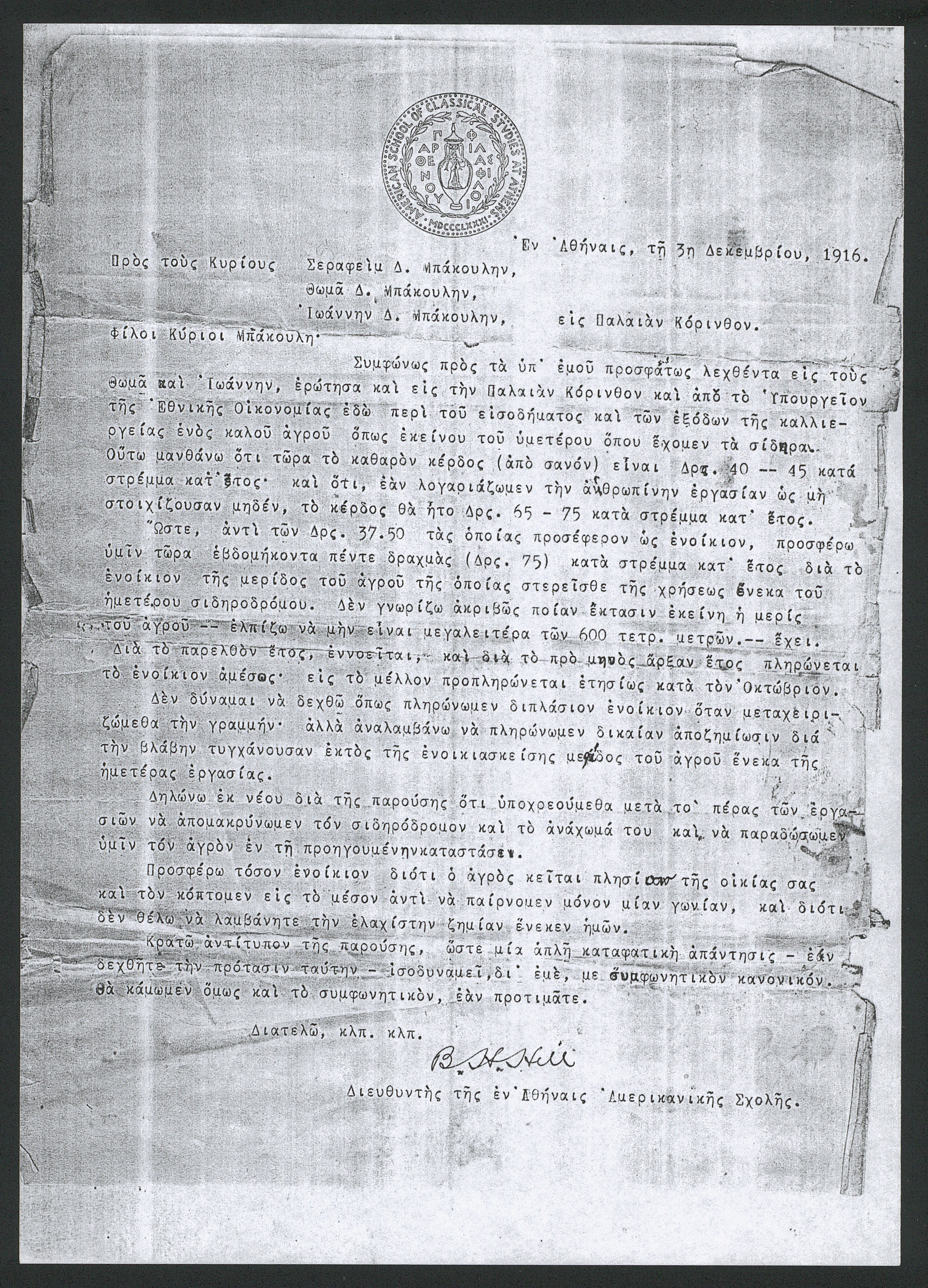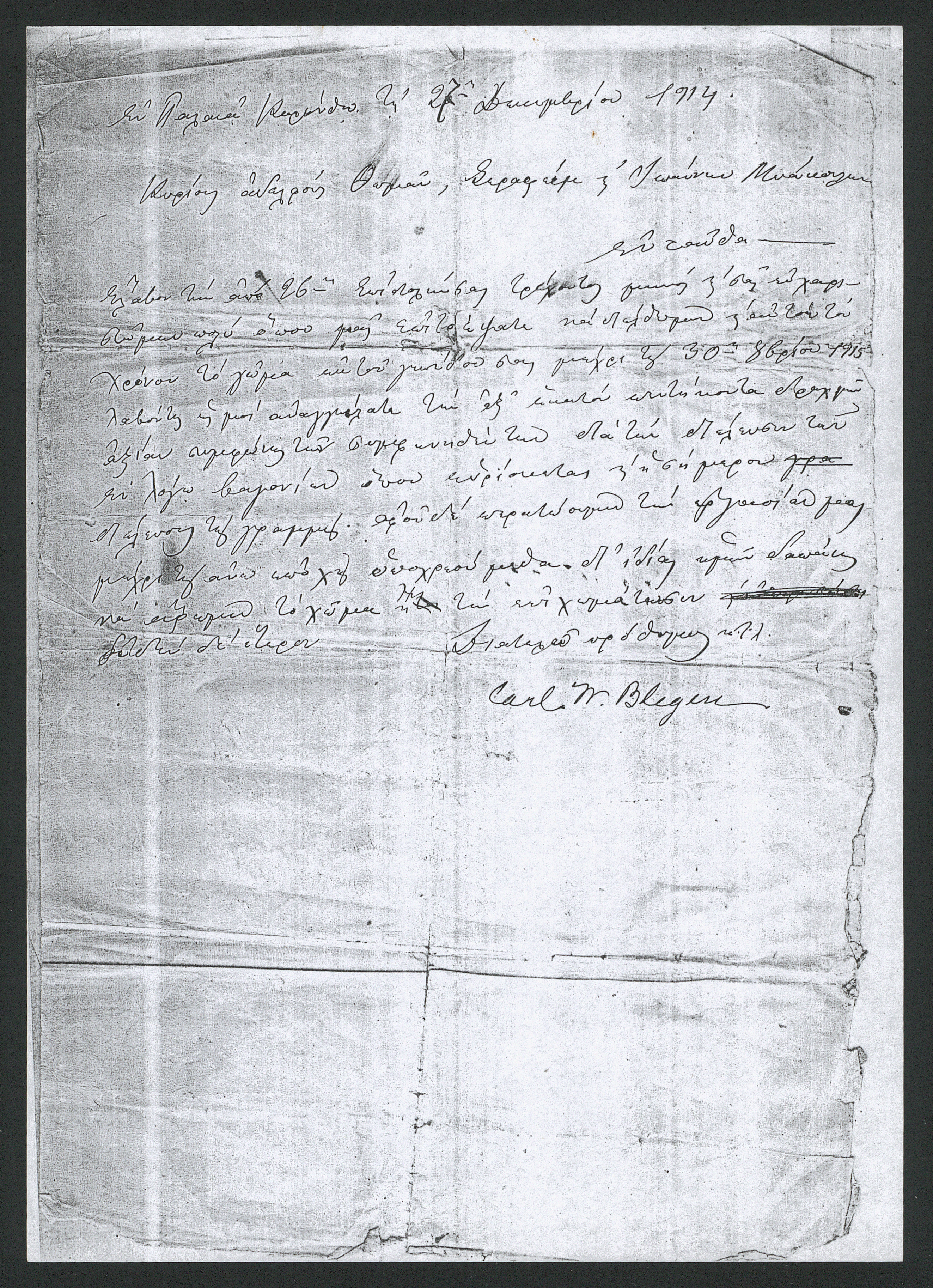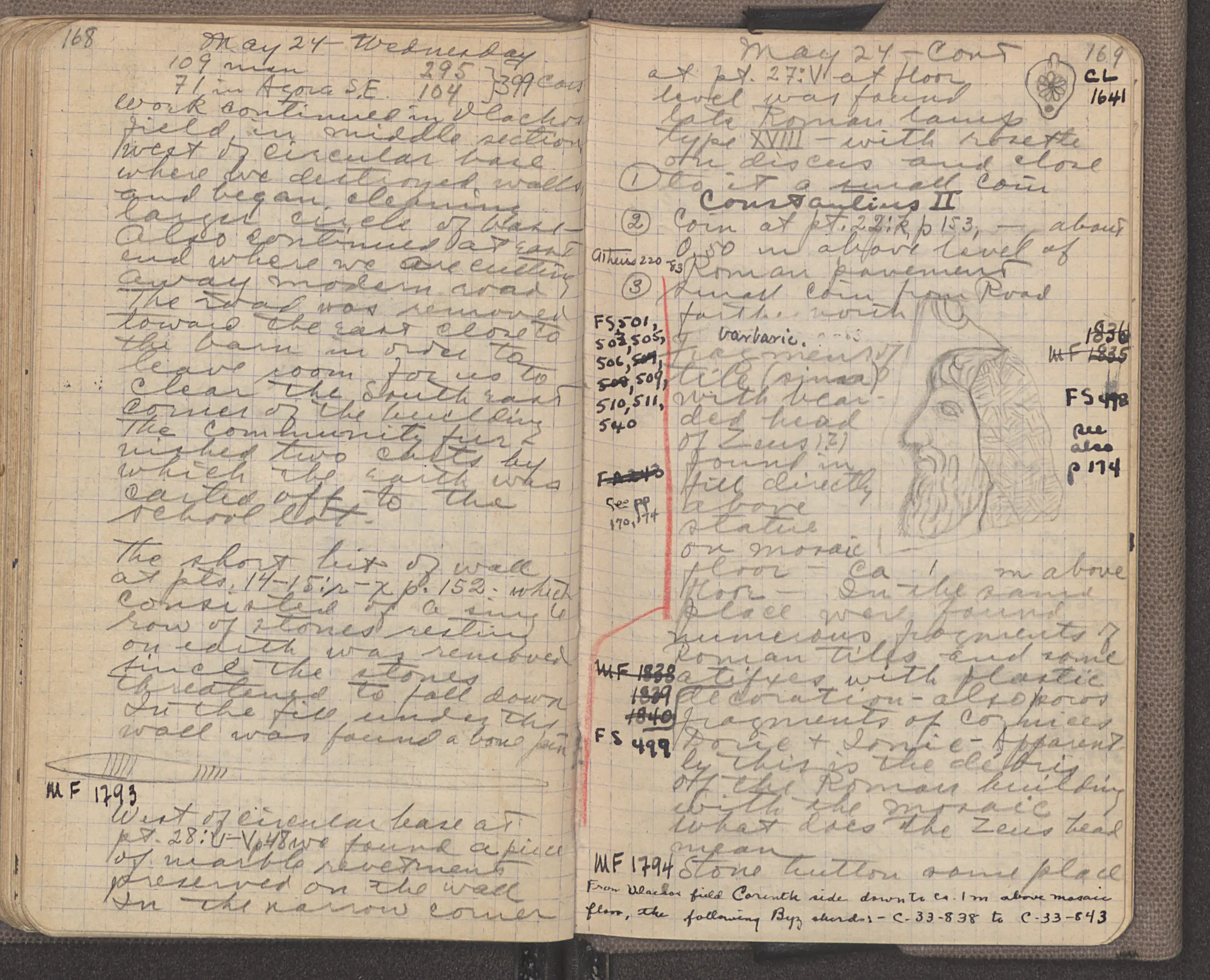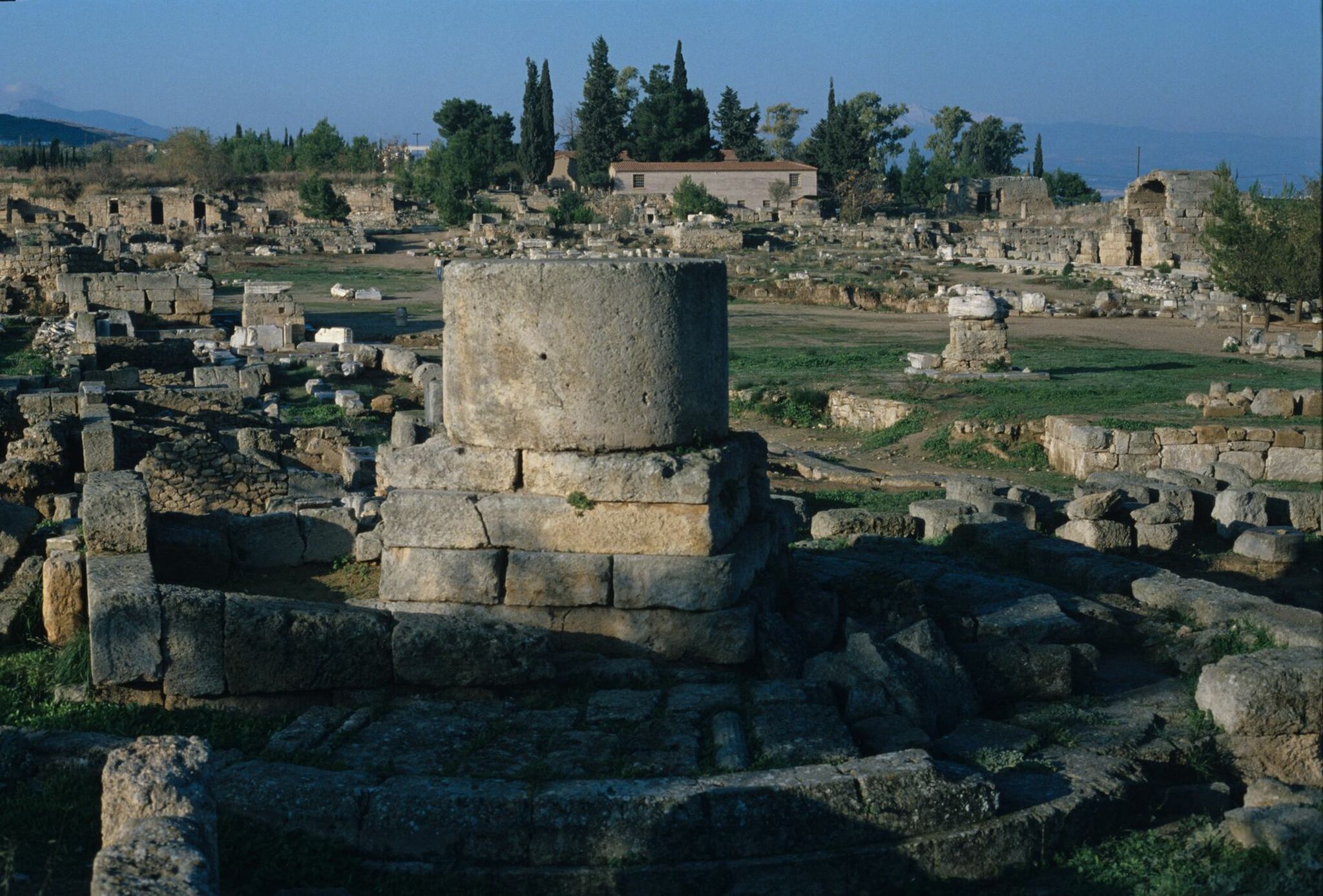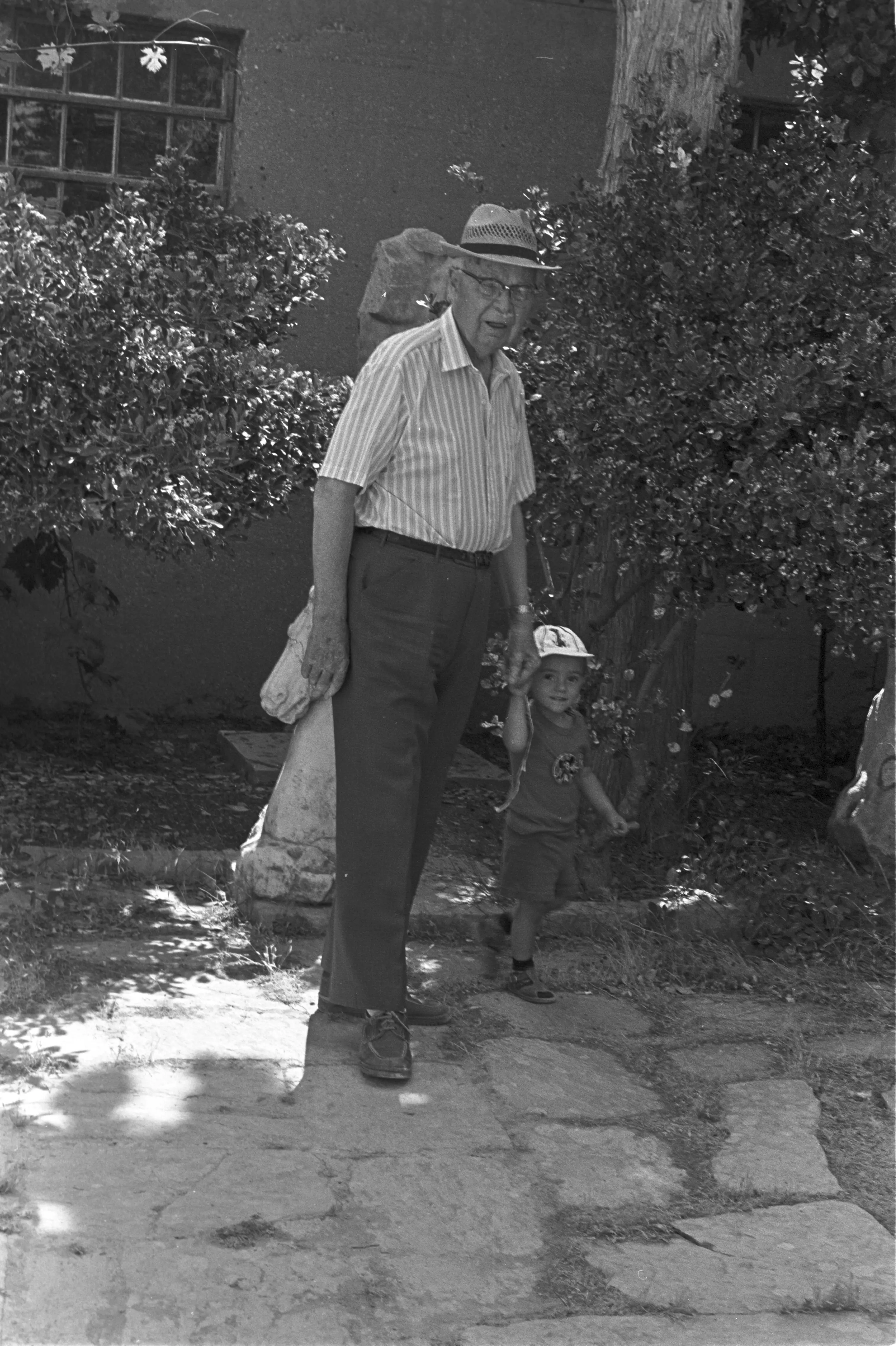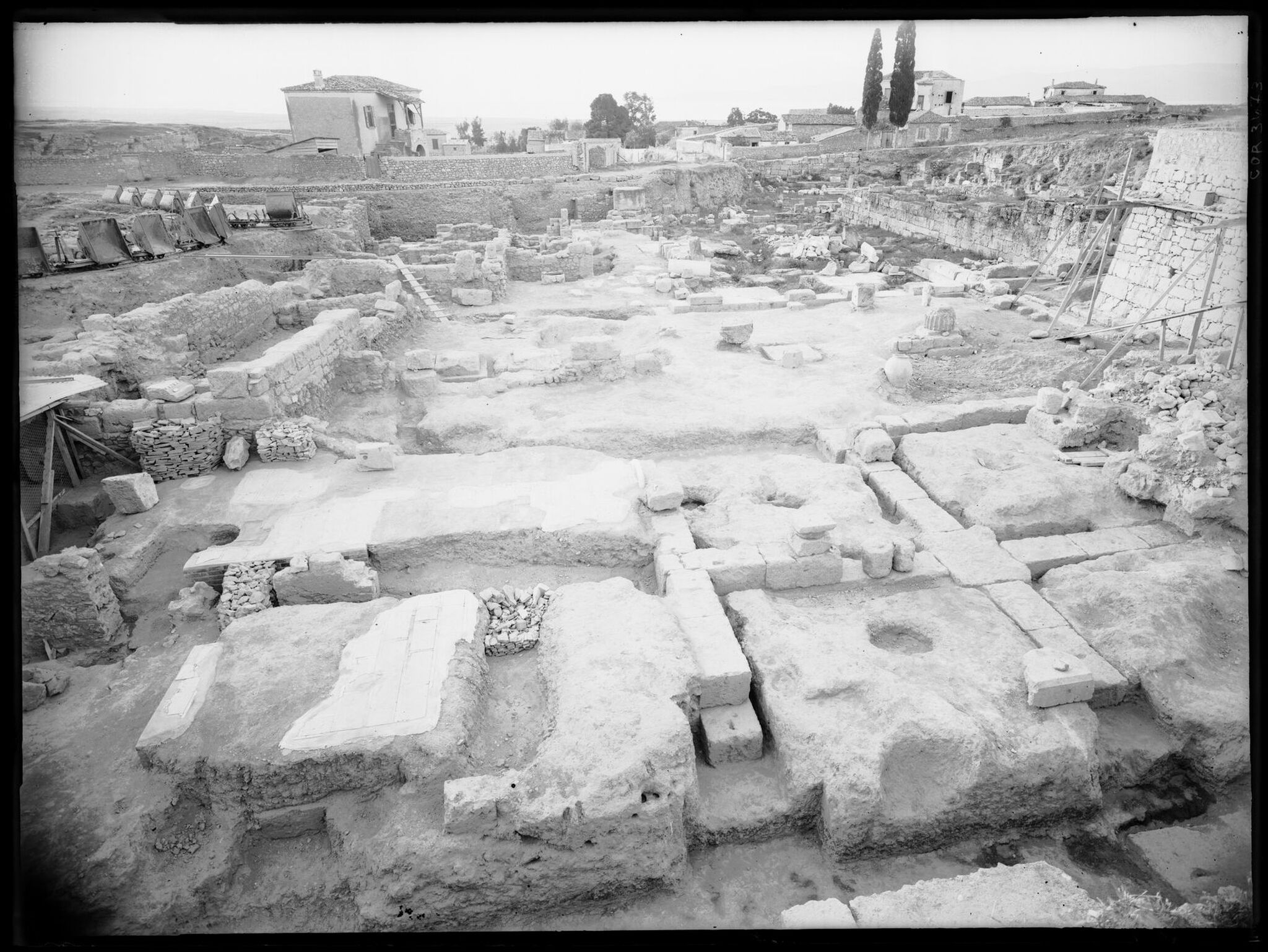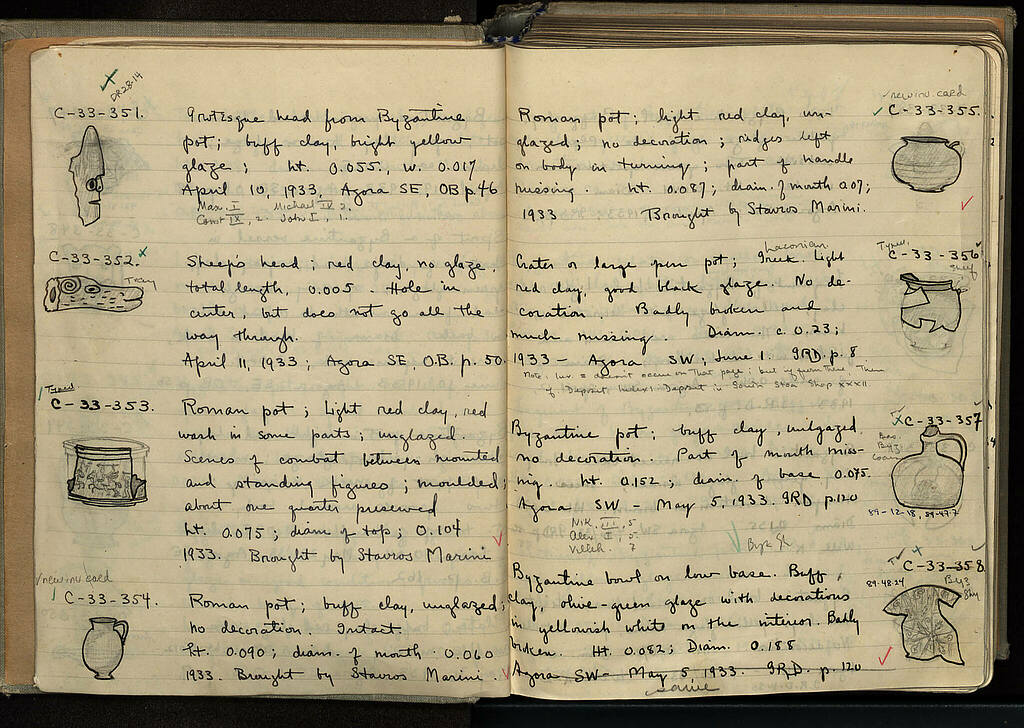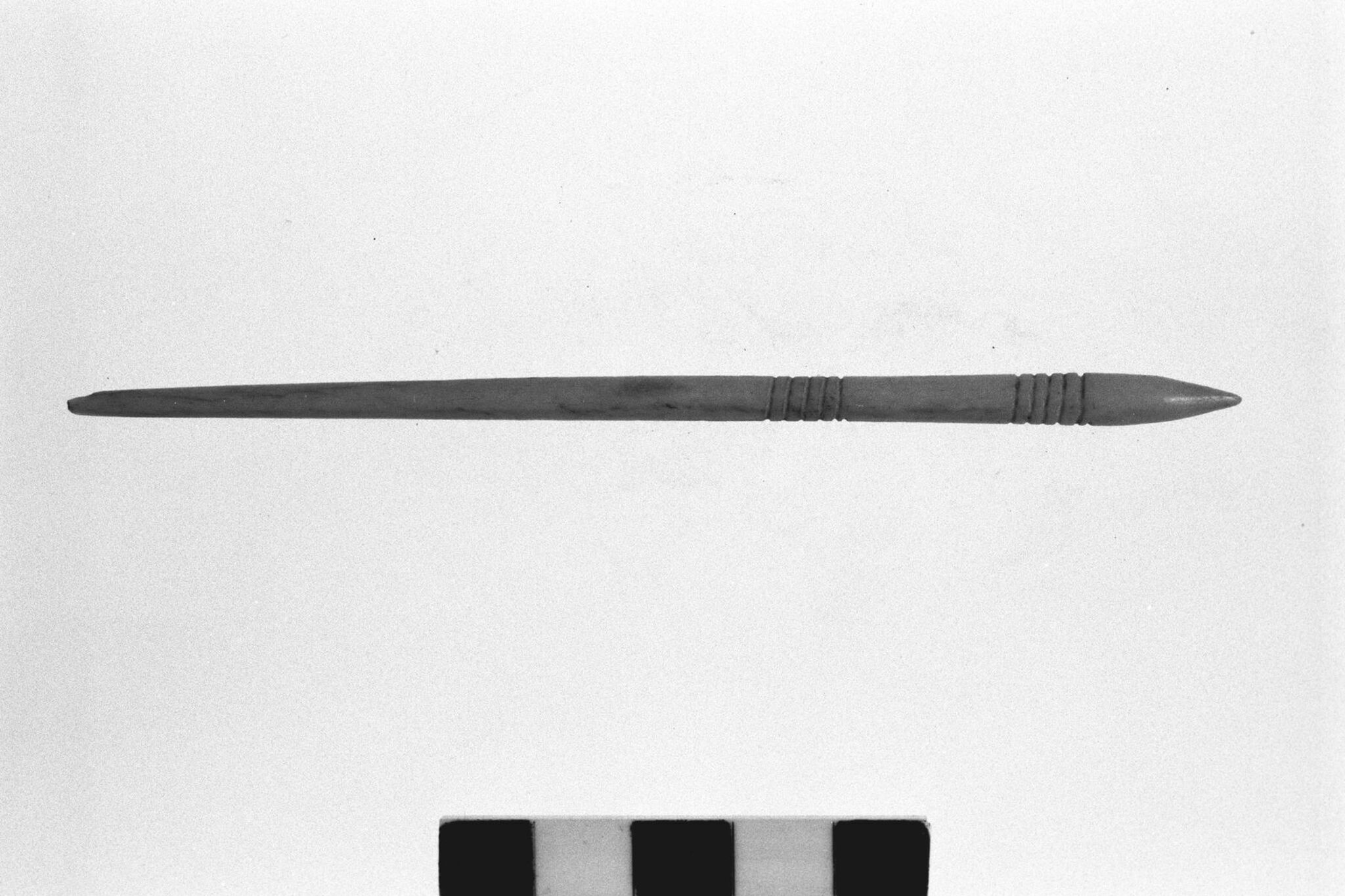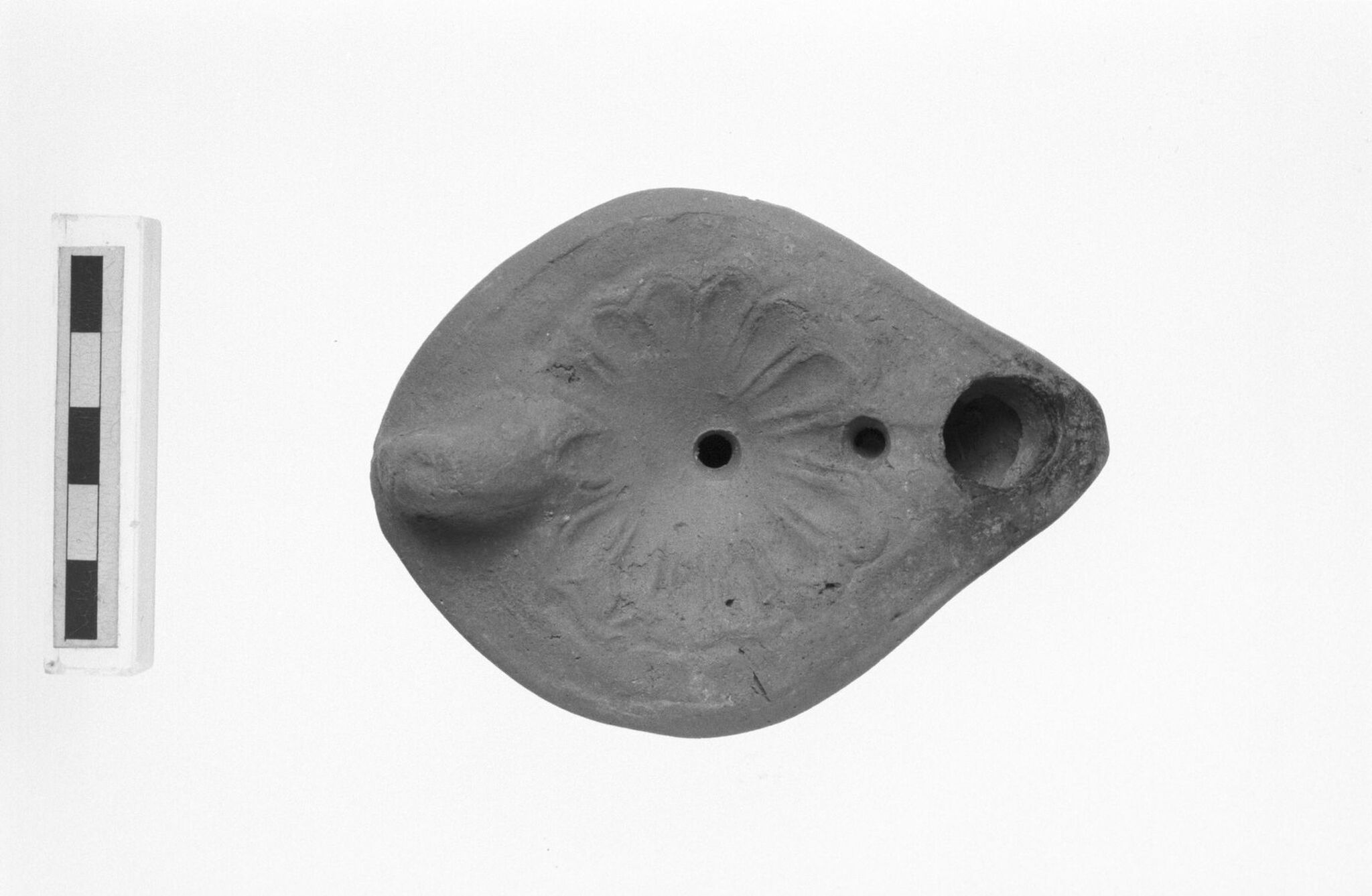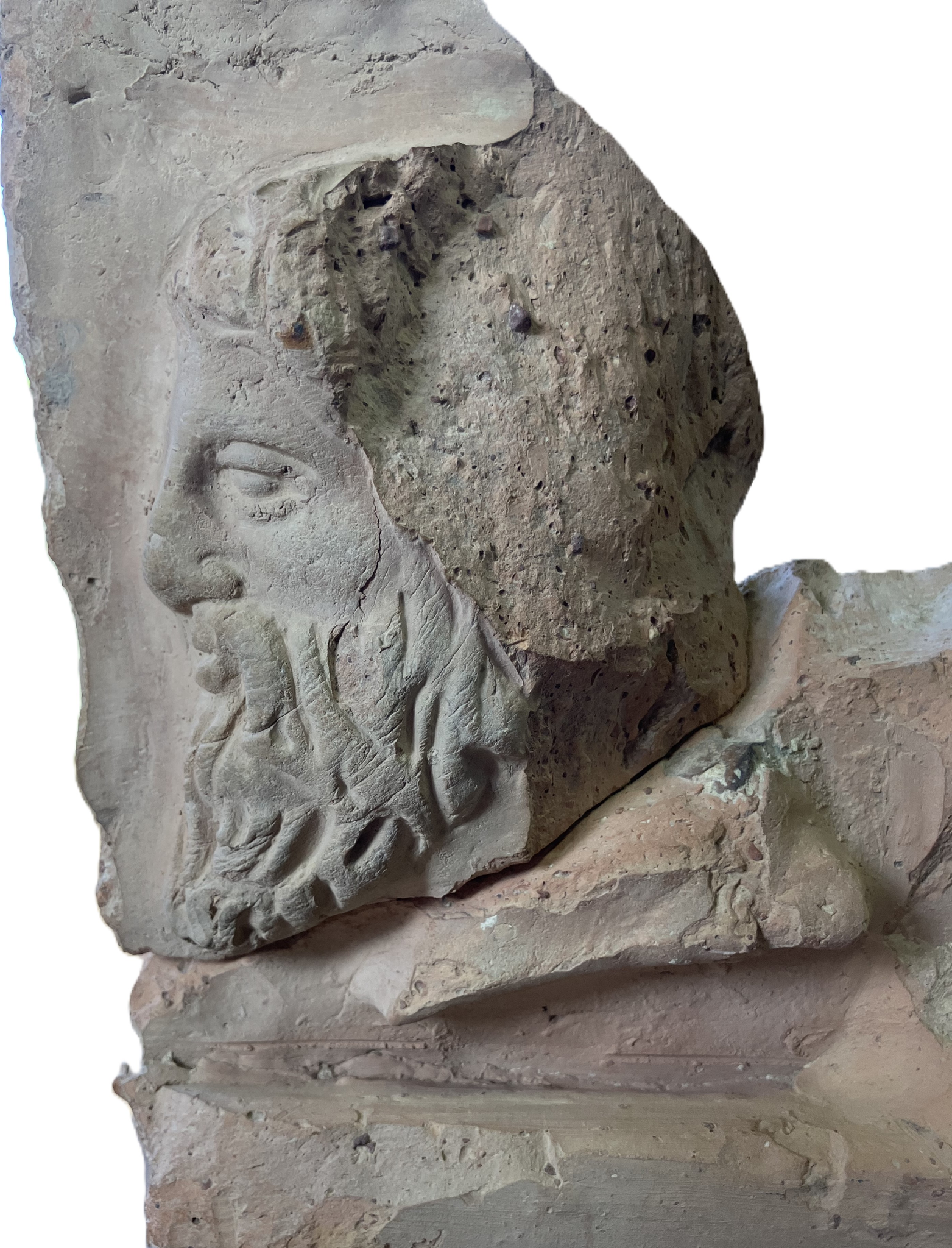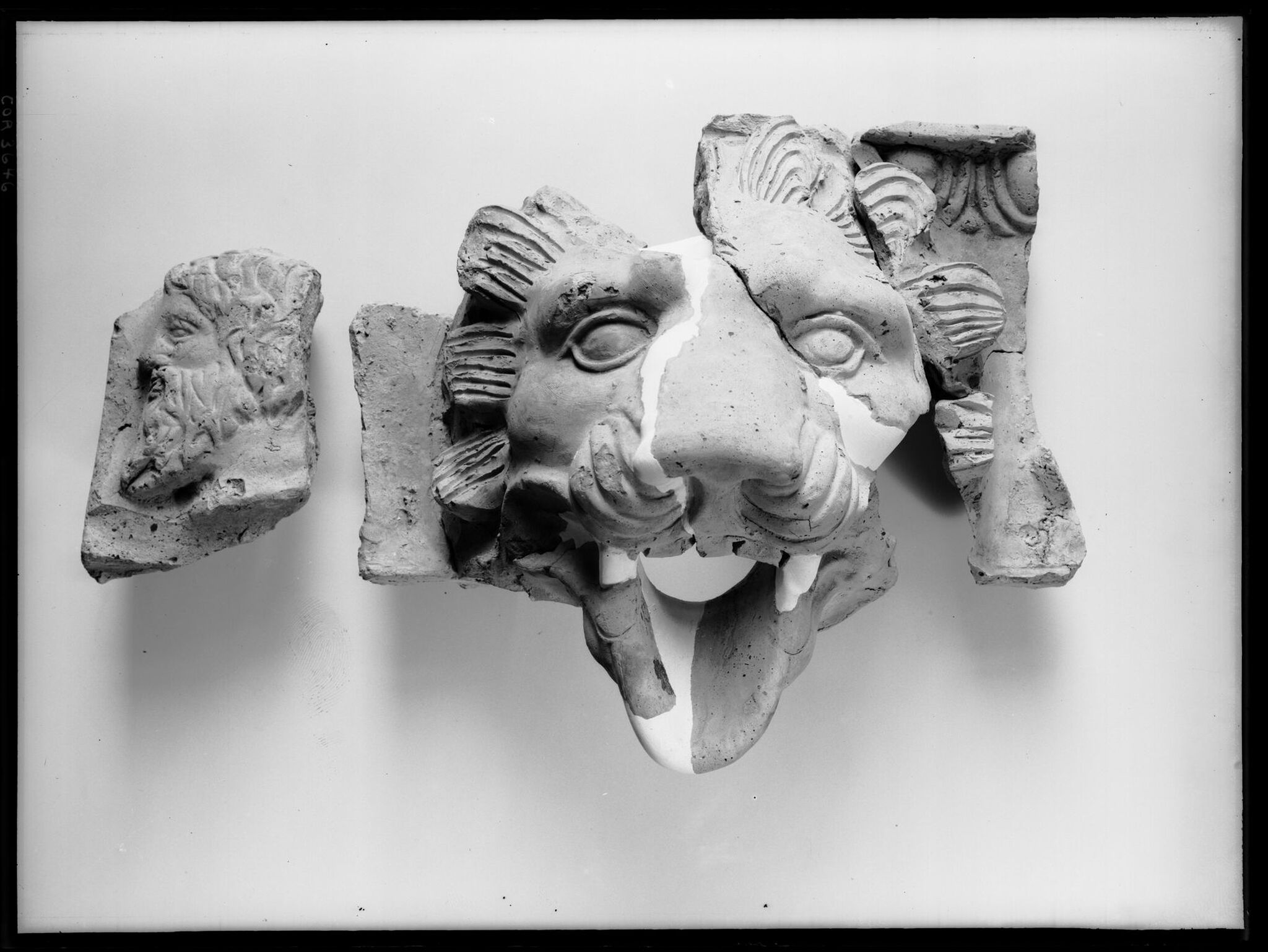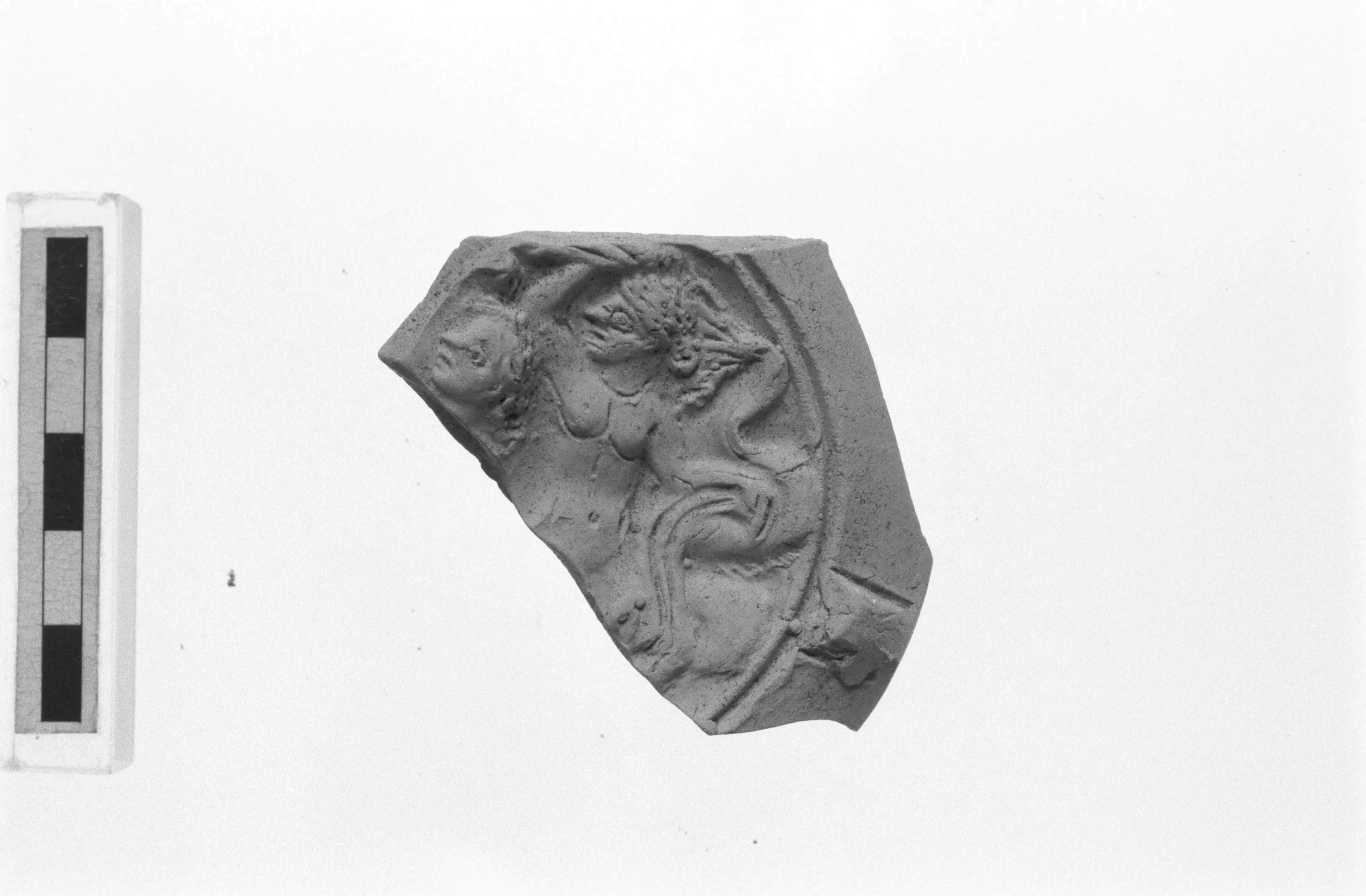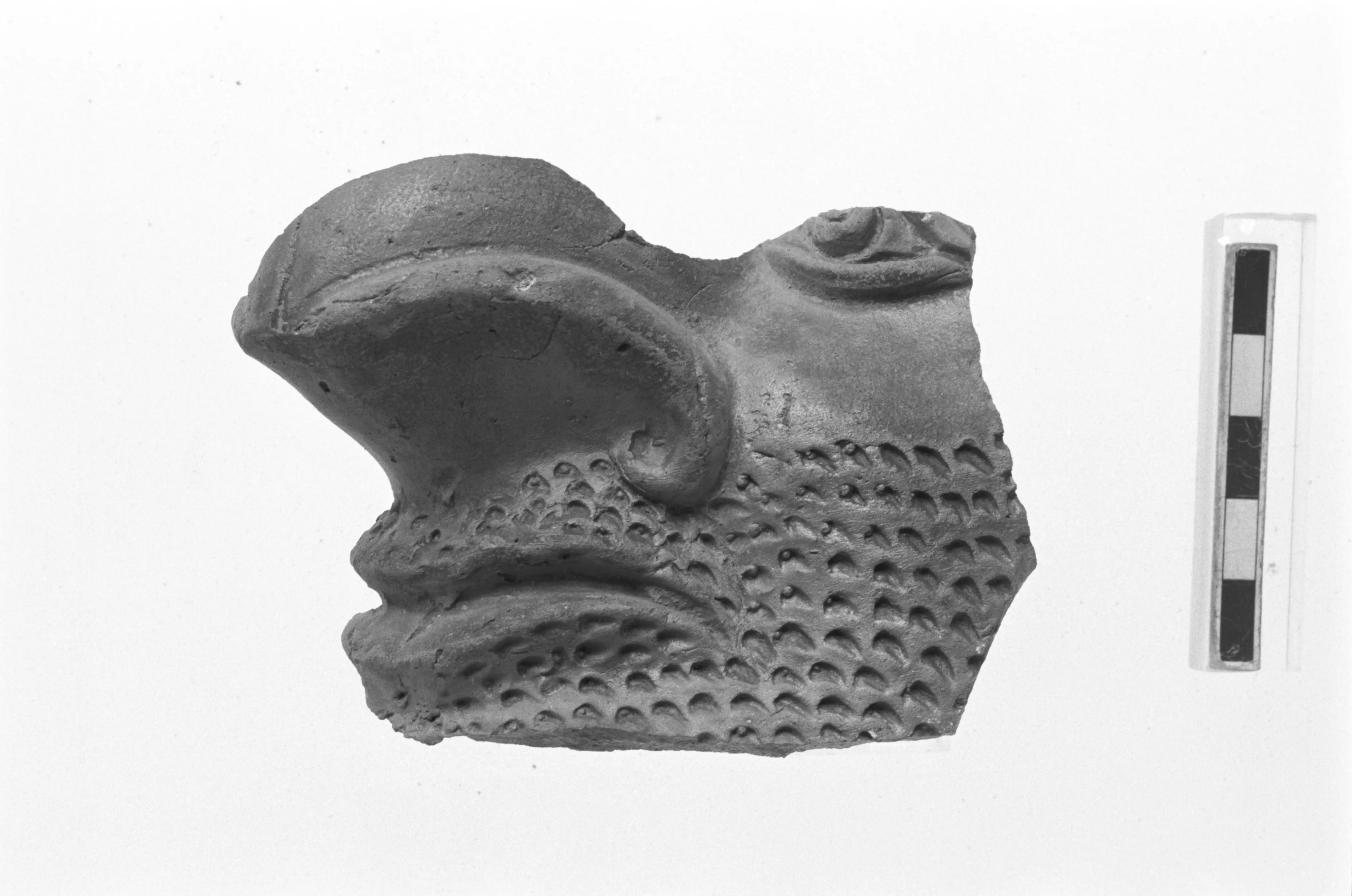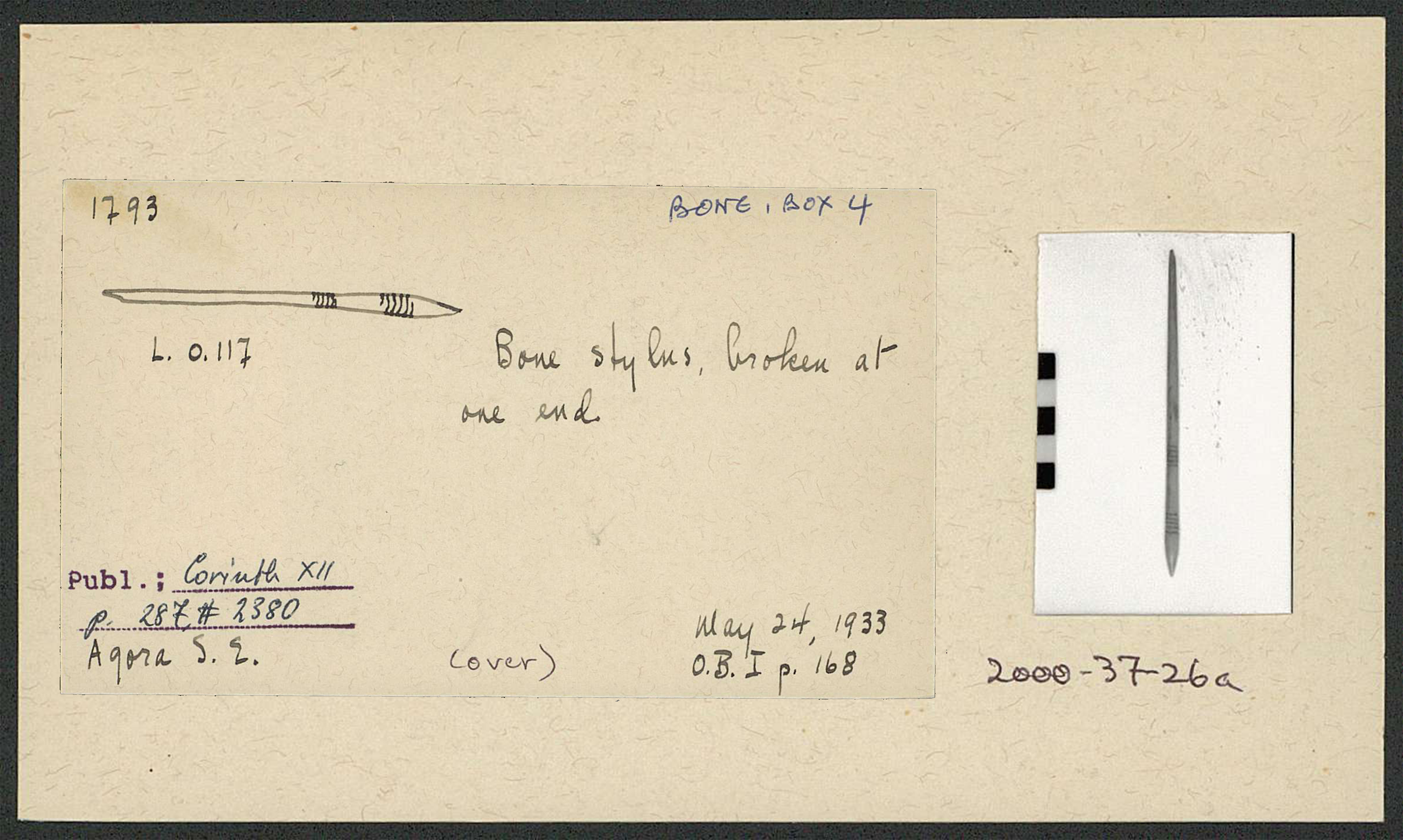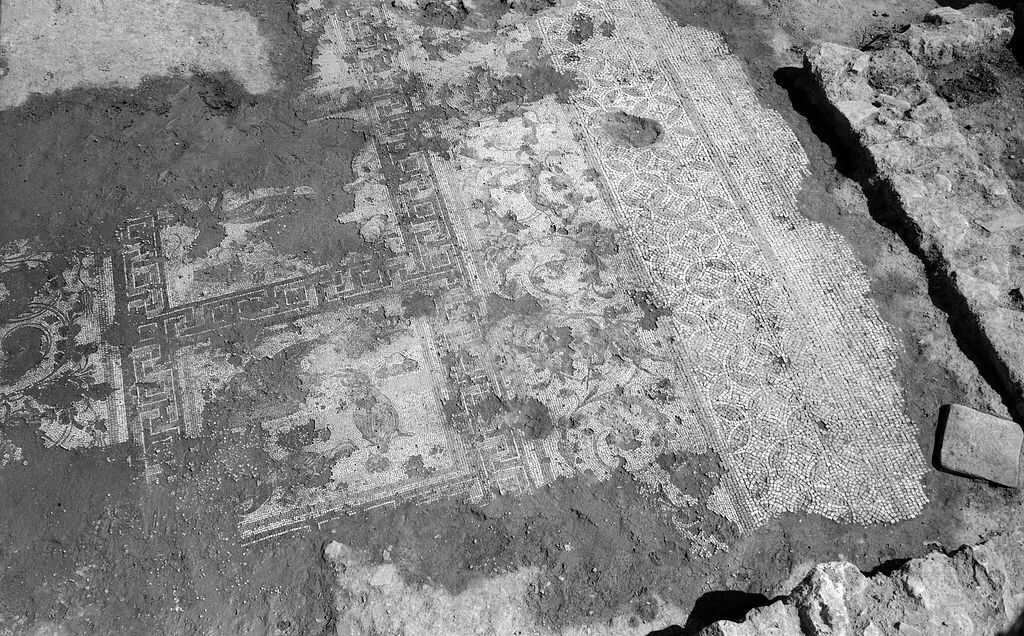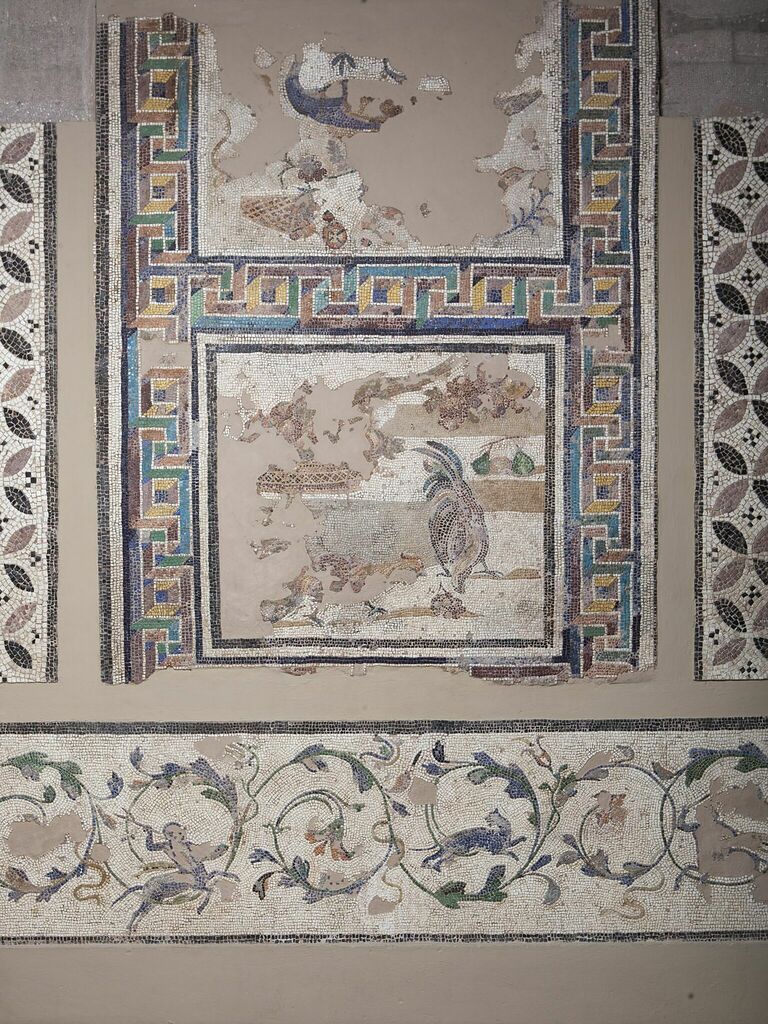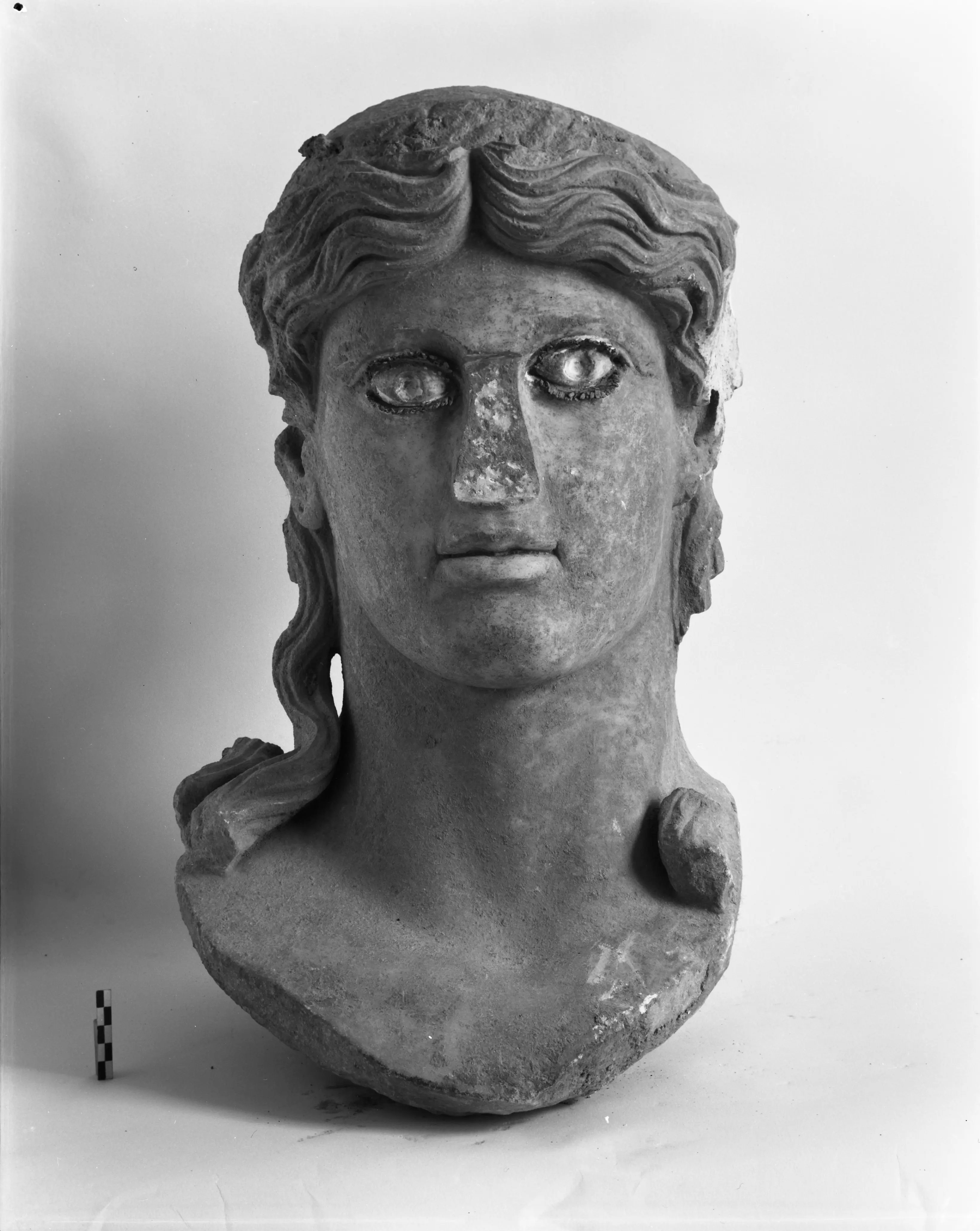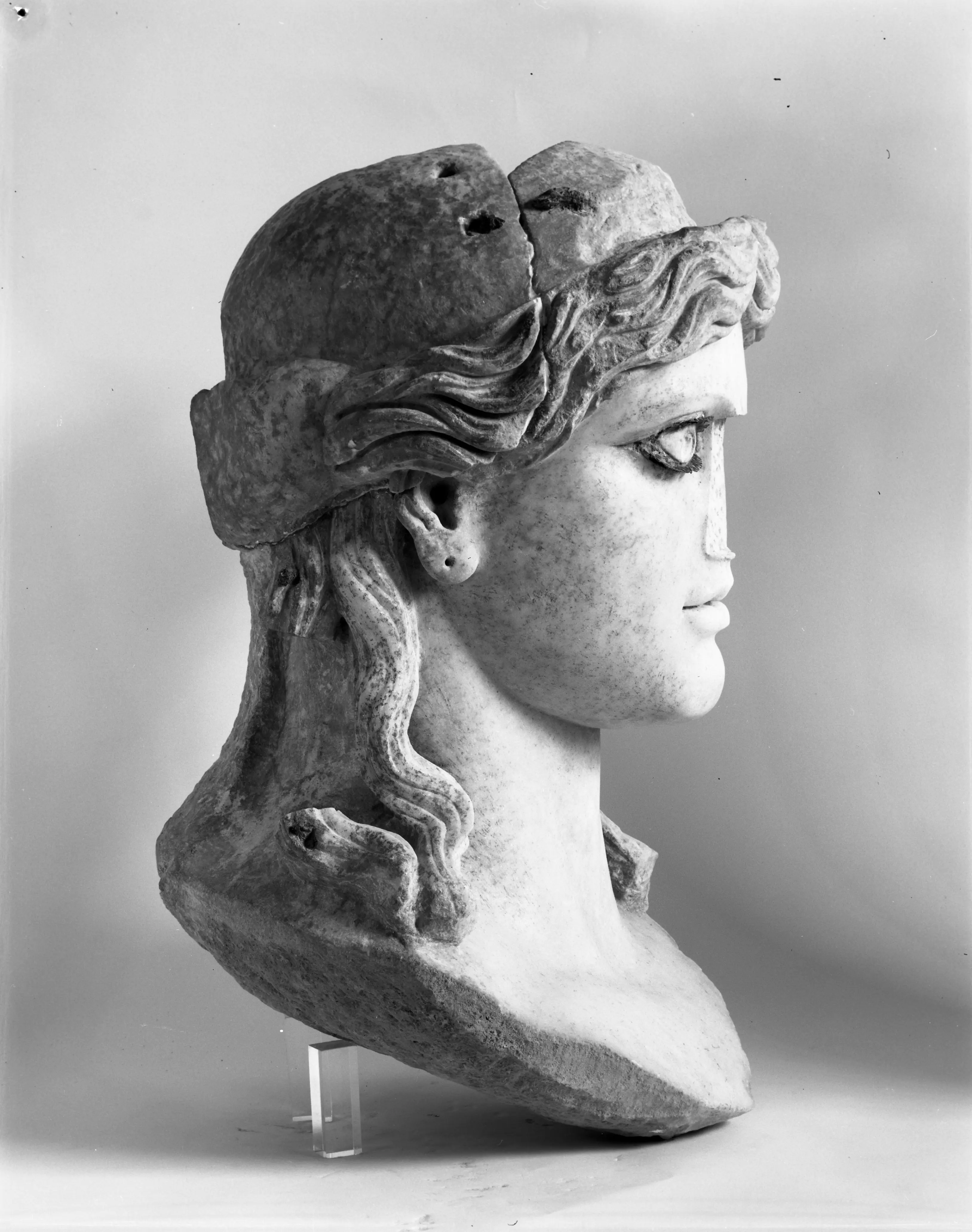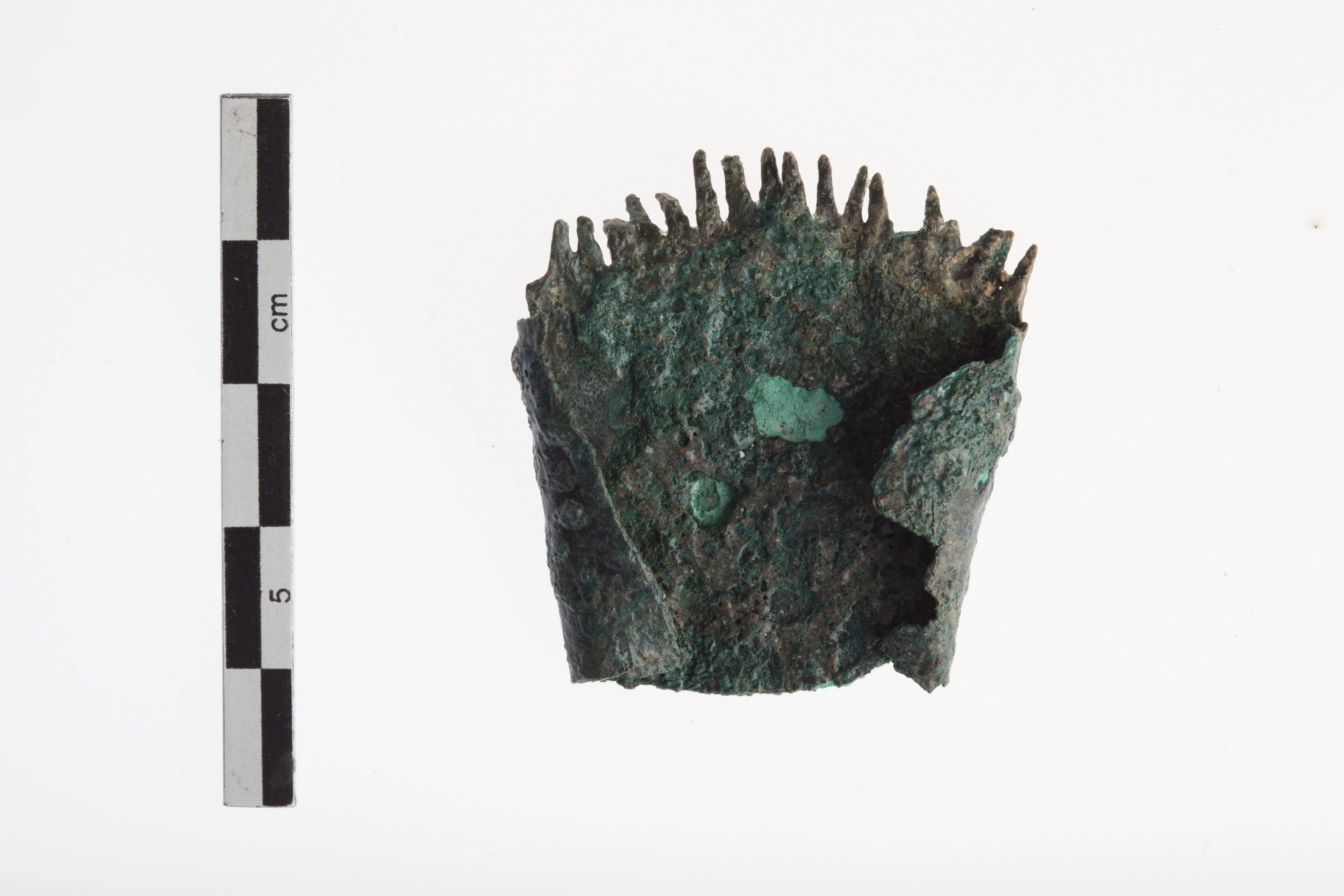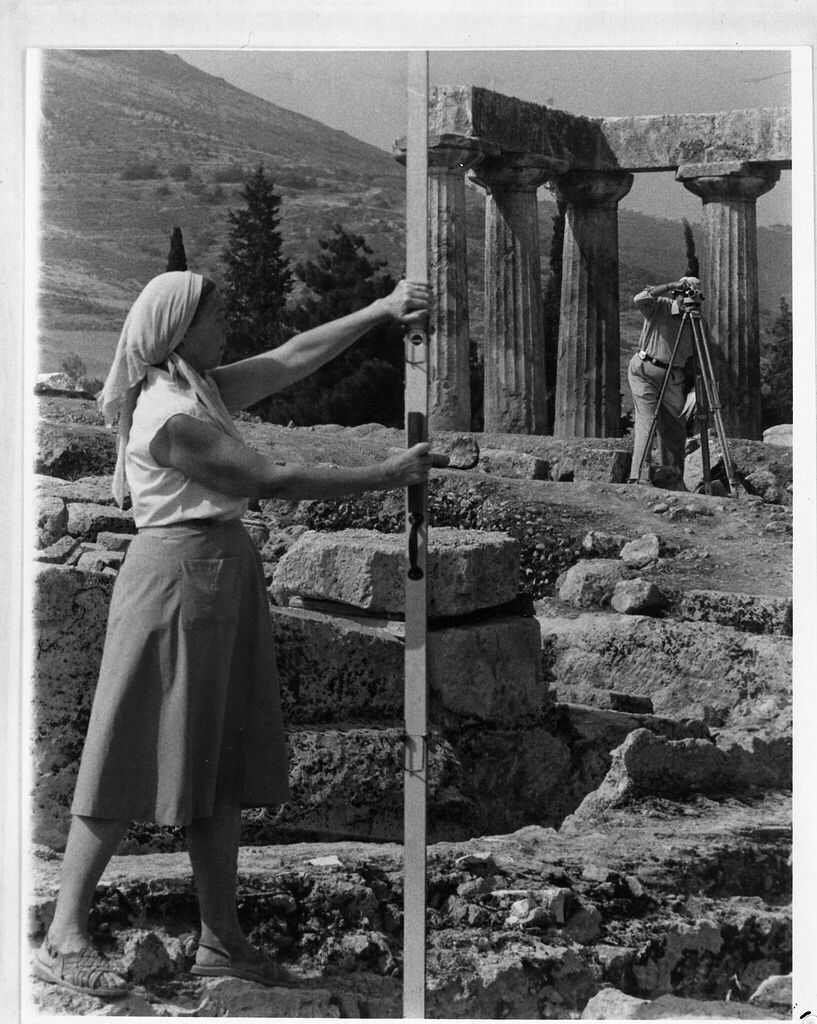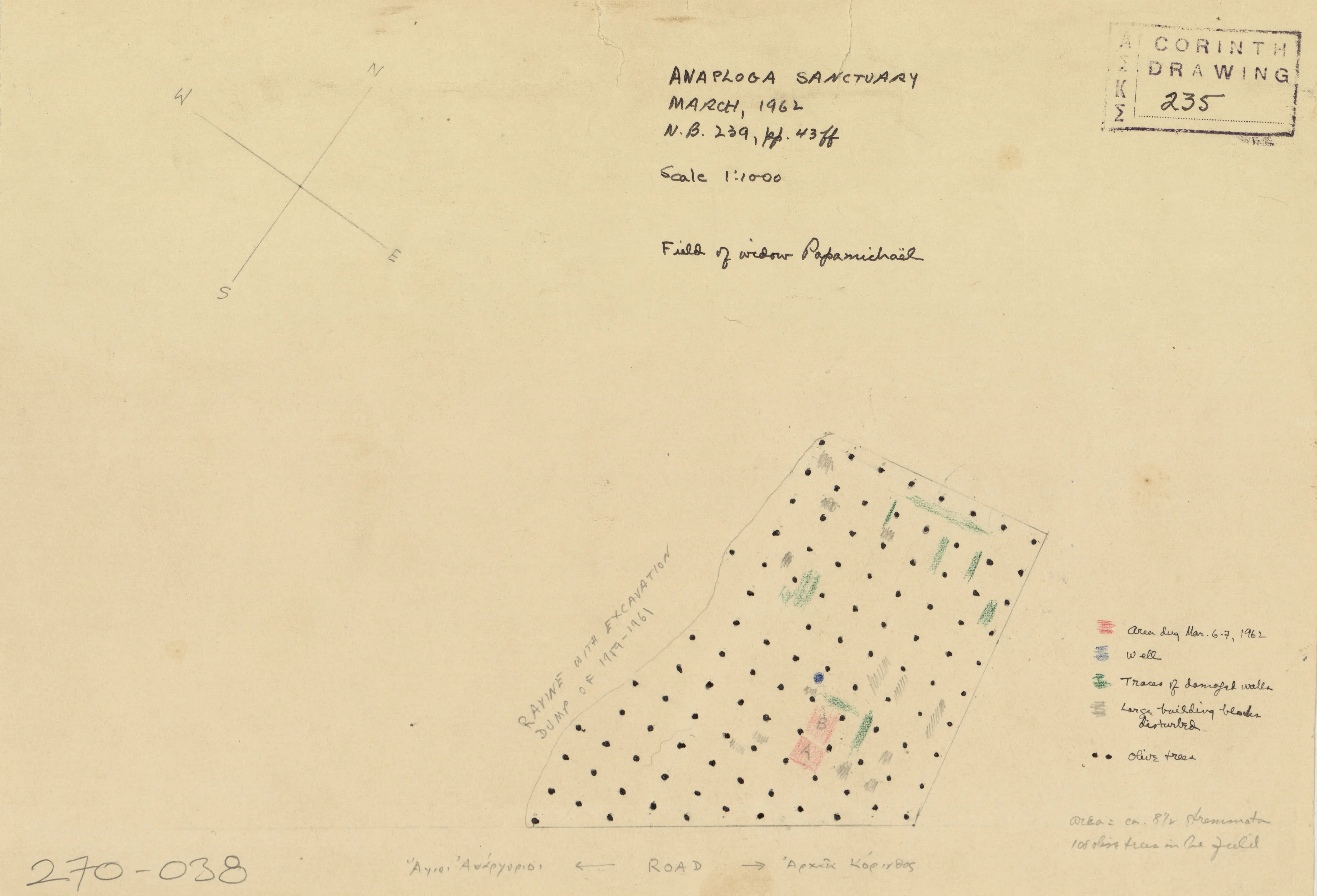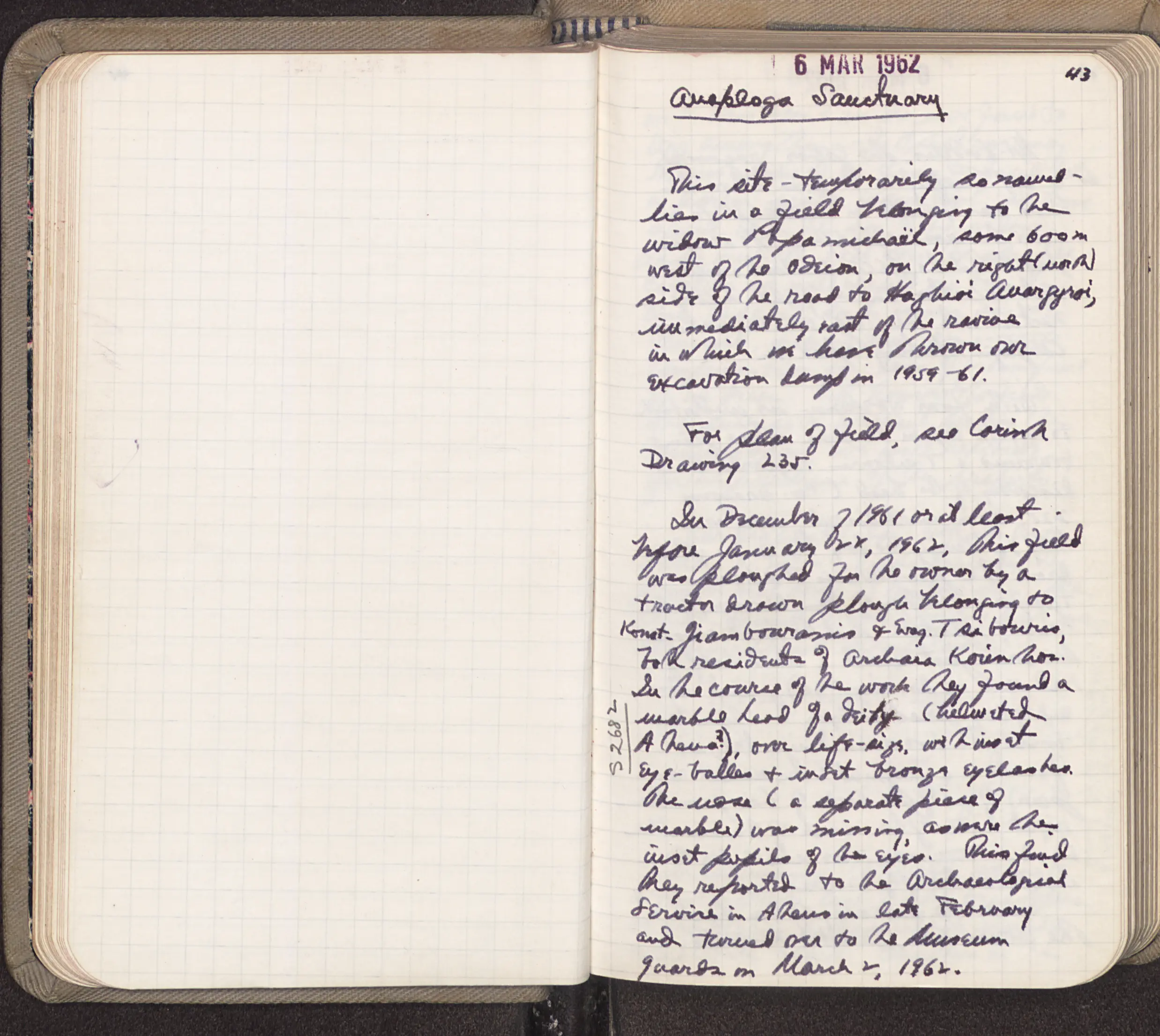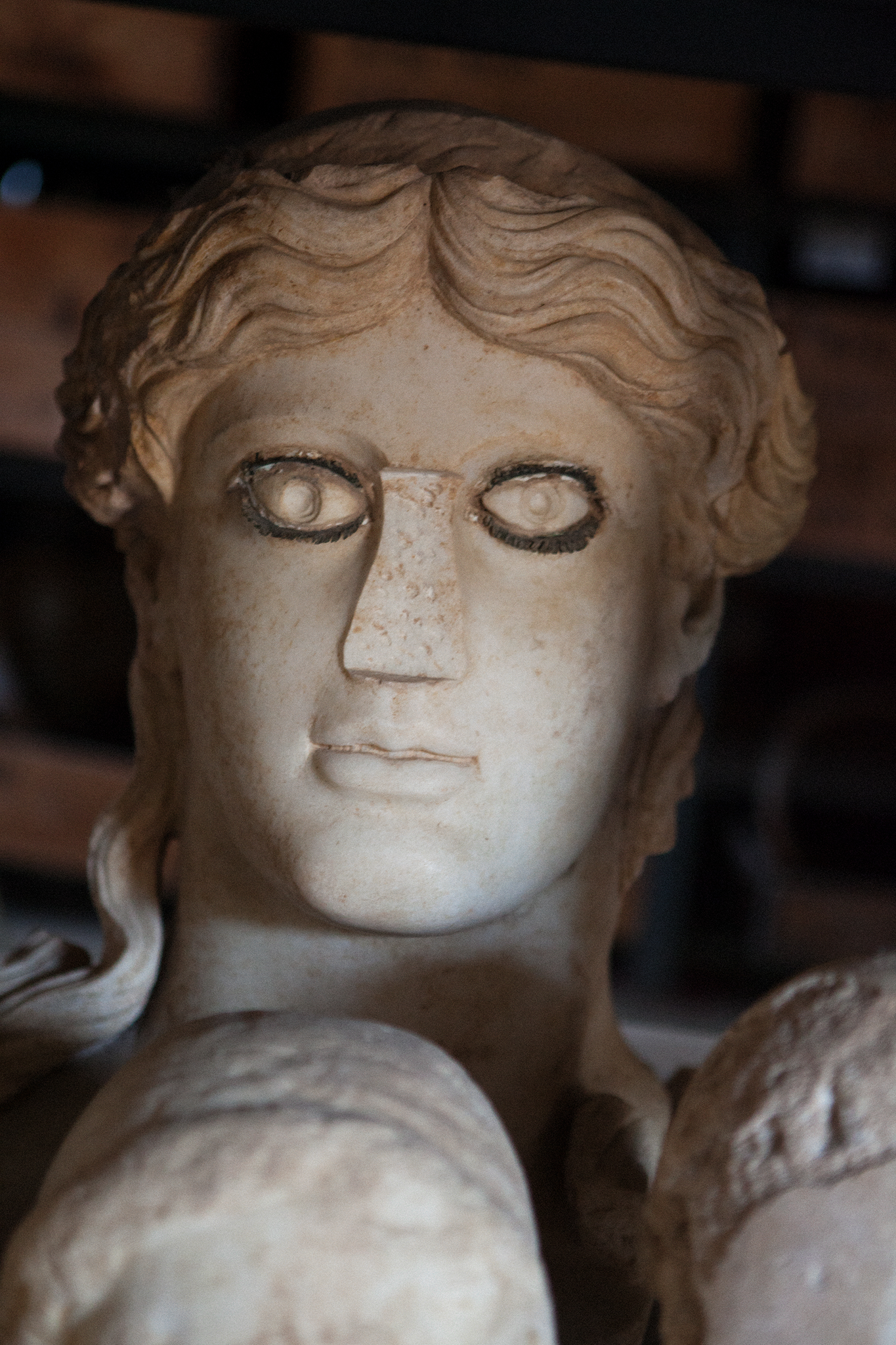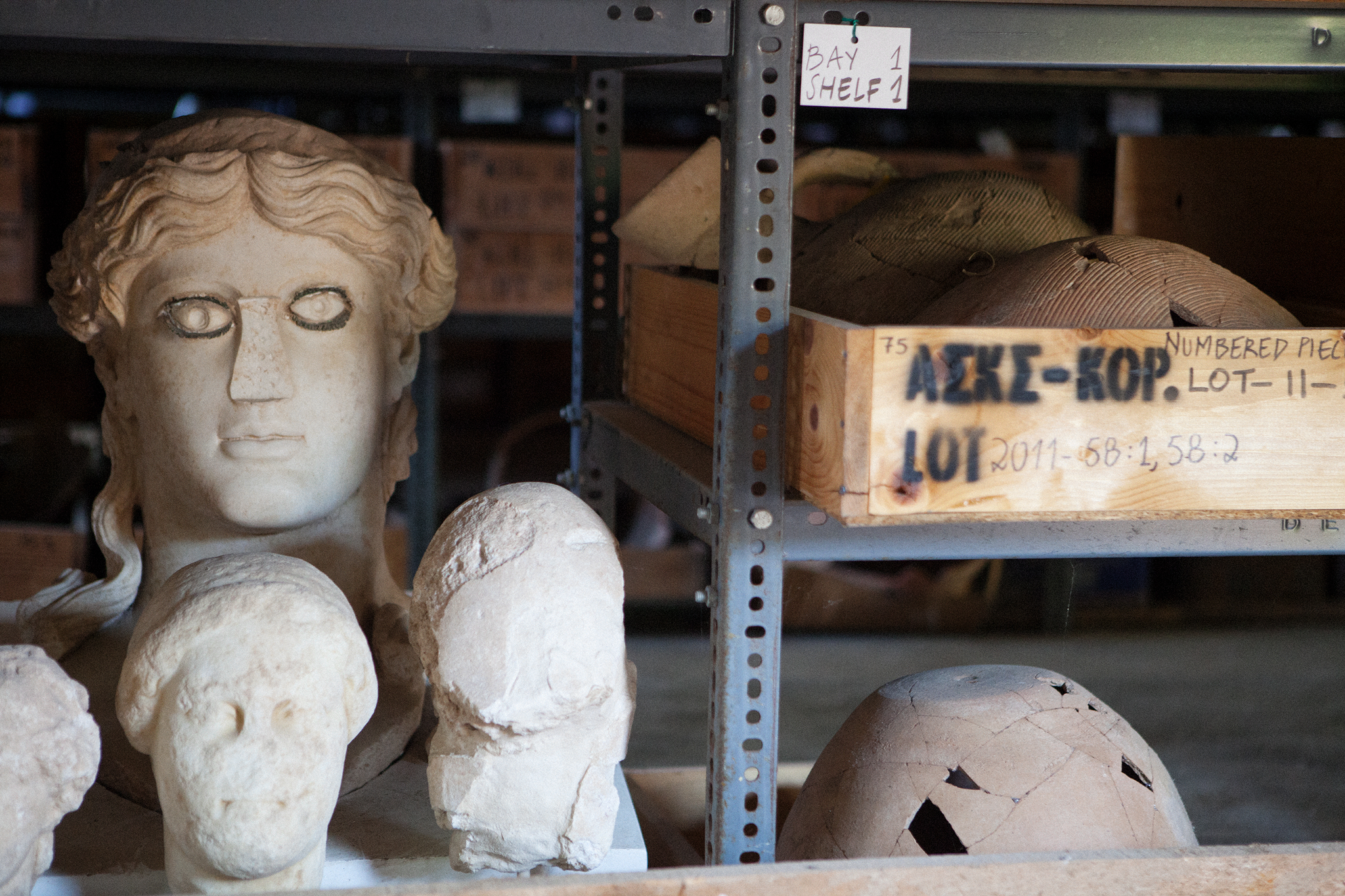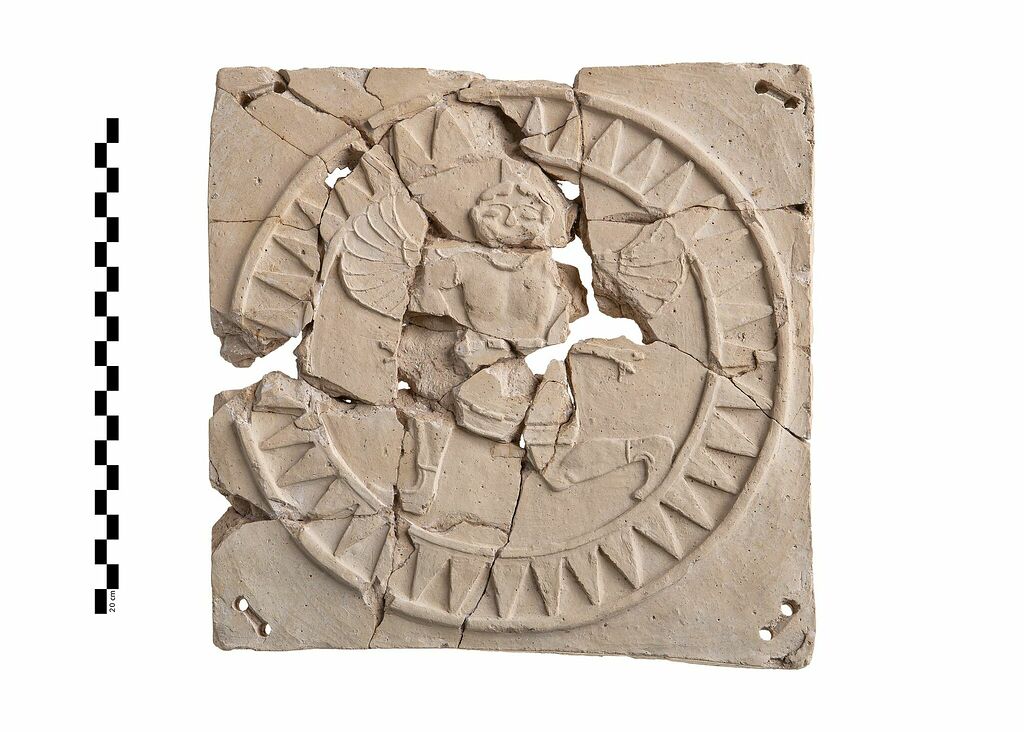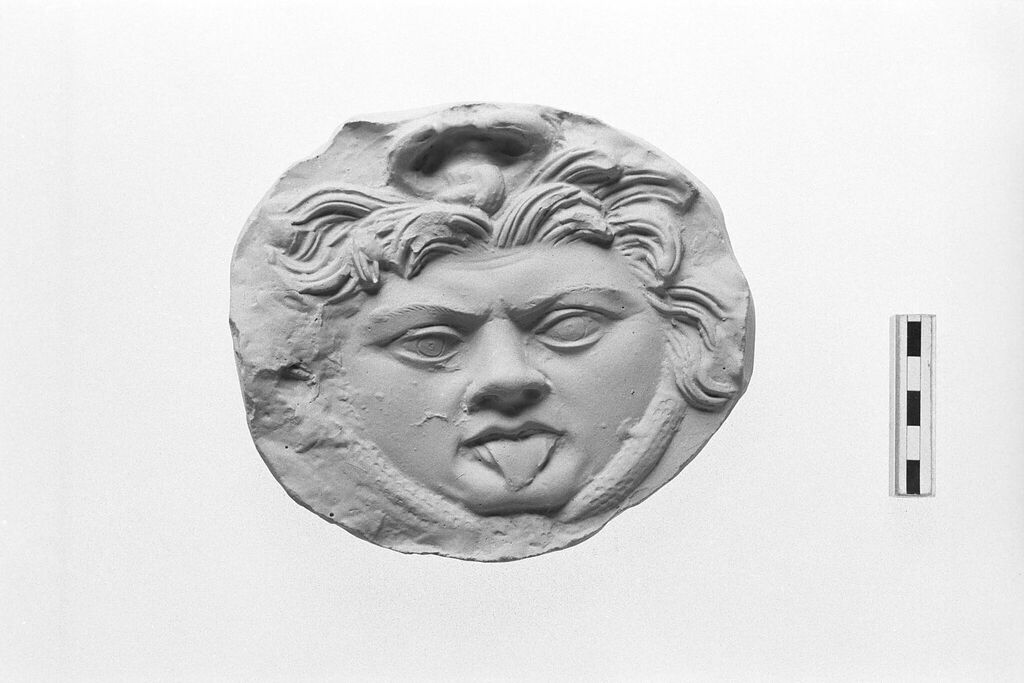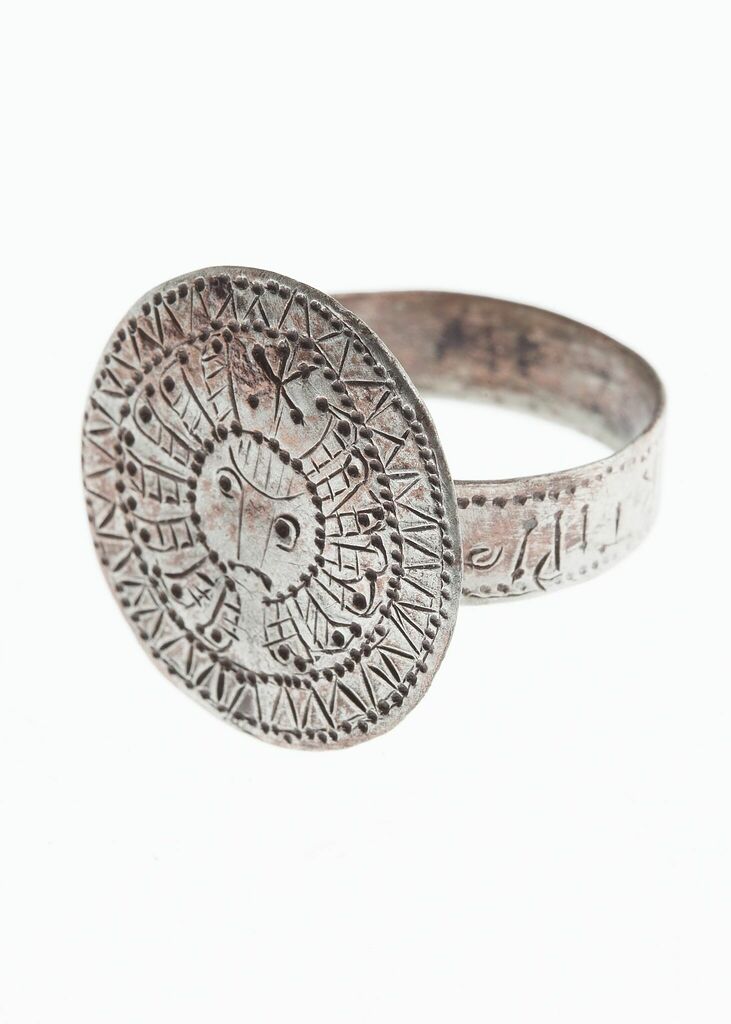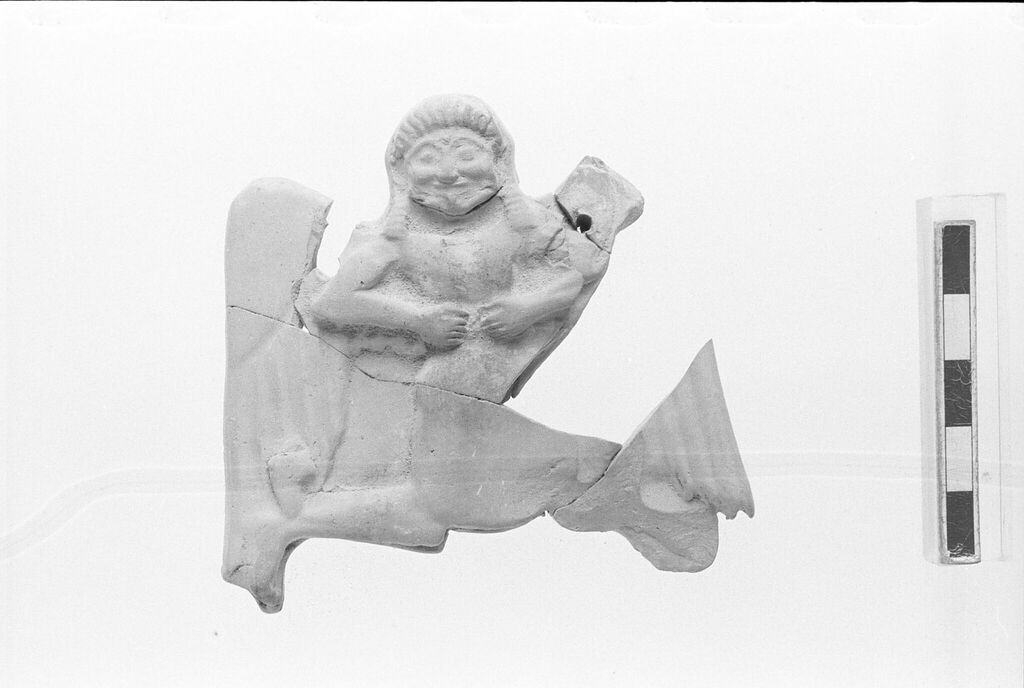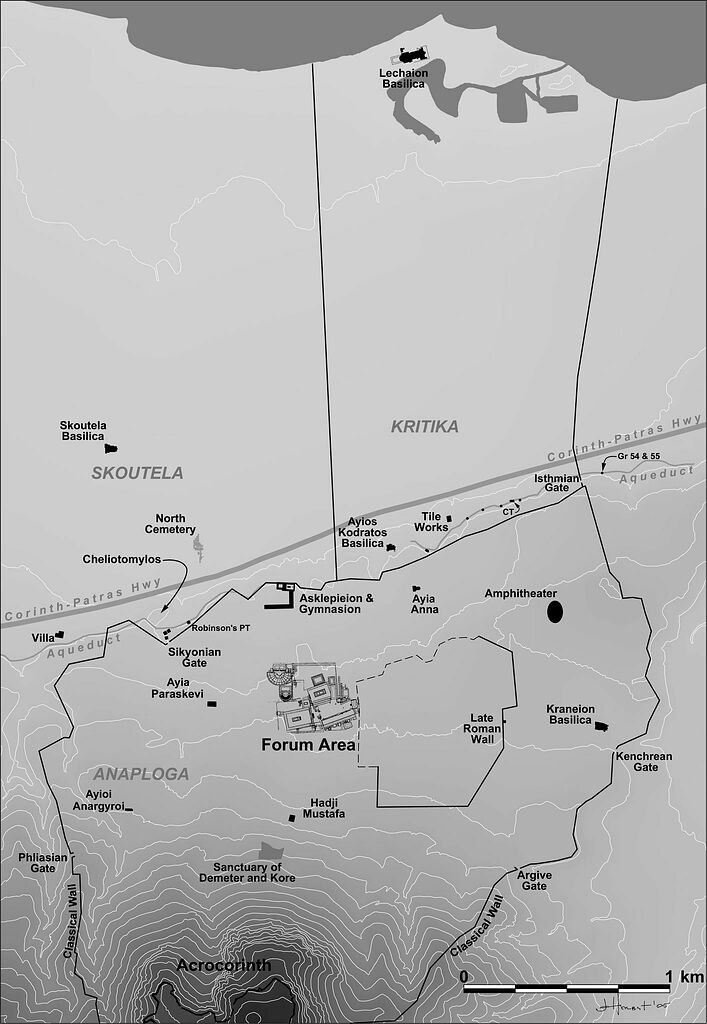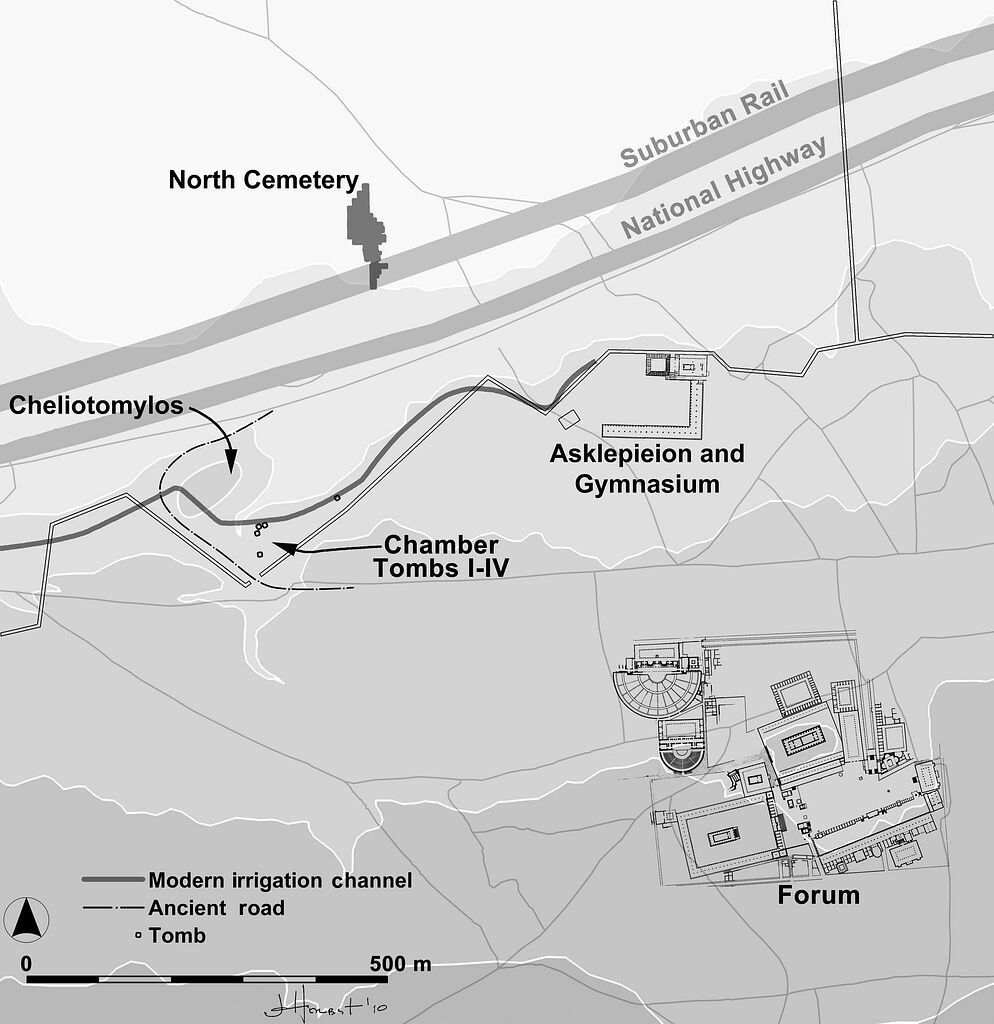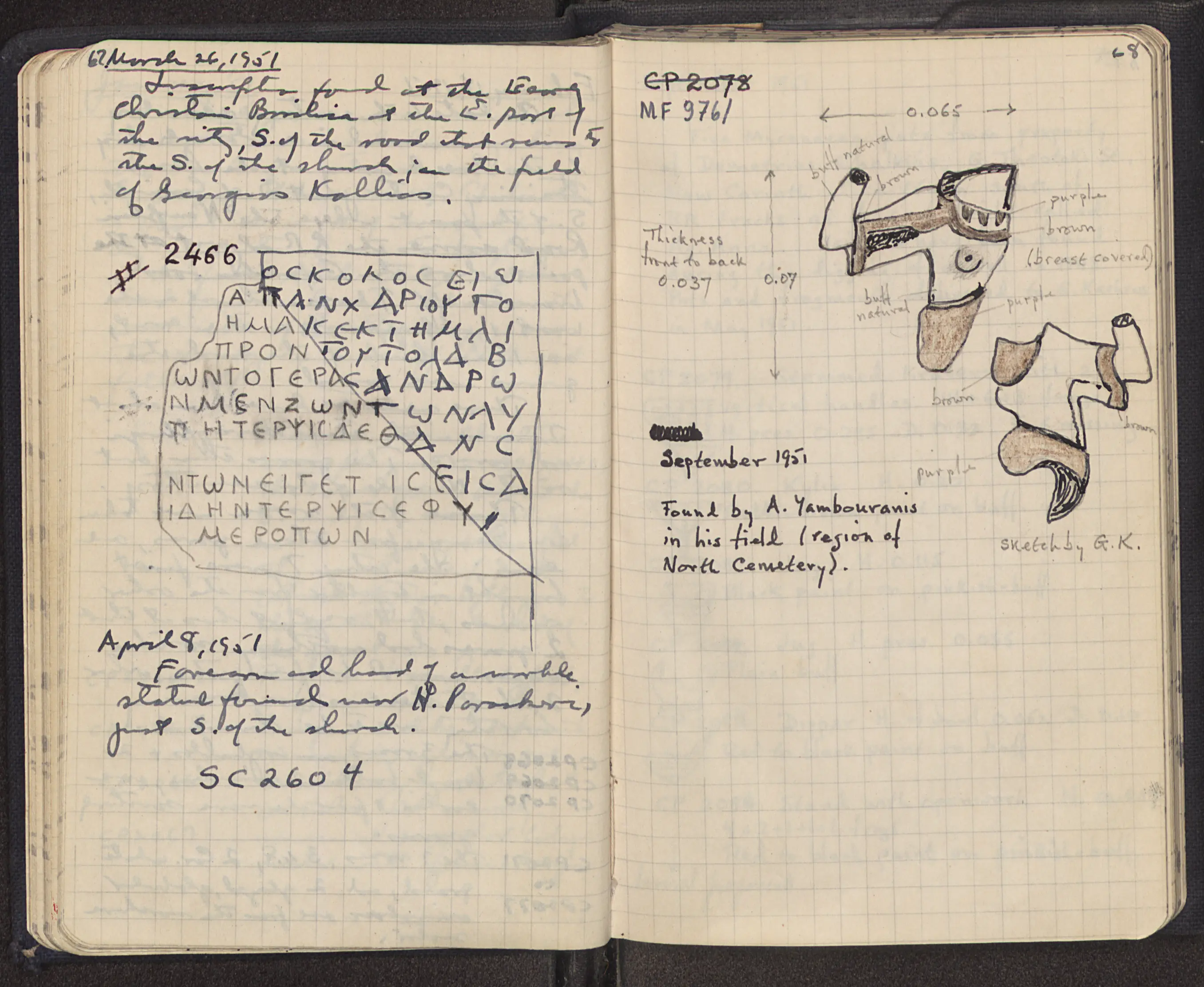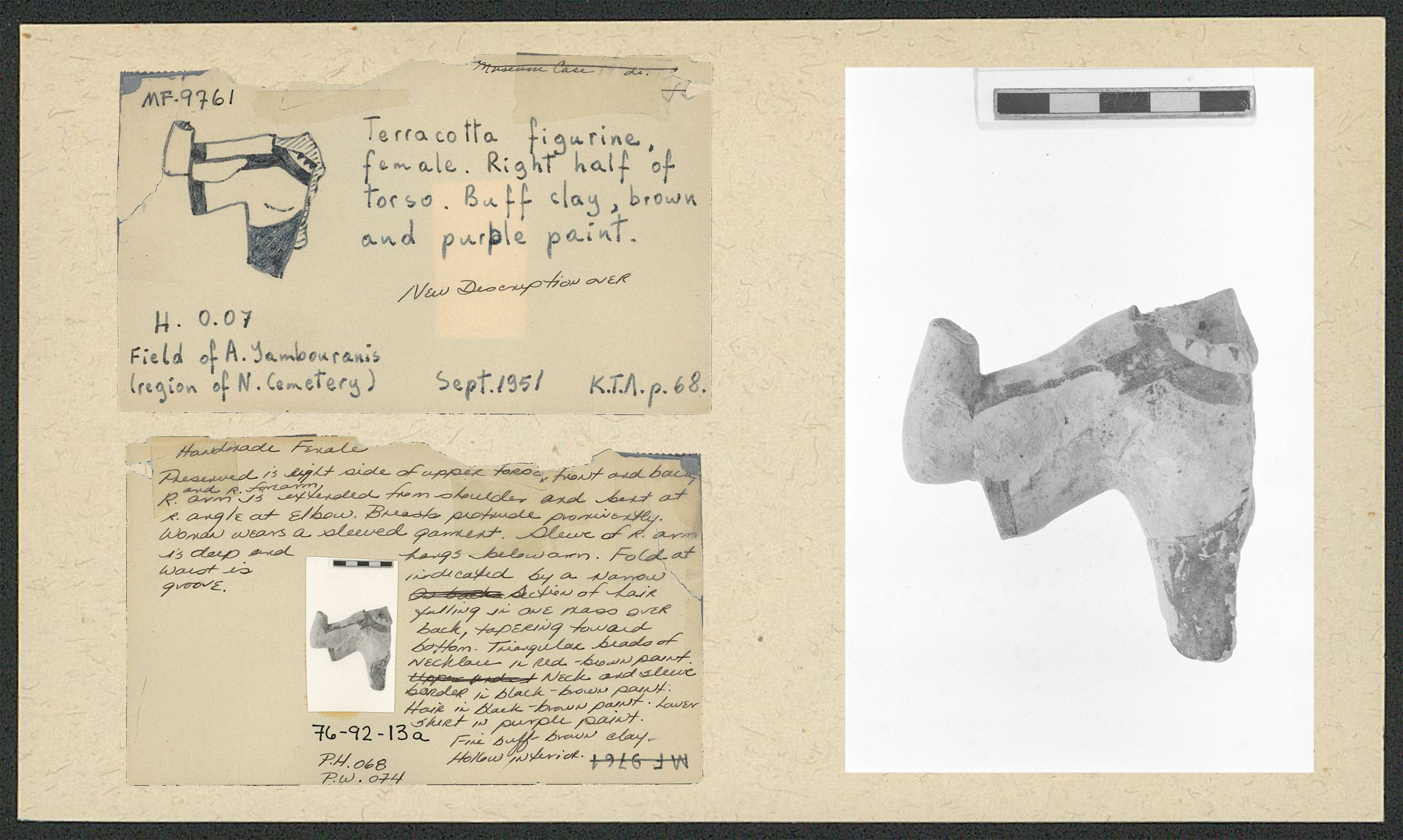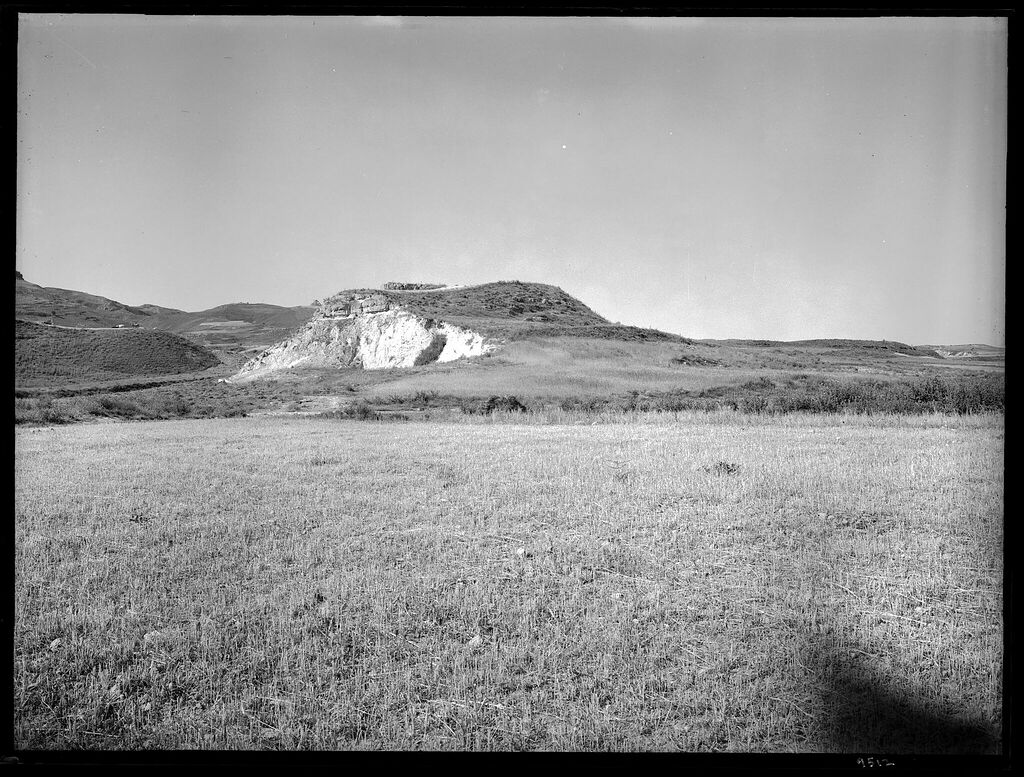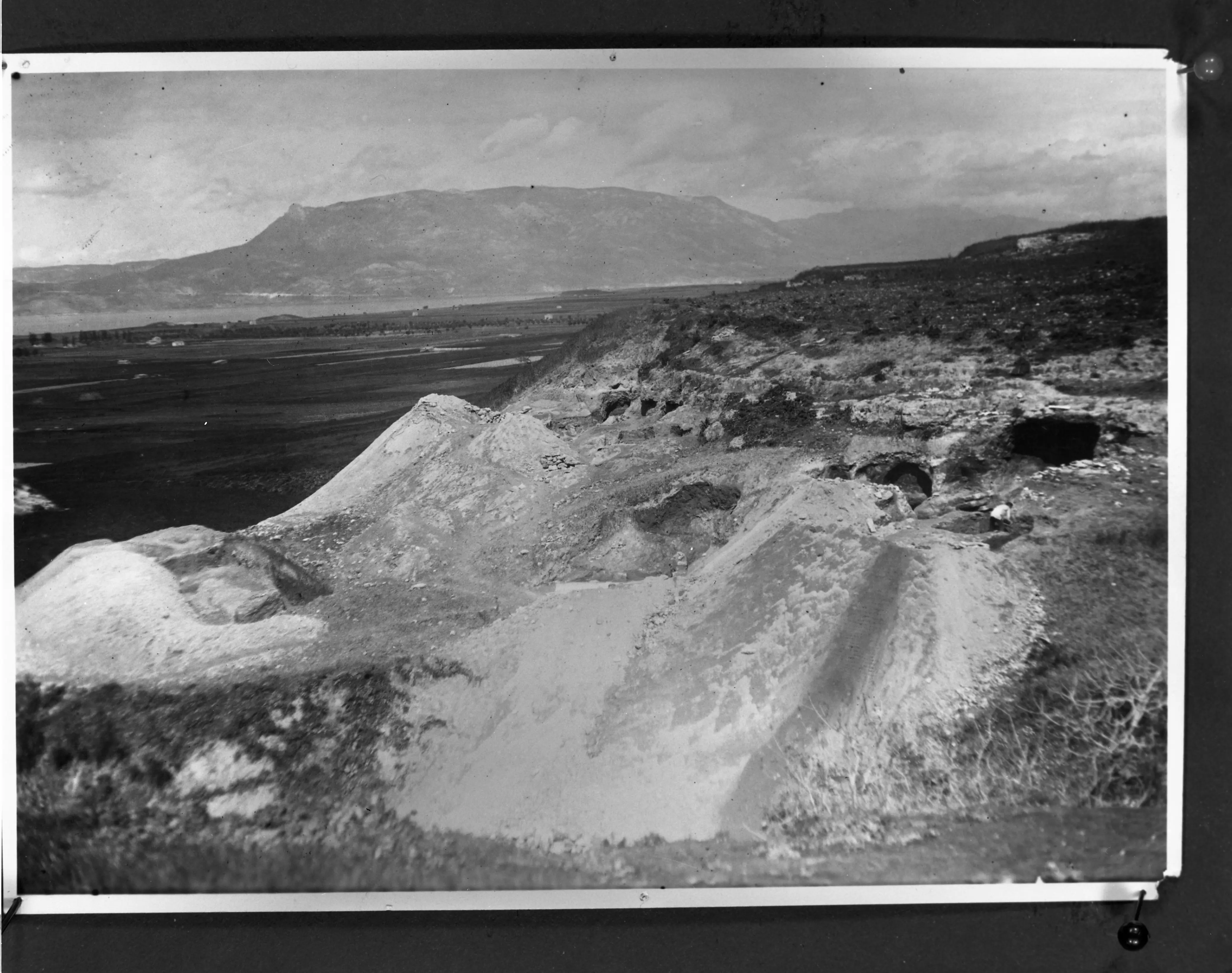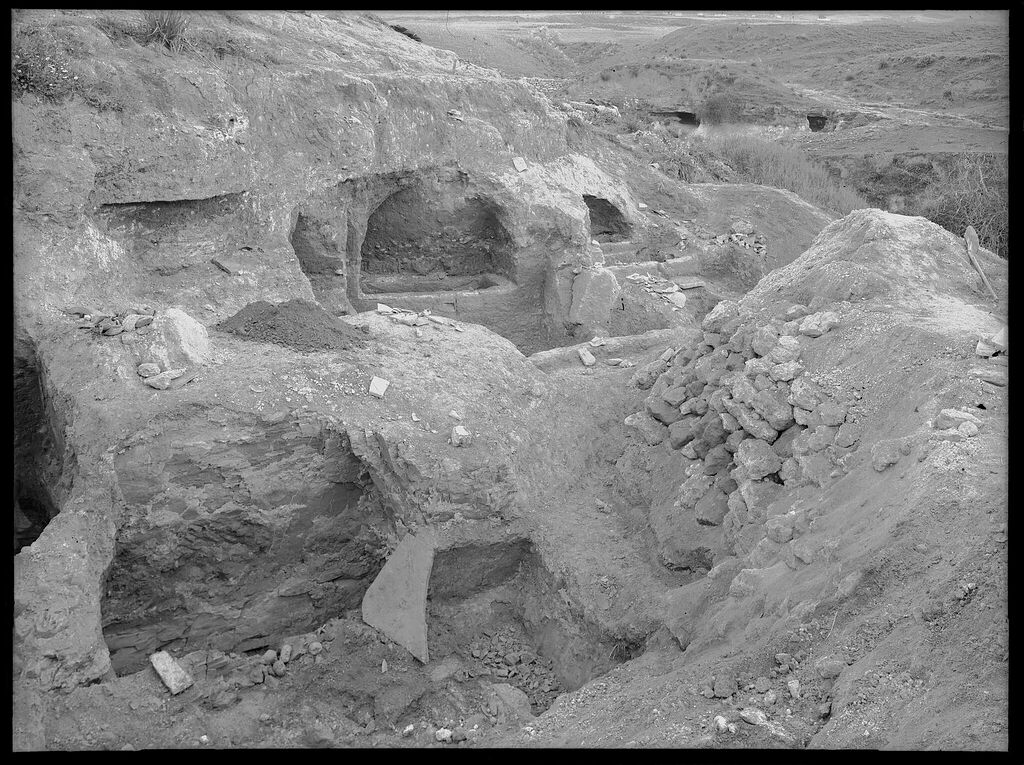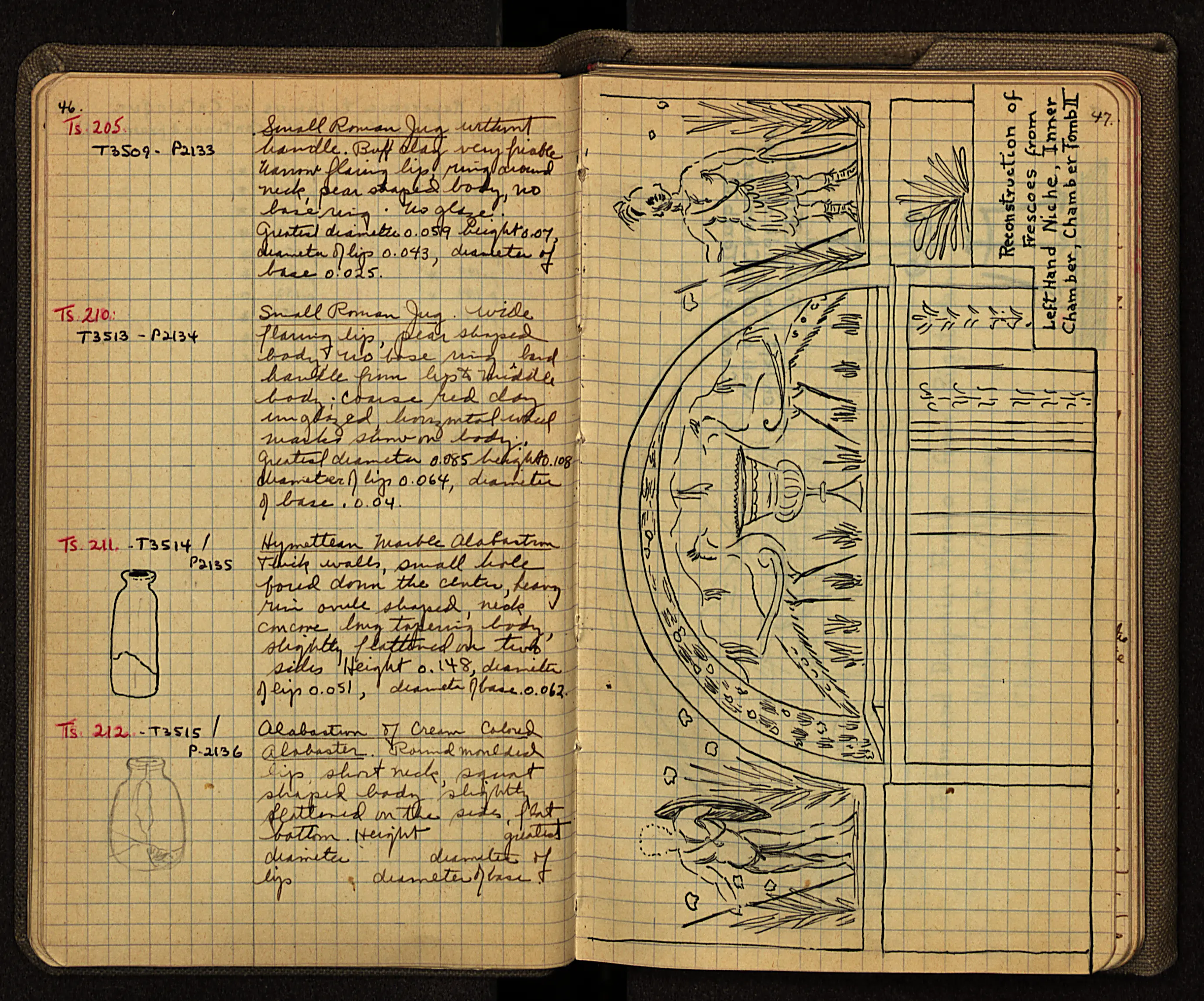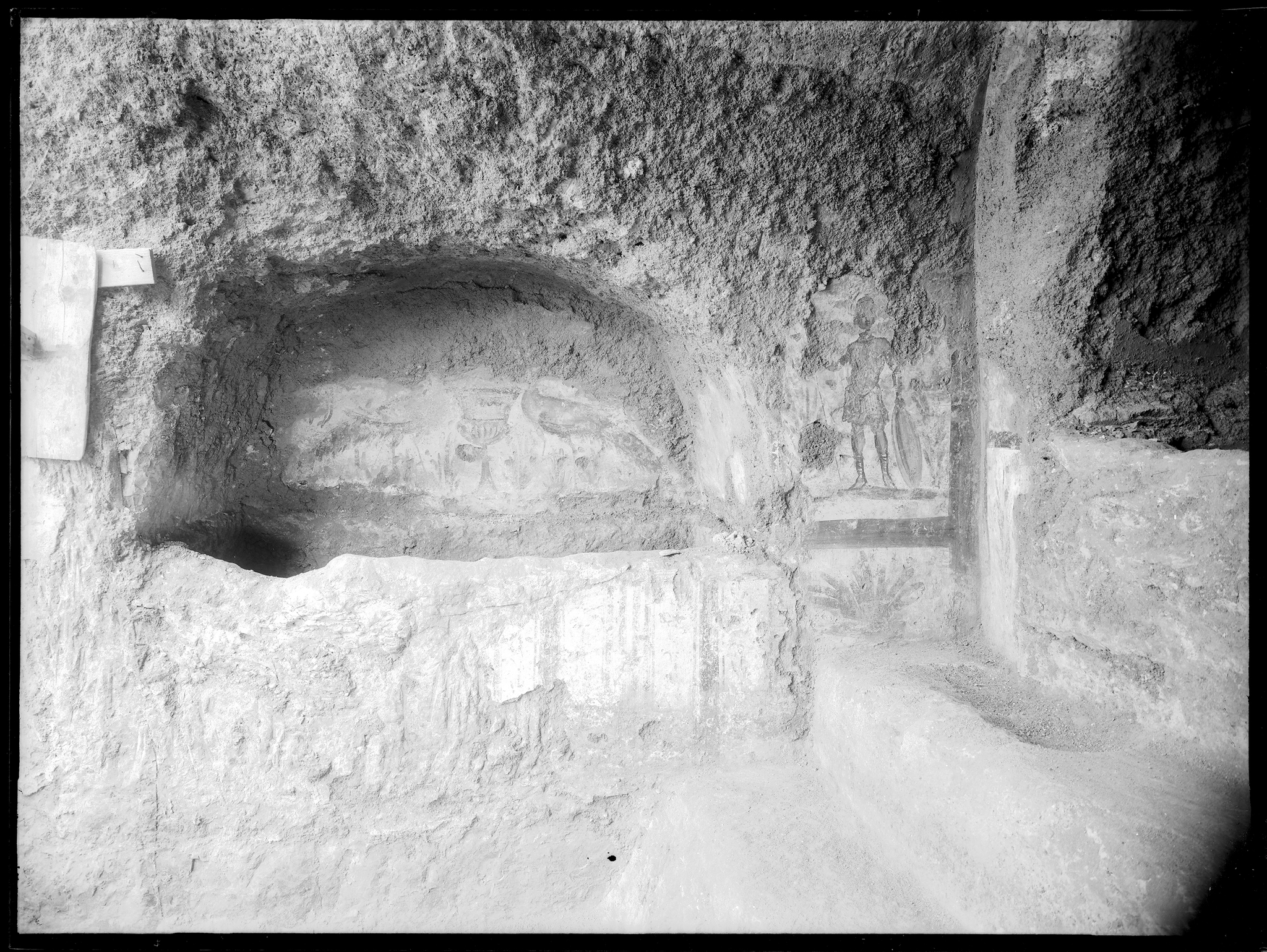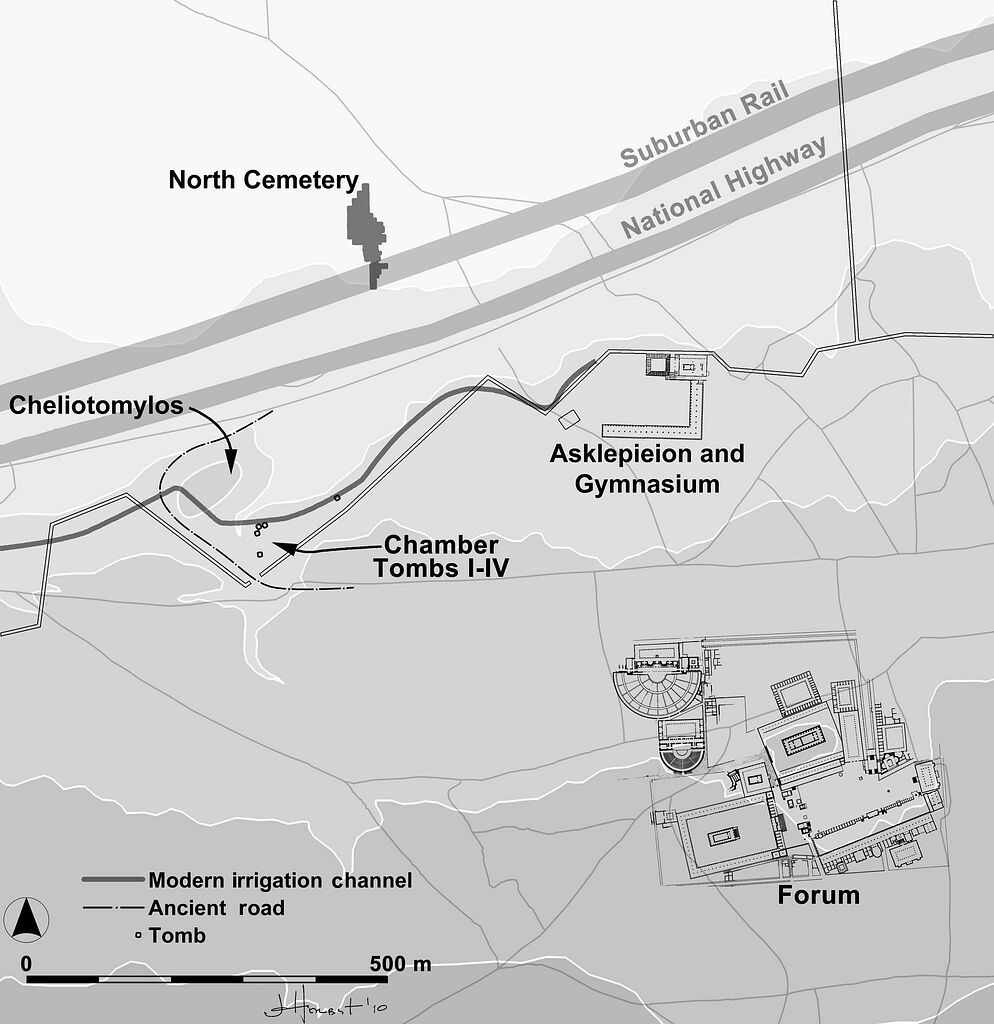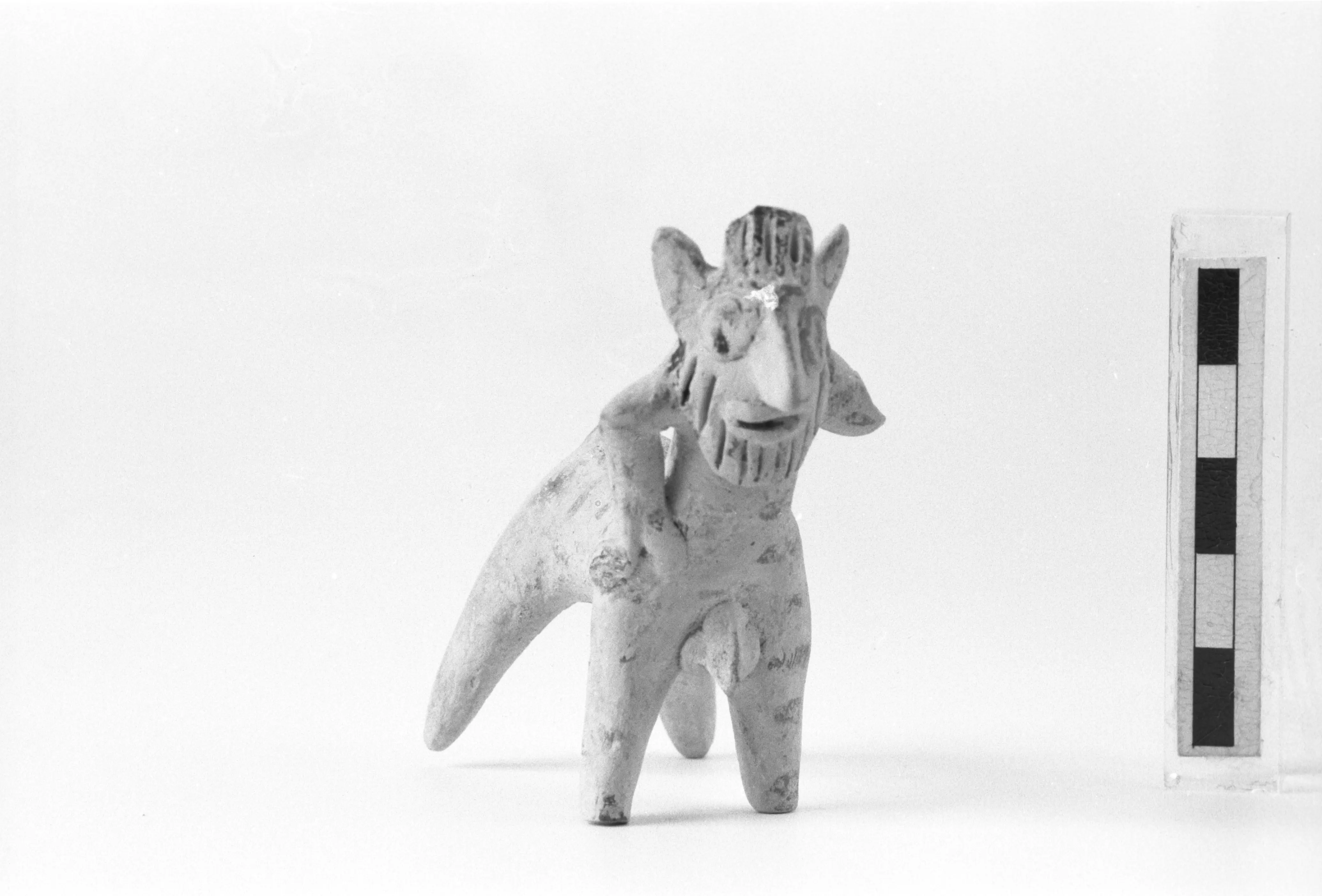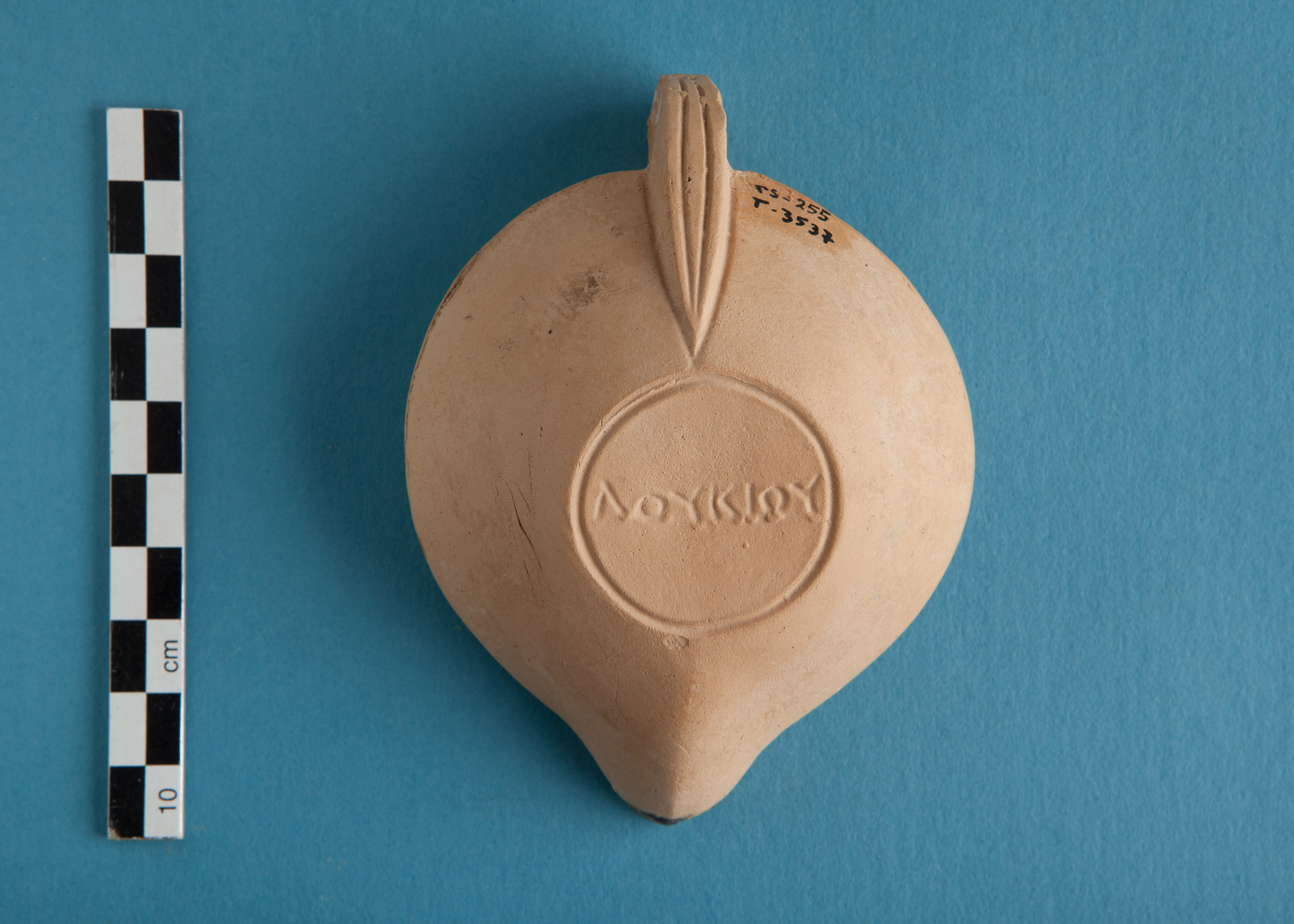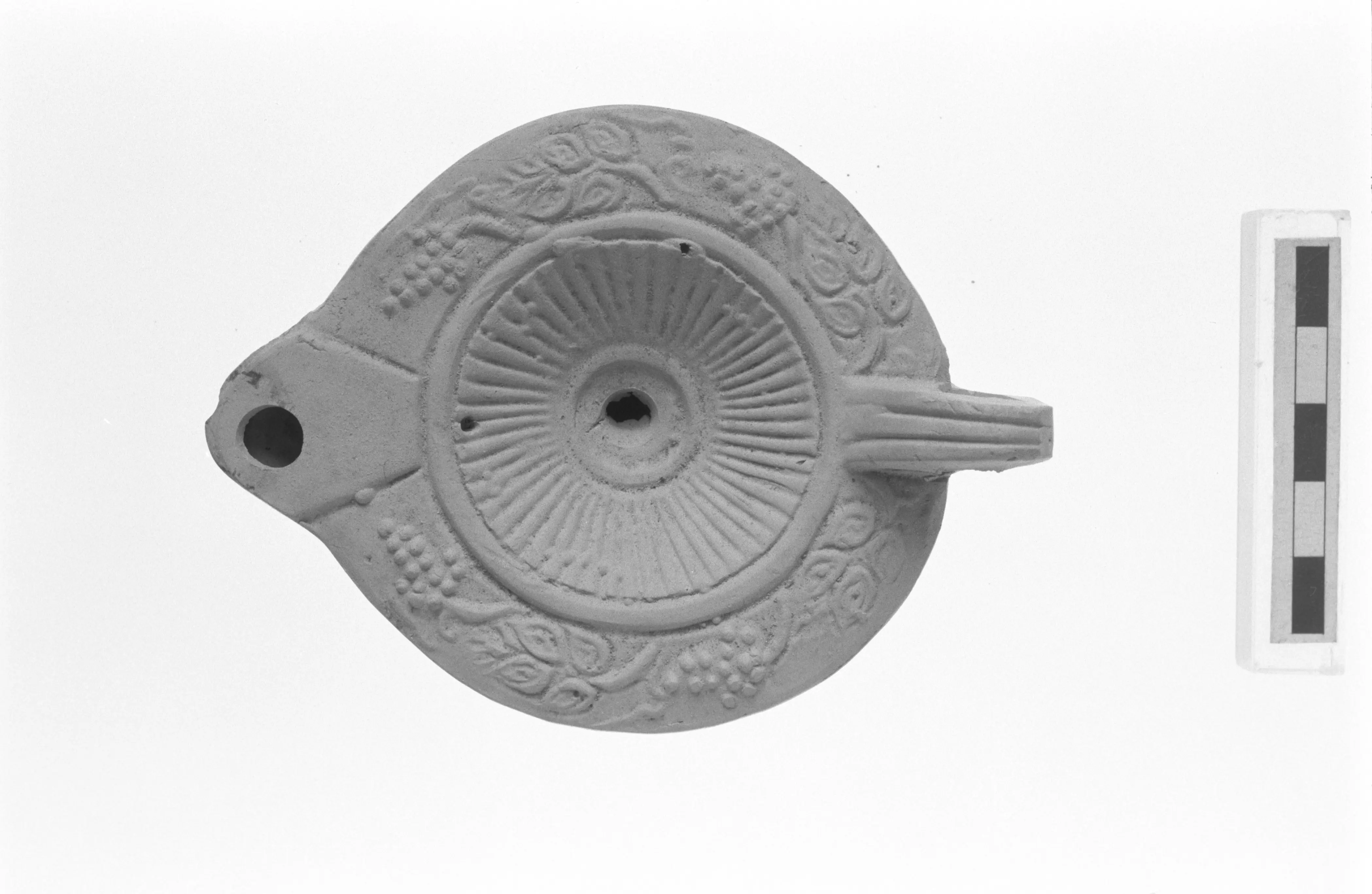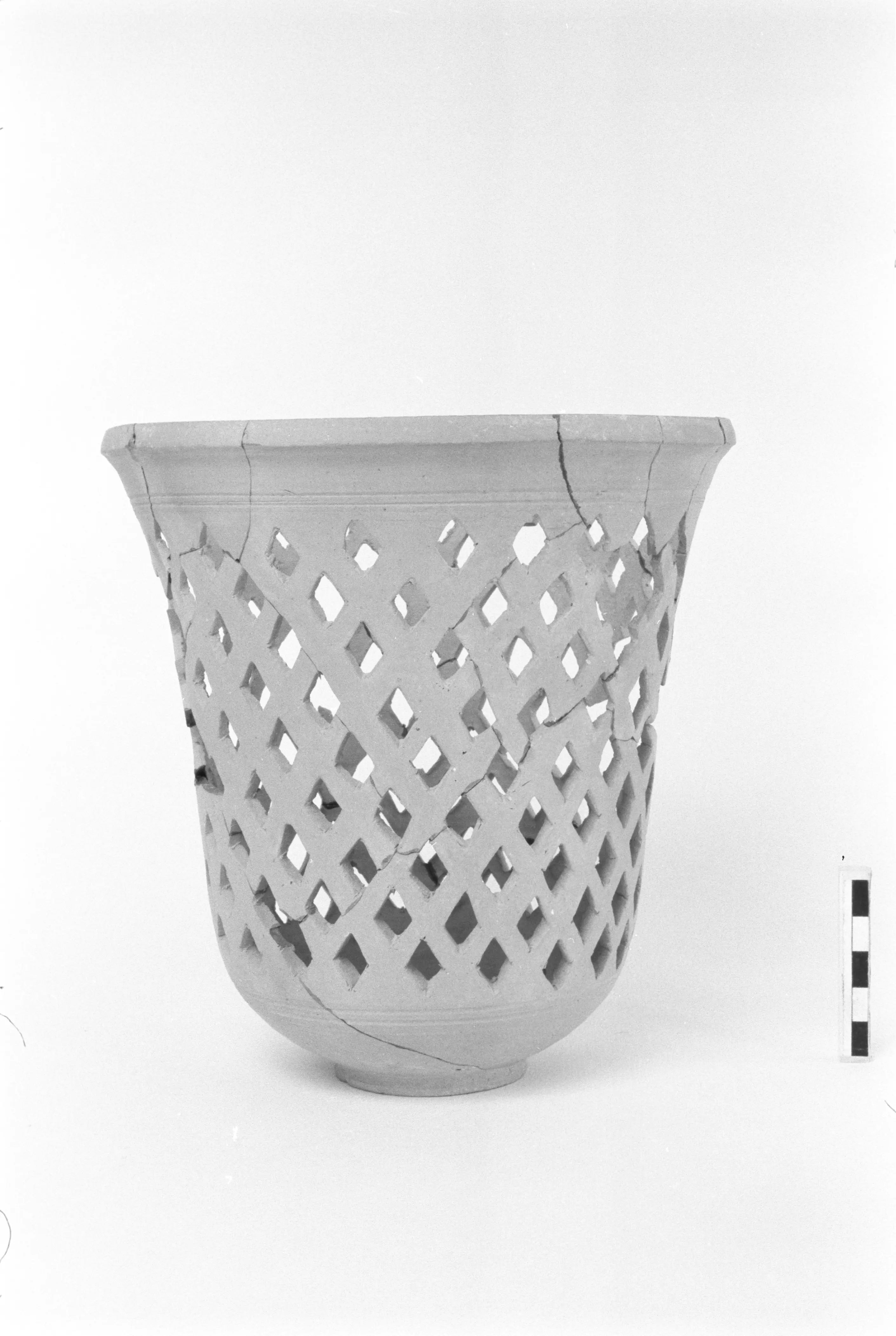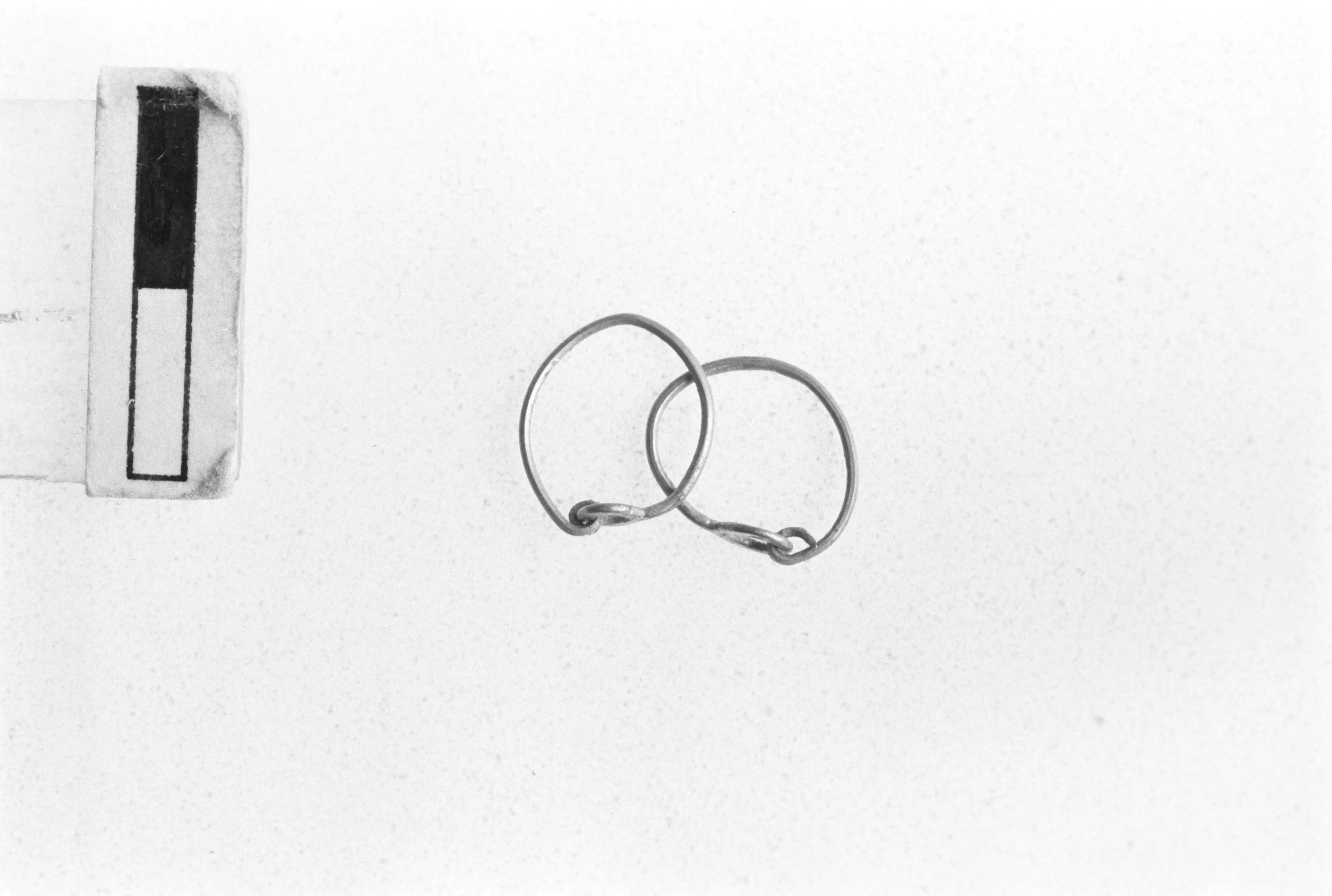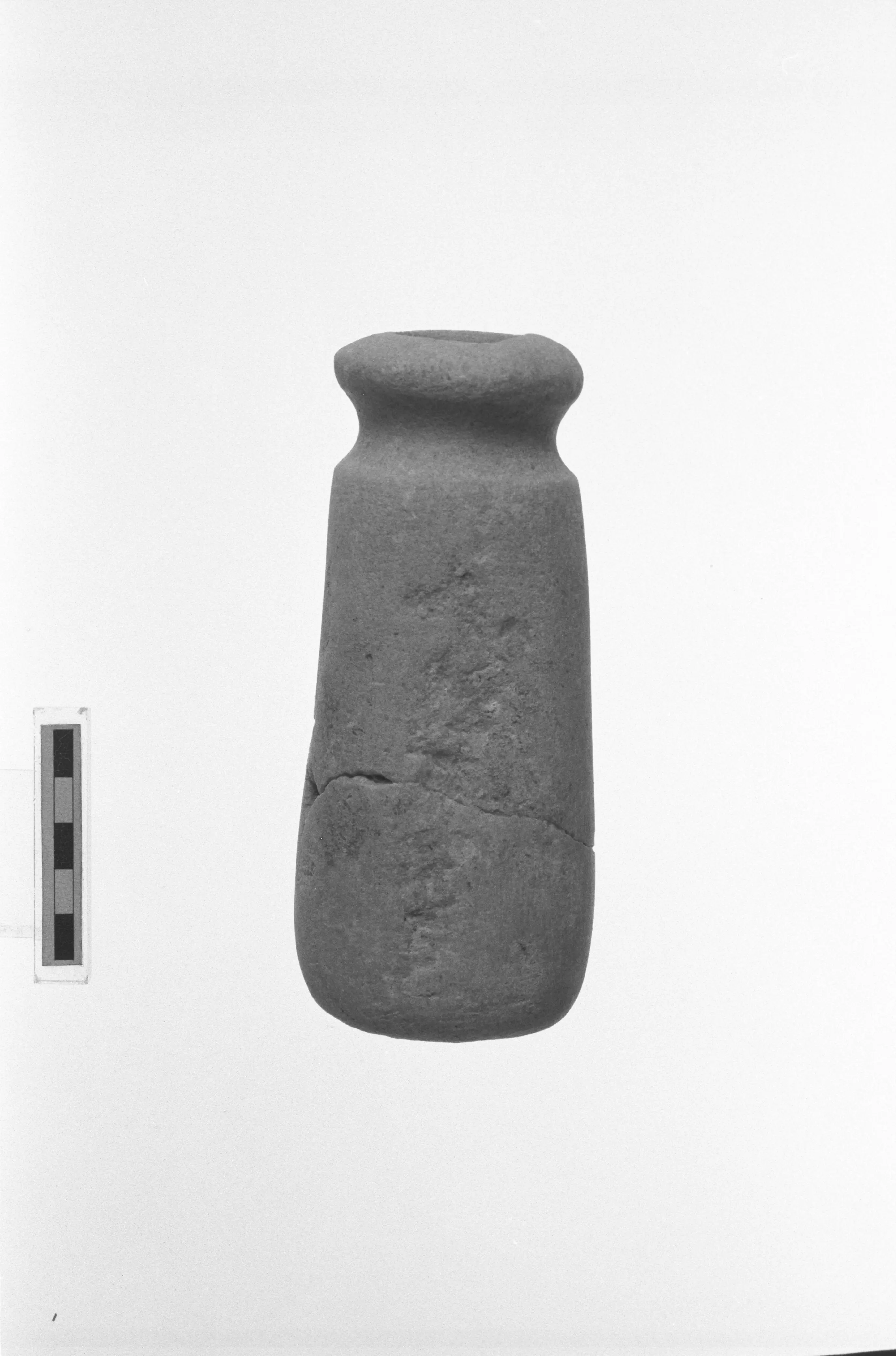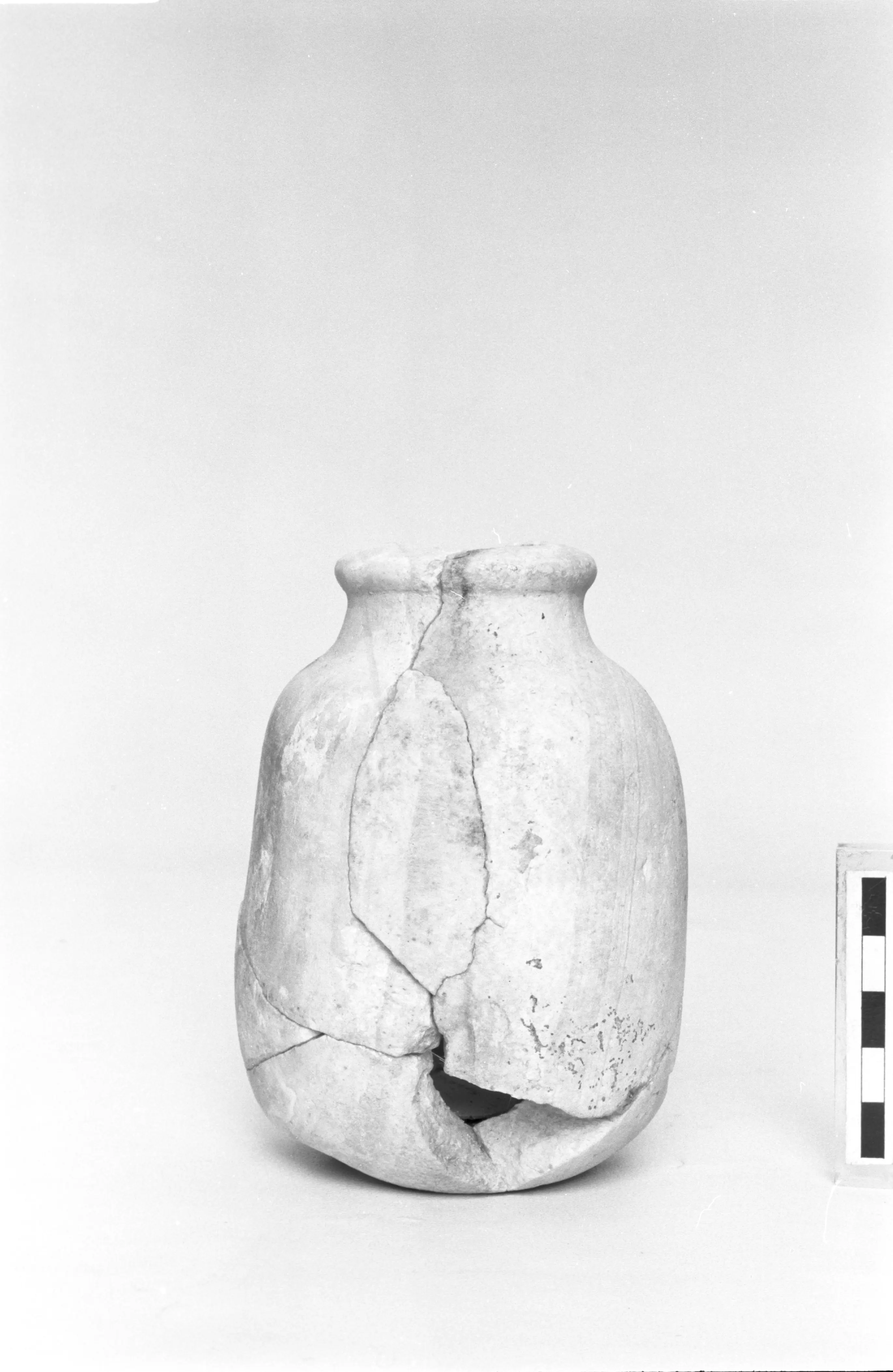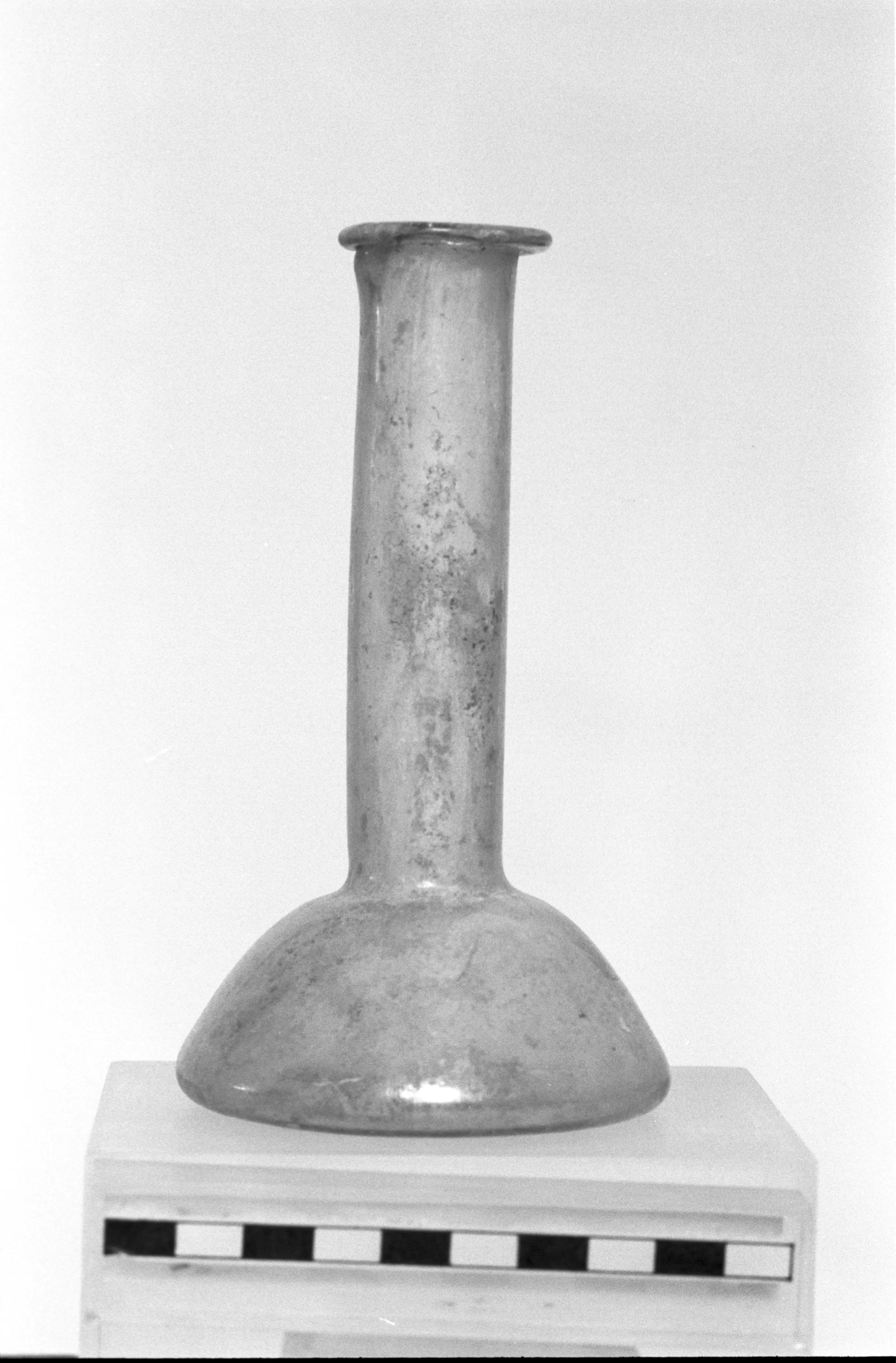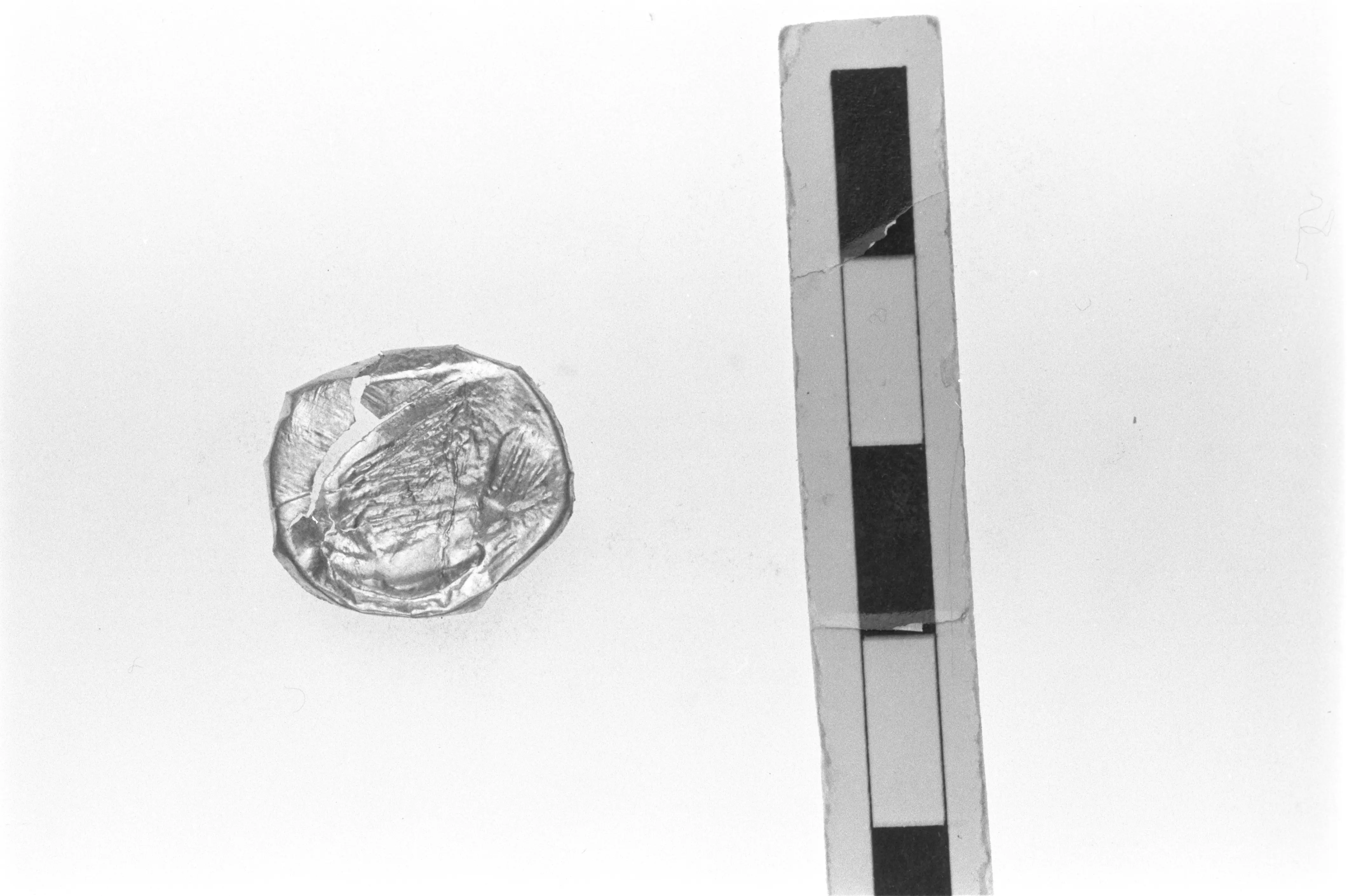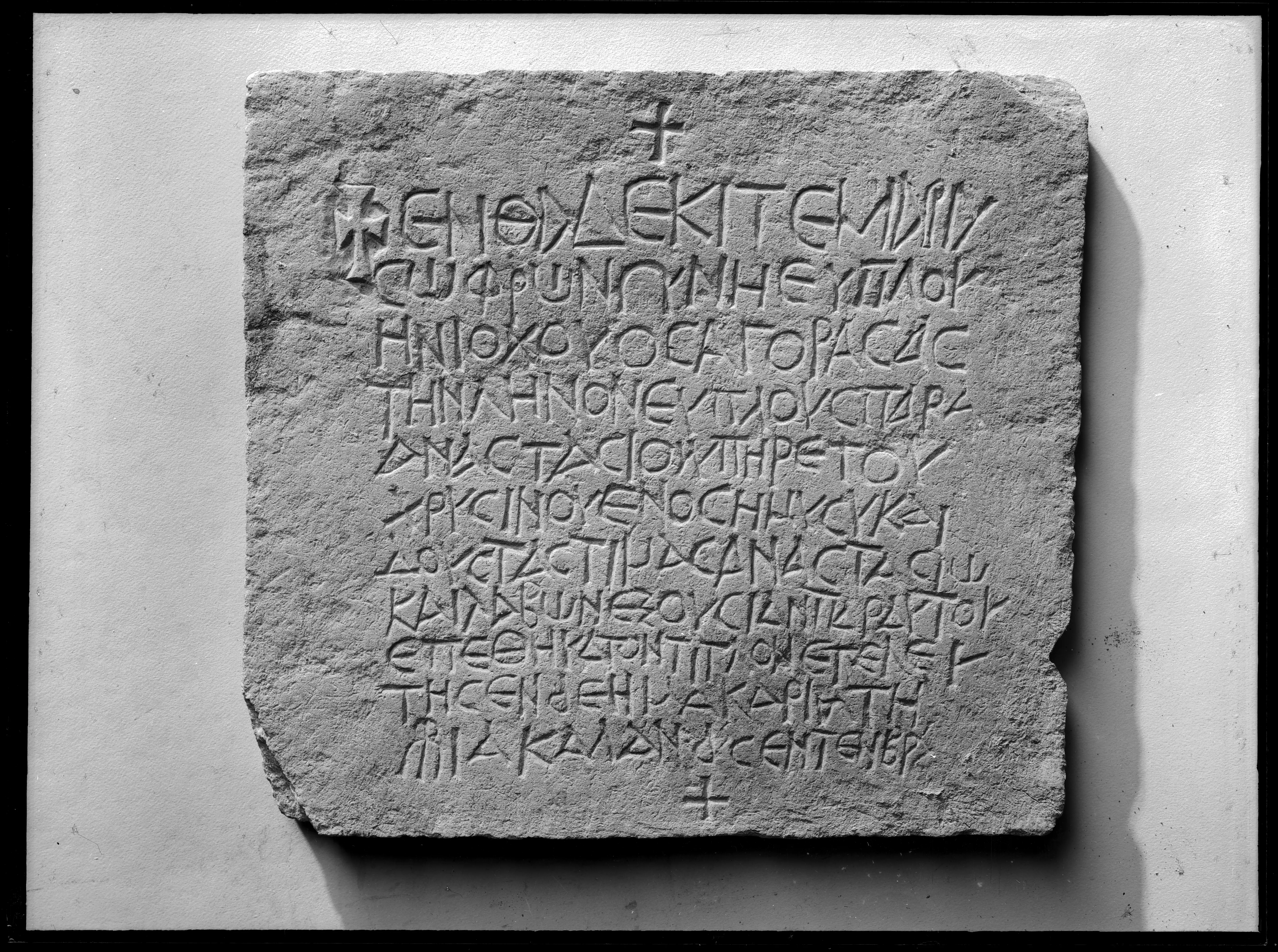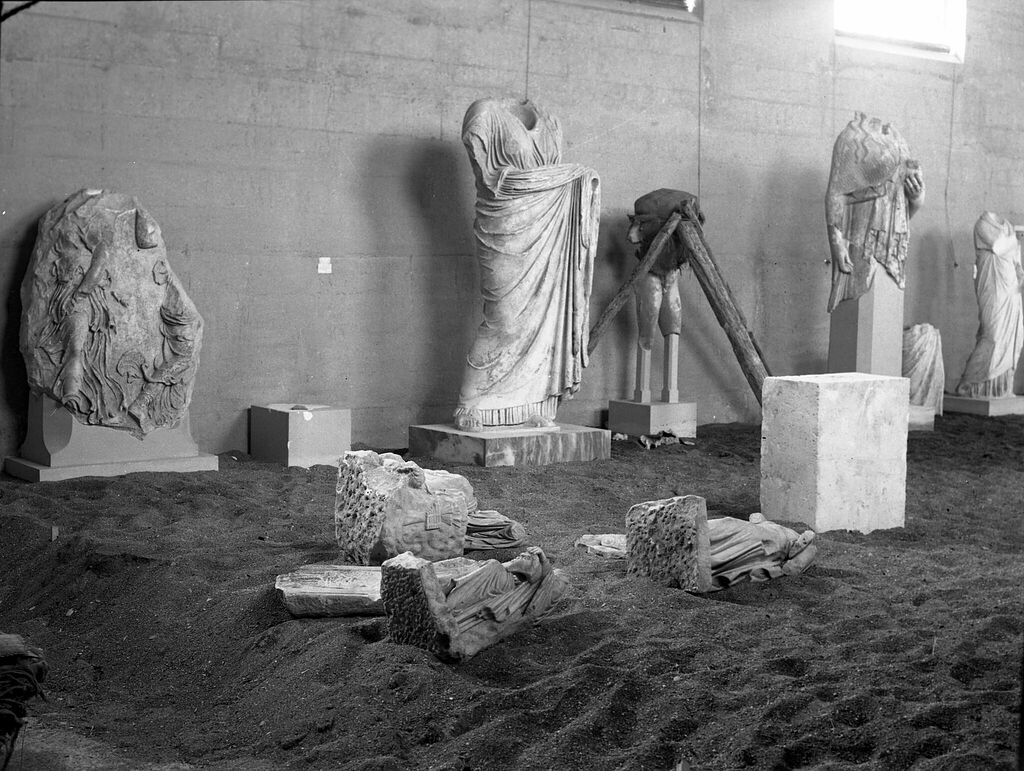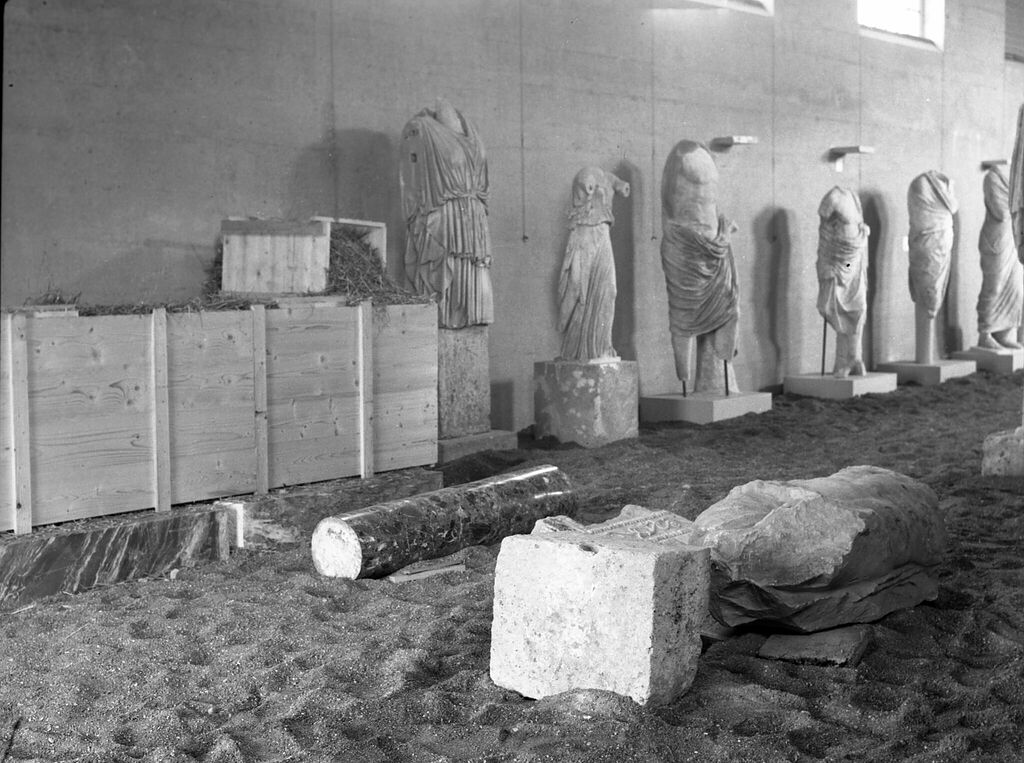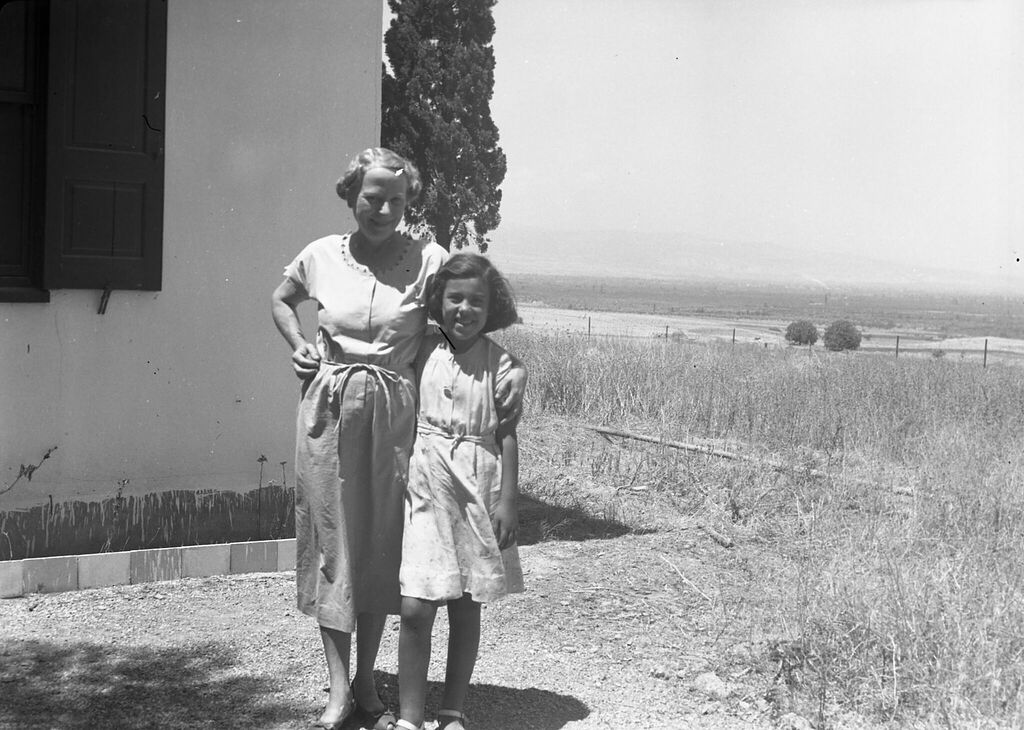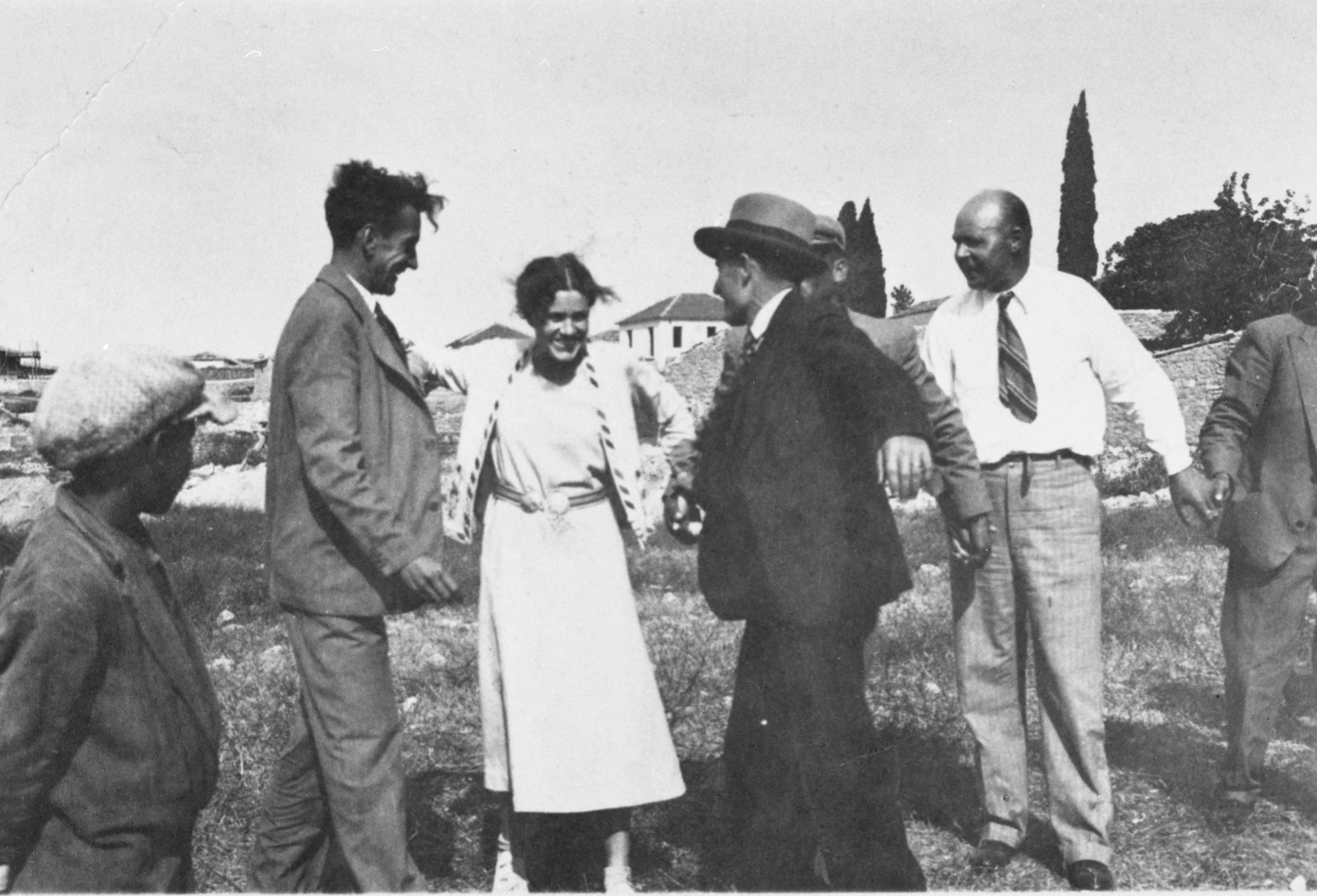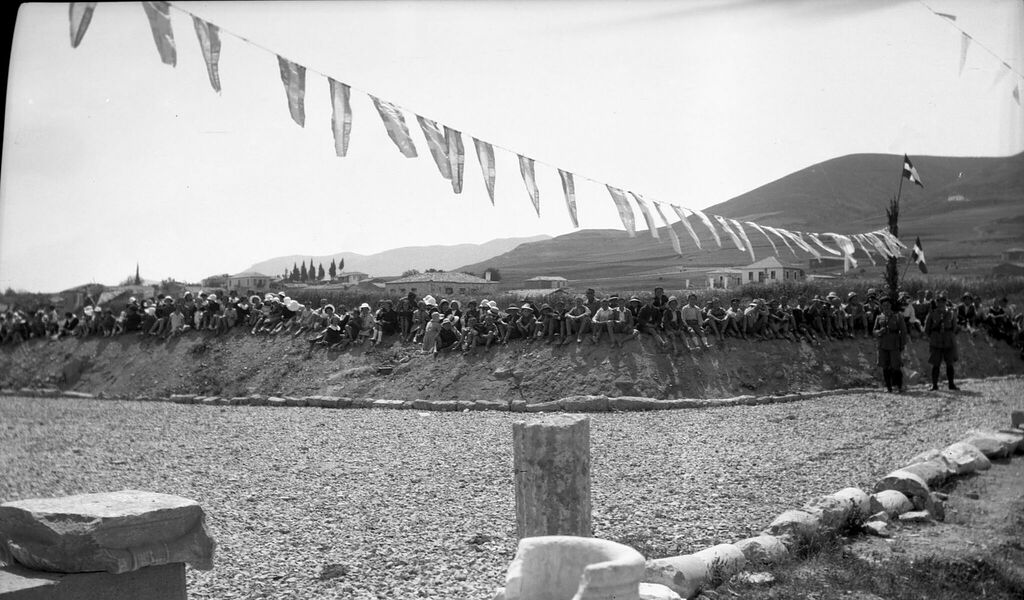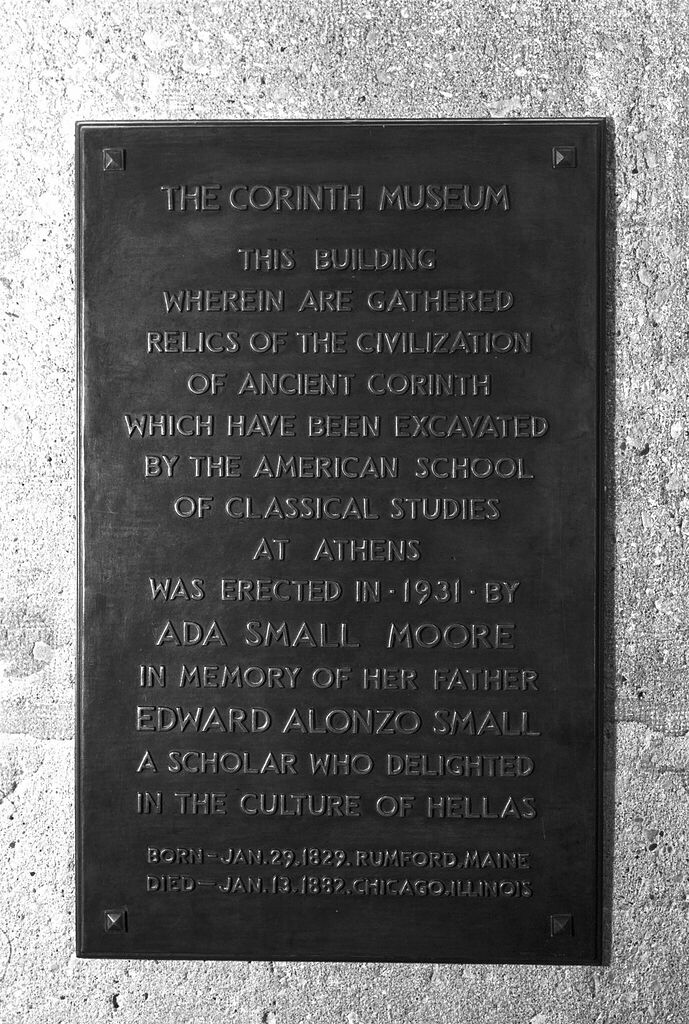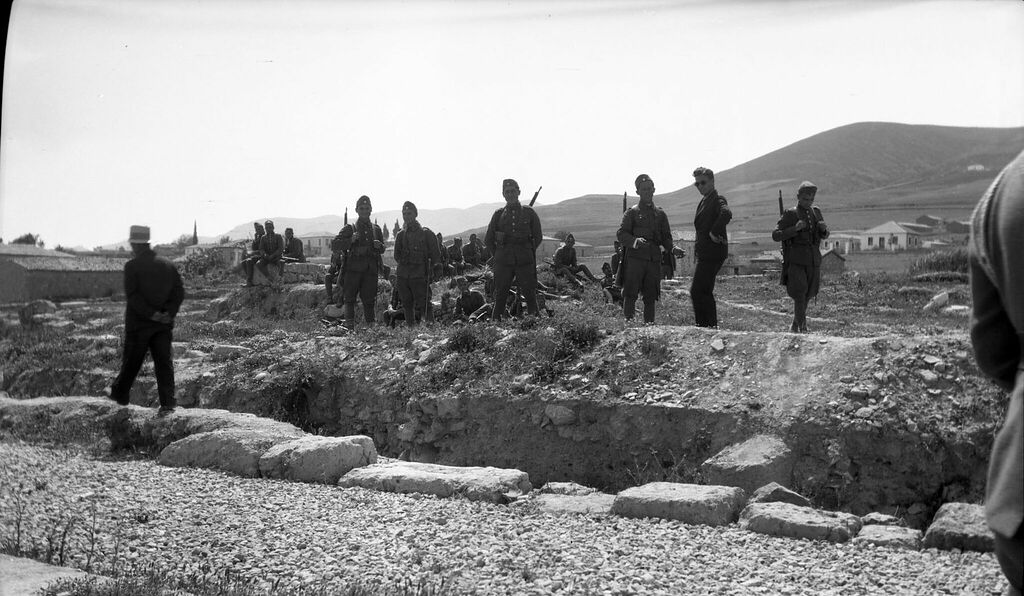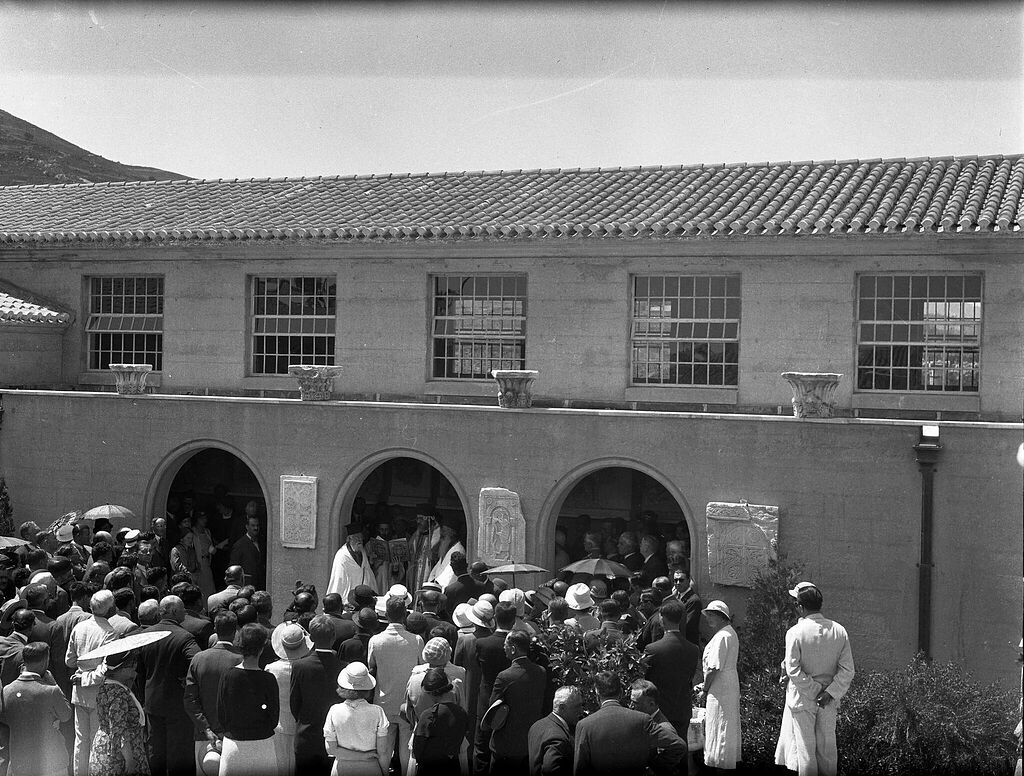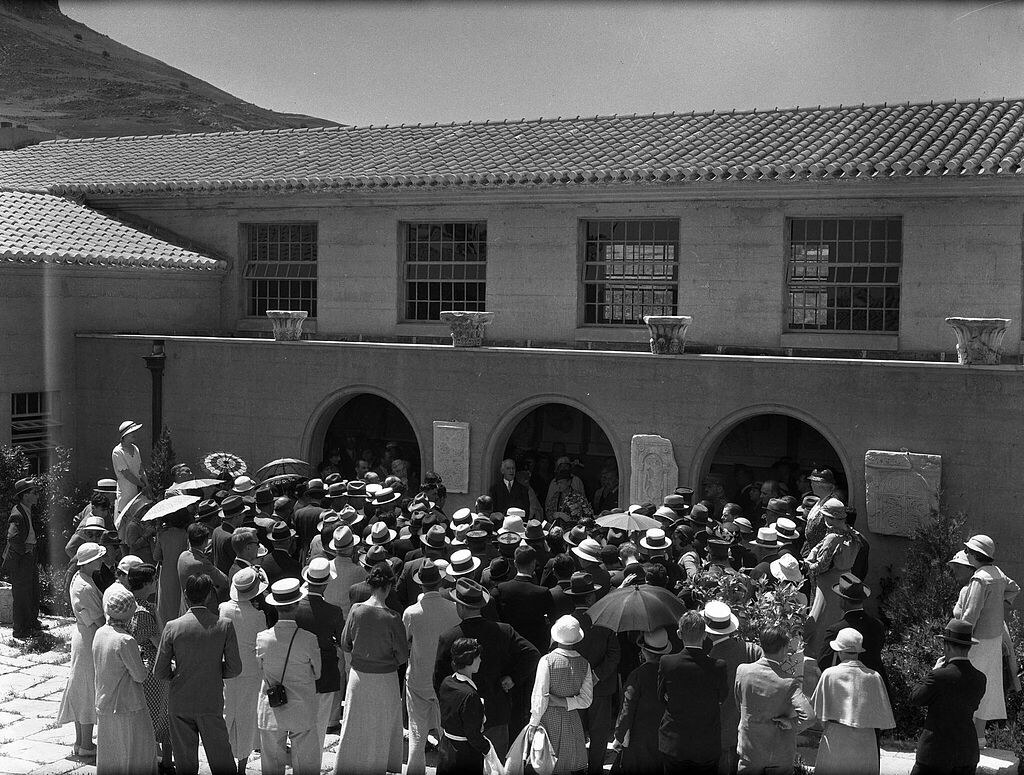Greeks and Americans in Corinth: Uncovering the Past and Building the Future Hand-in-Hand
The geographical location of Ancient Corinth made it one of the most important cities of ancient Greece. The city held great strategic significance throughout its existence as an ancient Greek city, as well as later for the Roman Empire, Byzantium, the Franks, the Venetians, and the Ottomans—right up to the present day.
It is only natural that a region with such a rich history would attract the interest of travelers and archaeologists alike. The first archaeologists from the American School of Classical Studies began excavations at Ancient Corinth in 1896.
The excavations carried out by Greek and American archaeologists have brought to light an enormous number of findings. One of the main goals of the American School—beyond studying, publishing, and exhibiting the archaeological discoveries in the museum to make them accessible to the general public—is the preservation, conservation, and maintenance of the records produced from the very first dig in 1896 to the excavations of the present day, 129 years later.
Generations of archaeologists working in the area have created an extensive archive of their excavations in various forms, which serves as the foundation for publications on legacy data as well as future archaeological research. This archive also contains the stories of local families and individuals who worked alongside archaeologists to uncover the ancient city and its people’s way of life.
The Making of Ancient Corinth: Archaeological Landscape and Local Families in the Digital Archive of ASCSA
The people living on top of ancient monuments and those who travelled from far away to engage in the excavation of those monuments collaborated to accomplish the goal of identifying the historic city of Ancient Corinth. Working hand in hand, these collaborators also created all that exists today from the archaeological landscape to the artefacts displayed and stored in the museum. The stories in the excavation notebooks and in the inventory cards of the finds are too numerous to pay individual tribute to all who have contributed to the collections archive during the last 129 years, particularly since this archive is constantly being augmented. As such, a few select vignettes will be presented here.
The Giambouranis well and the Bakoulis dump, as archaeologists have referred to them, are written in the memory of both the people who worked the areas and the generations of scholars coming afterwards. The newer generation tries to identify where precisely the well was located and what finds came from it, thus reconstructing the relationships between object and monument that initial research interfered with in the first place.
The American researchers collaborated with many local families in their attempt to uncover the ancient city. First and foremost, the land covering the monuments belonged to the people living on top of the monuments. These land plots had to be expropriated and donated to the Greek State before excavation would begin. Records exist both in terms of plans, photographs and excavation notebooks that record in detail the land, the owners and what antiquities were found in each place. Even today, people are constantly finding antiquities in their fields and they are the ones who know the landscape better than anyone and can teach the Americans about it.
In the following short stories, local Corinthian families will be featured so that people will know exactly what was found in each family’s plot of land after it was excavated and thus, how each of these families contributed to our collective knowledge about the past and the ancient people who lived where the modern families live hundreds of years later.
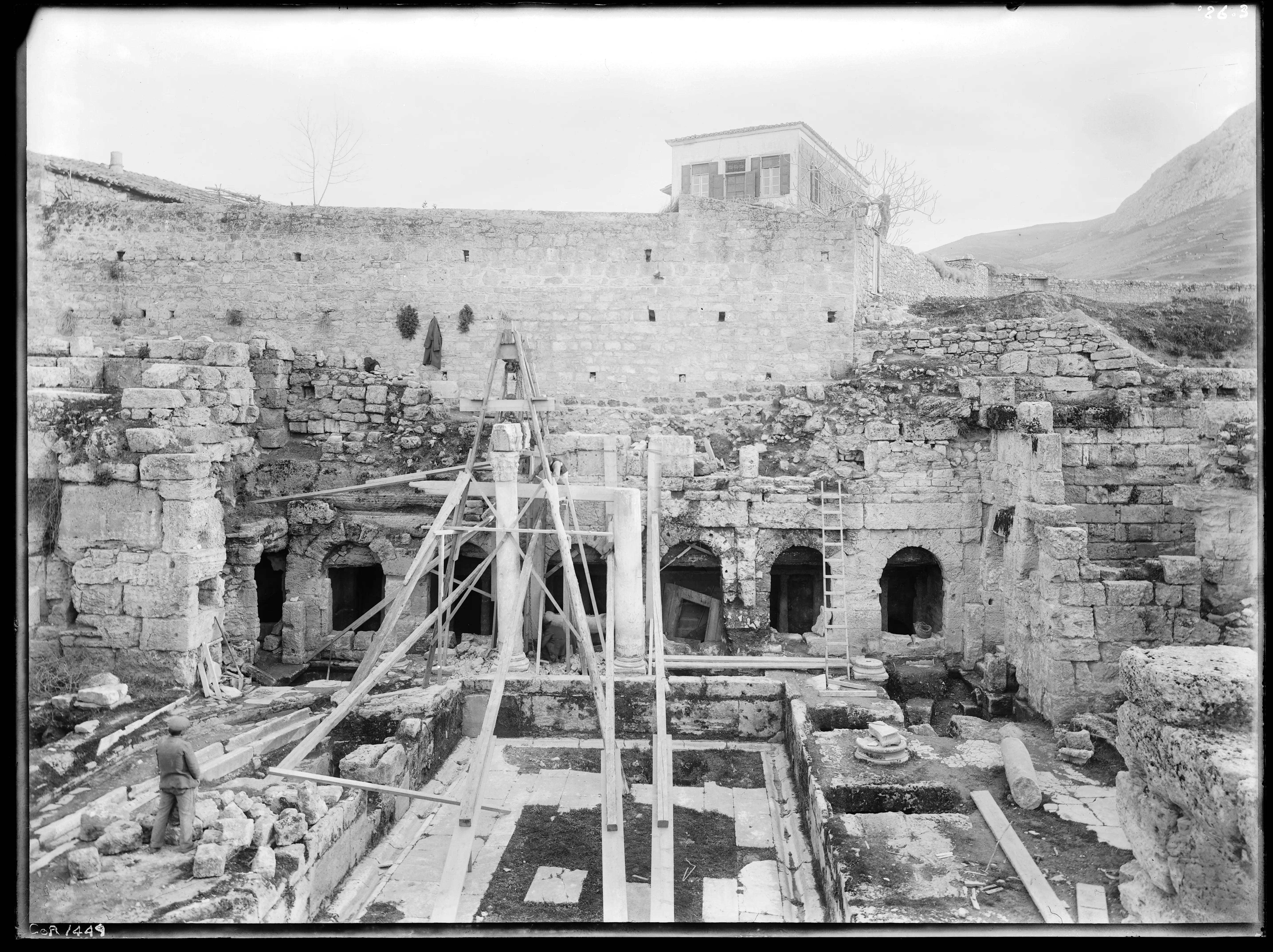
Renting the Fields: The Disagreement between Hill, Blegen and the Bakoulis Brothers
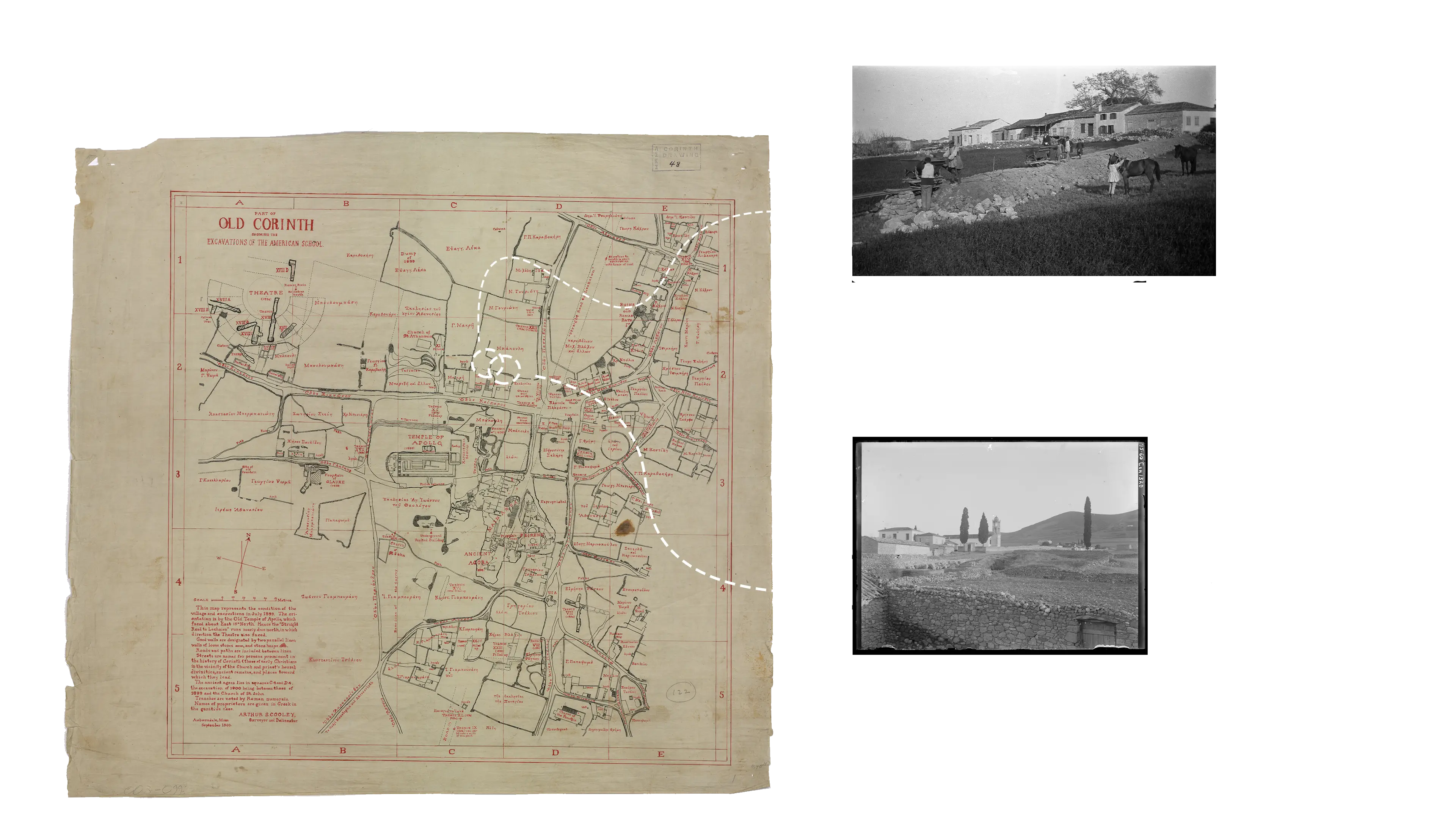
Relationships were not always easy, since the archaeologists wanted to dig up the fields to expose the antiquities but the people needed to cultivate them and live from their produce. Agreements had to be made and disagreements had to be resolved.
The archaeologists working with a huge workforce, up to 100 and more workmen, were moving a lot of earth using carts and donkeys in order to reveal the ancient monuments. This earth had to be dumped away from the excavations.
Bakoulis was a big family as is indicated on the maps of properties where the family name appears repeatedly. The field owned by the Bakoulis brothers, Serafeim, Thomas, and Ioannis, sons of Demetrios, was rented out to the archaeologists for this purpose, to dispose of the earth temporarily while the monuments were uncovered.
Correspondence between American archaeologists, Bert Hodge Hill (Director of the American School 1906-1926) and Carl W. Blegen (Secretary of the ASCSA 1913-1920), and the Bakoulis brothers describes the agreements made for the Americans to rent the field for dumping the earth, then to return it to its owners for cultivation for the remainder of the year. However, agreement on the terms and conditions of the collaboration did not come easily.
Blegen wrote, “I saw the Bakoulides today twice and had a long discussion with them. They refuse absolutely to let us cross their land except for 2 100 dr notes. 2 of them Seraphim and Thomas talked very brutally and called us liars. They assert their agreement with us was for 3 months, not for the year. The signed paper, however, which I showed them says ‘during 1914 to end of work of 1914’! They say if we attempt to run a car they will have the law on us. Finally said "the matter is finished.” We urged them to reconsider. Prospects not good.” (ASCSA Corinth Excavations Notebook 78, p. 8, October 8, 1914)
Further down, Blegen continued: “Angelis (Kosmopoulos, the foreman) says he will go ahead tomorrow in spite of Bakoulis. He has looked up law and finds it is on our side. We are required to pay damage to crop, mainly and have full rights of passage. Question of next year is different. There seems no further use in negotiating with Bakouli. It is quite impossible to deal with them. We have tried every way we could think of.” (ASCSA Corinth Excavations Notebook 78, p. 15, October 11, 1914)
The Bakoulis brothers caused problems for the archaeologists, even though they were paid a fair sum to rent out their fields for the disposal of excavation soil. Recently, Ioannis Bakoulis, one of the grandsons of the three brothers, who still lives in the village, handed over to the ASCSA a letter sent to the Bakoulis brothers by Bert Hodge Hill in 1916.
Hill stated in the letter that he had investigated in Ancient Corinth and with the Ministry of National Finance regarding the profit from the cultivation of wheat in the field as amounting to 65-75 drachmas per stremma. He thus, offered the brothers to rent their field for 75 drachmas per stremma. He concluded, “I offer this rent…because I do not want you to suffer any damage because of us.”
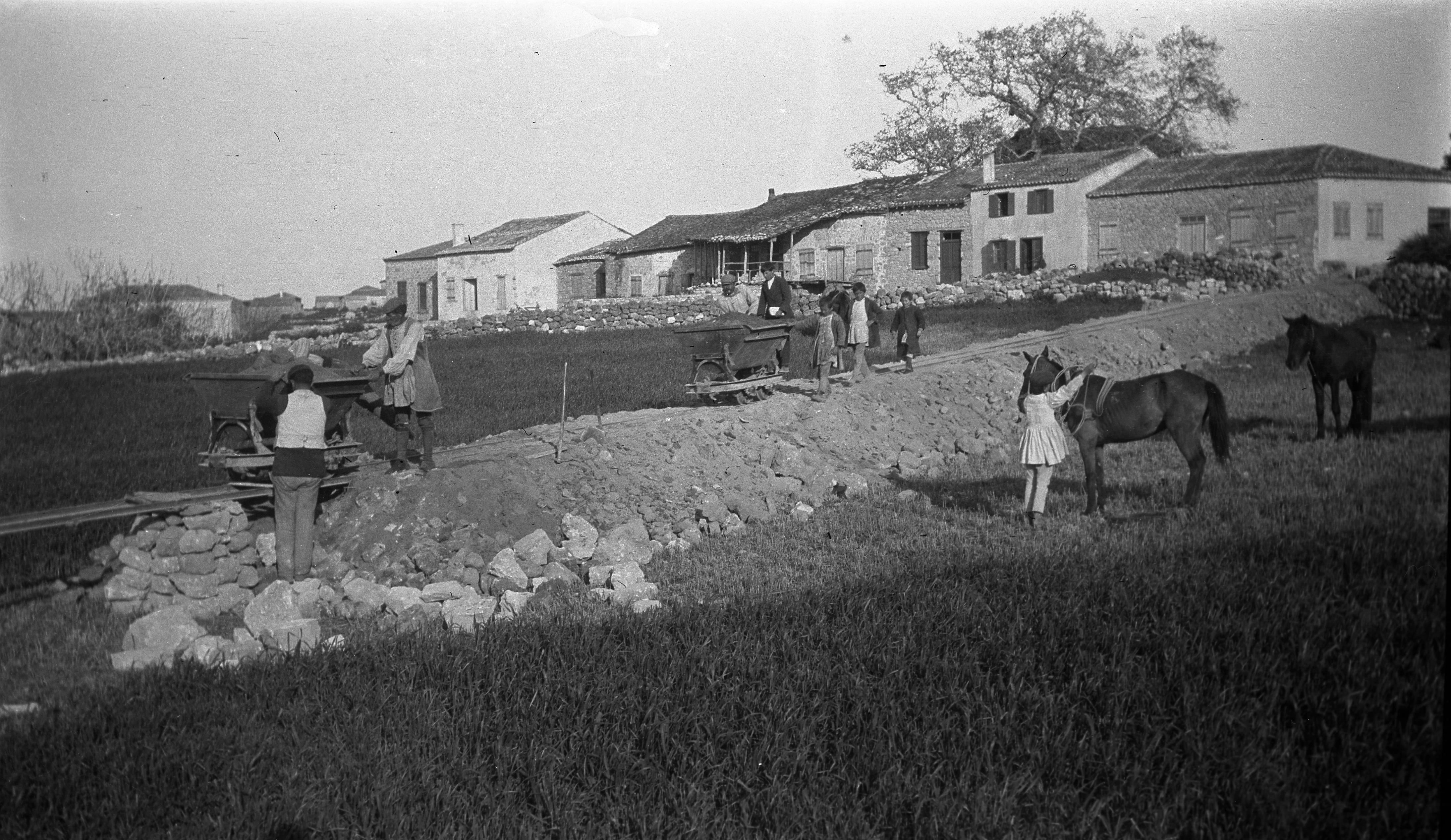
Oscar Broneer Excavating in Vlachos’ Field
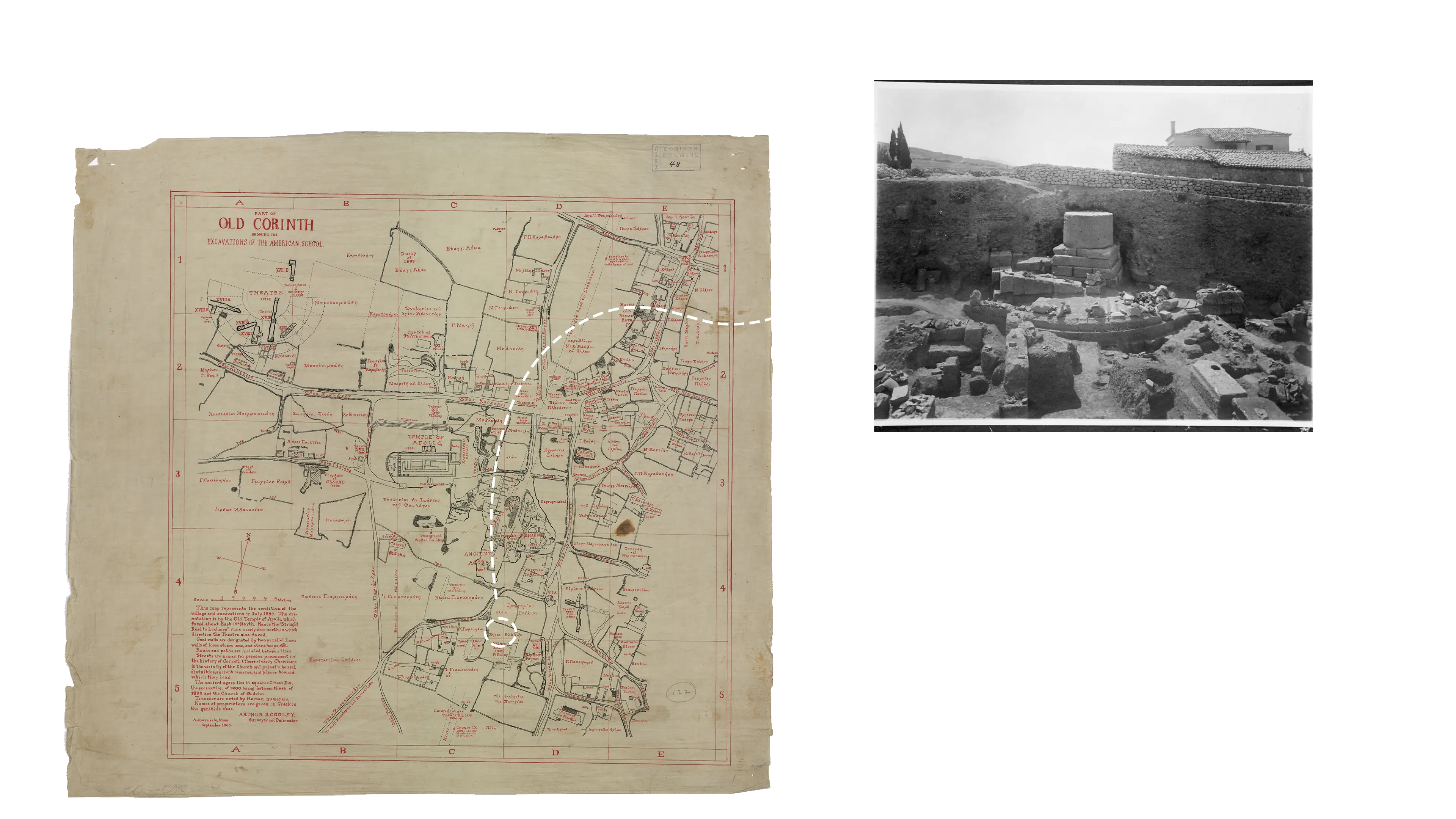
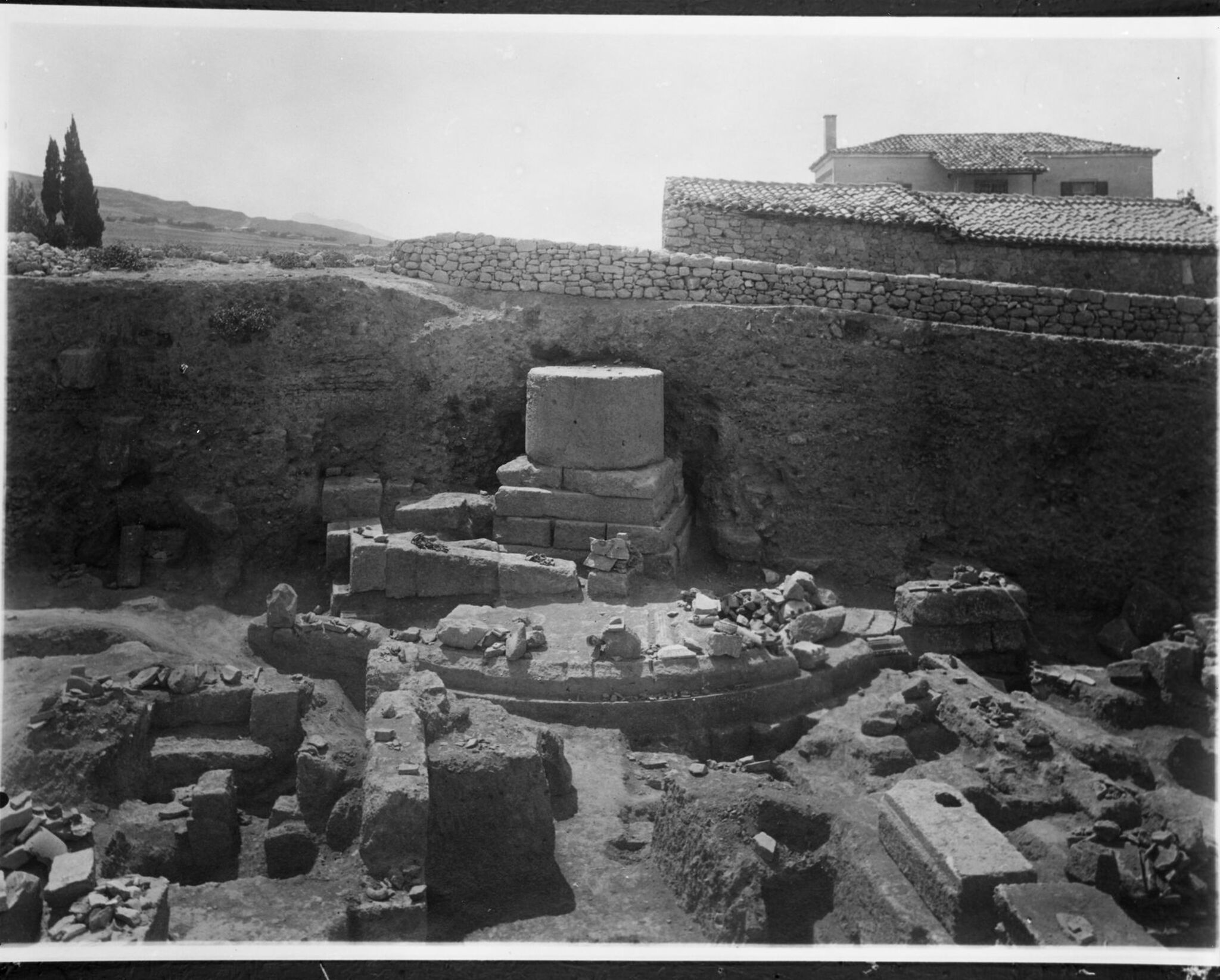
In 1933 Oscar Broneer was excavating in the Vlachos Field in the Forum. The field was bought for 20,000 (10,000 drachmas/stremma), “High price!” in ASCSA Corinth Excavations Notebook 132, p. 72, December 1, 1922. The excavators uncovered the circular base of a huge monument, the Circular Monument. Only the base is preserved, parts of the second drum were broken up and built into gate posts, so it is difficult to know what it originally supported.
Oscar Broneer was a prominent archaeologist who served as acting director of the ASCSA from 1947-1948 and directed excavations at Isthmia from 1952-1956. In Corinth he excavated for many decades and brought to light and published two significant monuments, the Odeion and the South Stoa. Broneer dedicated his life to the Corinthia, adopted Ancient Corinth as his home, served as the Executive Vice President of the Greek War Relief Association in New York City during WWII and was awarded the Royal Hellenic Order of the Phoenix for acts of dedication to his adopted country in 1962. He filmed the Triumph Over Time in 1947. Broneer died in 1992 and was buried in the village cemetery.
During his excavations in the Vlachos field, he wrote in ASCSA Corinth Excavations Notebook 135, pp. 168-169, May 24, 1933:
“Wednesday May 24, 1933
109 men, 71 in Agora SE
295 and 104 cars for a total of 399 cars (of dumped earth)
Work continued in Vlachos field in middle section west of circular base where we destroyed walls and began defining larger circle of base. Also continued at east and where we are cutting away modern road. The road was removed toward the east close to the barn in order to leave room for us to clear the southeast corner of the building.”
The number of men employed is huge, 109 men in this case. The number of cars refers to the railroad cars, visible in the excavation photos, full of earth that was removed from the archaeological area and dumped every single day in order to reveal the ancient buildings. According to this notebook entry, 399 cars of earth were moved in a single day. This shows the immense amount of labor by the workforce of Corinthian workmen.
The objects discovered include a wide range of artifacts with diverse dates and of different types of materials including remains of a whole Roman terracotta roof belonging to a monument in the center of the Forum to the north of the South Stoa. Only a small collection is shown here.
An Amazing Discovery at Anaploga: The Story of the Giambouranis-Tsimbouris-Papamichael Athena or Apollo Head
An amazing discovery was made in the area of Anaploga in 1962. During Roman times, as today, this area was the site of wealthy villas most probably because of the spectacular views it affords of the landscape.
In one of the Roman villas in the area colourful mosaics were excavated which were then transferred to the Museum by the Restoration Department of the Ministry of Culture and they are currently on display in the Roman Gallery.
From a similarly spectacular environment originates the magnificent marble head of a god/goddess that is uniquely preserving its eyes. The head is 0.54 m tall, it was presumably designed for insertion into a body of wood, part of an acrolithic statue. The top of the head was roughly finished and locks of hair just over the forehead are cut back to provide a ledge for supporting an attachment- a crown, taenia, or helmet (?). Mary C. Sturgeon concluded that it represents Athena because a helmet was most probably attached by a marble tenon. The eyeballs were separate pieces of marble, set in white plaster into hollow sockets; the pupils were of another material, and were set into the cavities in the eyeballs. The eyelashes, made of strips of bronze, were anchored in place by the eyeballs. In 2013 a similar bronze eyelash from another statue was excavated in Nezi field (cat. no. MF 2013 12). Each ear lobe was pierced for hanging earrings. Traces of gilding are preserved on the hair on the right side of the head.
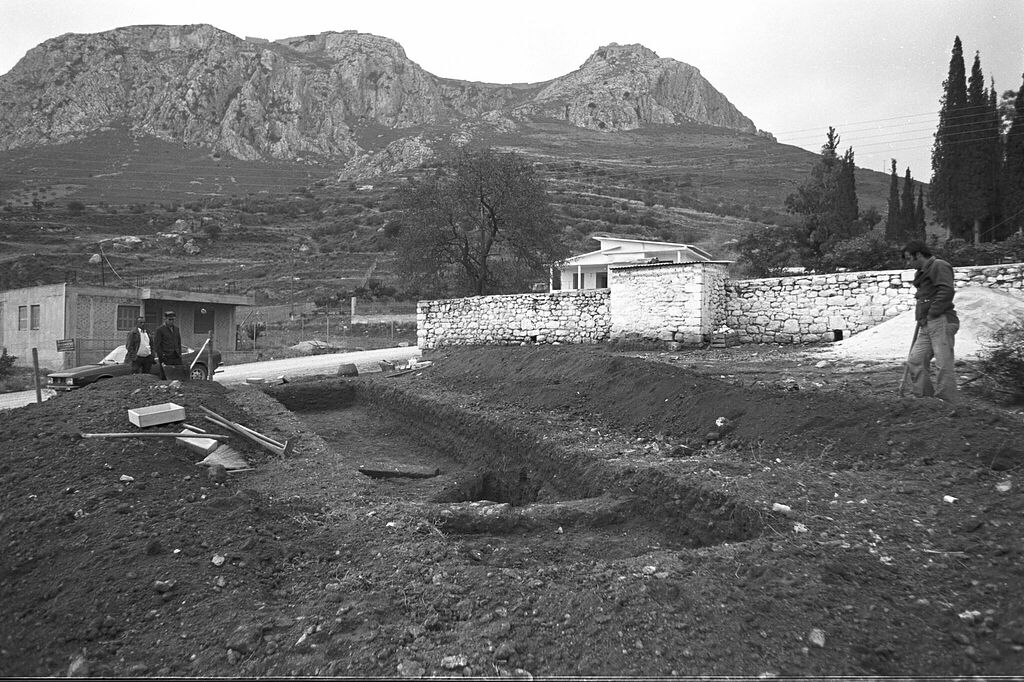
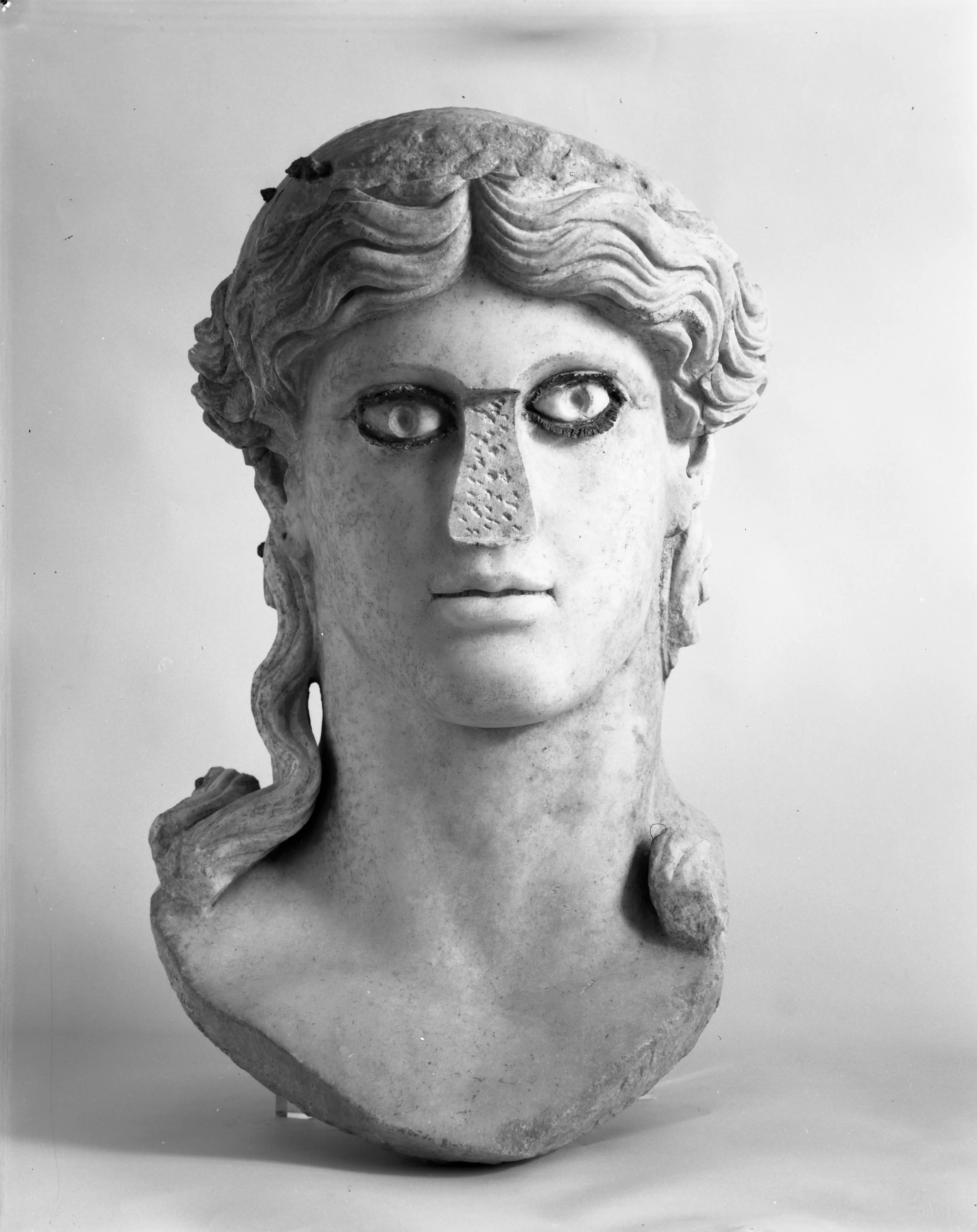
The story of the head’s discovery is related by Henry S. Robinson in Corinth excavation notebook 239.
Henry S. Robinson was both director of the ASCSA from 1959-1969 and director of Corinth Excavations from 1959-1965. While excavations were conducted continuously from 1896, there were times due to historical events in Greece that excavations were interrupted. After such an interruption, Robinson resumed annual excavations at Ancient Corinth in 1959 and excavations have been happening continuously ever since. Robinson decided that holding both a directorship of ASCSA and Corinth was an immense task and, thus, he appointed C. K. Williams II as the first independent director of the Corinth Excavations. Williams retired from the position in 1997.
Robinson reports on the location of the find of the head as follows:
“This site lies in a field belonging to the widow of Papamichael, some 600m west of the Odeion, on the right (north) side of the road to Haghioi Anargyroi, immediately east of the ravine in which we have thrown our excavation dump in 1959-1961.”
And the story, as it unfolds in Robinson’s excavation notebook, is as follows:
“In December of 1961 or at least before January 1962, the field was ploughed for the owner by a tractor drawn plough belonging to Konst. Giambouranis and Evag. Tsibouris, both residents of Archaia Korinthos. In the course of the work they found a marble head of a deity, over life-size, with inset eyeballs and inset bronze eyelashes. The nose was missing, as were the inset pupils of the eyes. This find they reported to the Archaeological Service in Athens in late February and turned over to the Corinth Museum guards on March 2, 1962.
Mr. Verdelis, the Ephor, requested us to dig briefly in the area where the head was found in an attempt to recover the nose and pupils. With four workmen we undertook to dig in the area where Giambouranis and Tsibouris reported the discovery of the head. During the day the man who drove the Giambouranis-Tsibouris tractor on the day of the discovery of the head reported that the head was in the area just north, and at end of day practically on the line between the two areas designated we found one of the locks of hair from the right side of the neck of the head. Since the discovery of the head, the owner has planted his field with olive trees. We have agreed with the son of the widow Papamichael that after the spring excavation we will refill our trenches and replant such olives as we removed, paying him some compensation for loss of growing time of the trees. If, however, the finds are such as to warrant leaving the trenches open, we will negotiate for the purchase of the property.”
The head of Athena/Apollo is not on display in the Corinth Museum but rather is kept in storage among other spectacular marble portraits.
Bringing over to the Museum Surface Finds from your Fields: The Yambouranis Running Gorgo/Medousa
In addition to the remarkable head above, smaller artifacts have also been discovered and brought to the Corinth Museum by members of the local community. People often find antiquities while walking or working their land so they deposit the artifacts at the museum for everyone to appreciate. They know the land and its antiquities best than anybody.
This is the story of a small terracota figurine of a running Gorgo/Medusa (cat. no. MF 9761).
We have many examples of the type in the collection in Corinth because the myth of Medusa is so central for Corinthian identity. Medusa or Gorgo was one of the three Gorgons. She had living snakes for hair and the ability to turn anyone who looked at her into stone. The Greek hero Perseus beheaded her and gave her head, which still retained its abilities, to Athena to place on her shield, thus, forming the Gorgoneion, an evil-averting weapon. From the blood of the beheaded Medusa sprung Pegasus, the flying horse, an important symbol of Corinth. Medusa appears in stone, terracotta, bronze and her powers were so entrenched in the Corinthian psyche that the symbol survives on the bezel of a Byzantine finger ring, having been Christianized with the XR symbol.
The terracota figurine of a running Gorgo/Medusa with cat. no. MF 9761 was found by A. Yambouranis in his field (region of North Cemetery) in September 1951 as is stated in the Corinth Excavations Notebook 272, p. 68. The North Cemetery is an extensive burial ground in the plain to the North of the city. Excavations by the American School brought to light 375 graves of the period 625-200BC, many of them sarcophagus burials. In recent excavations by the Greek Archaeological Service due to public works this number has been hugely augmented.
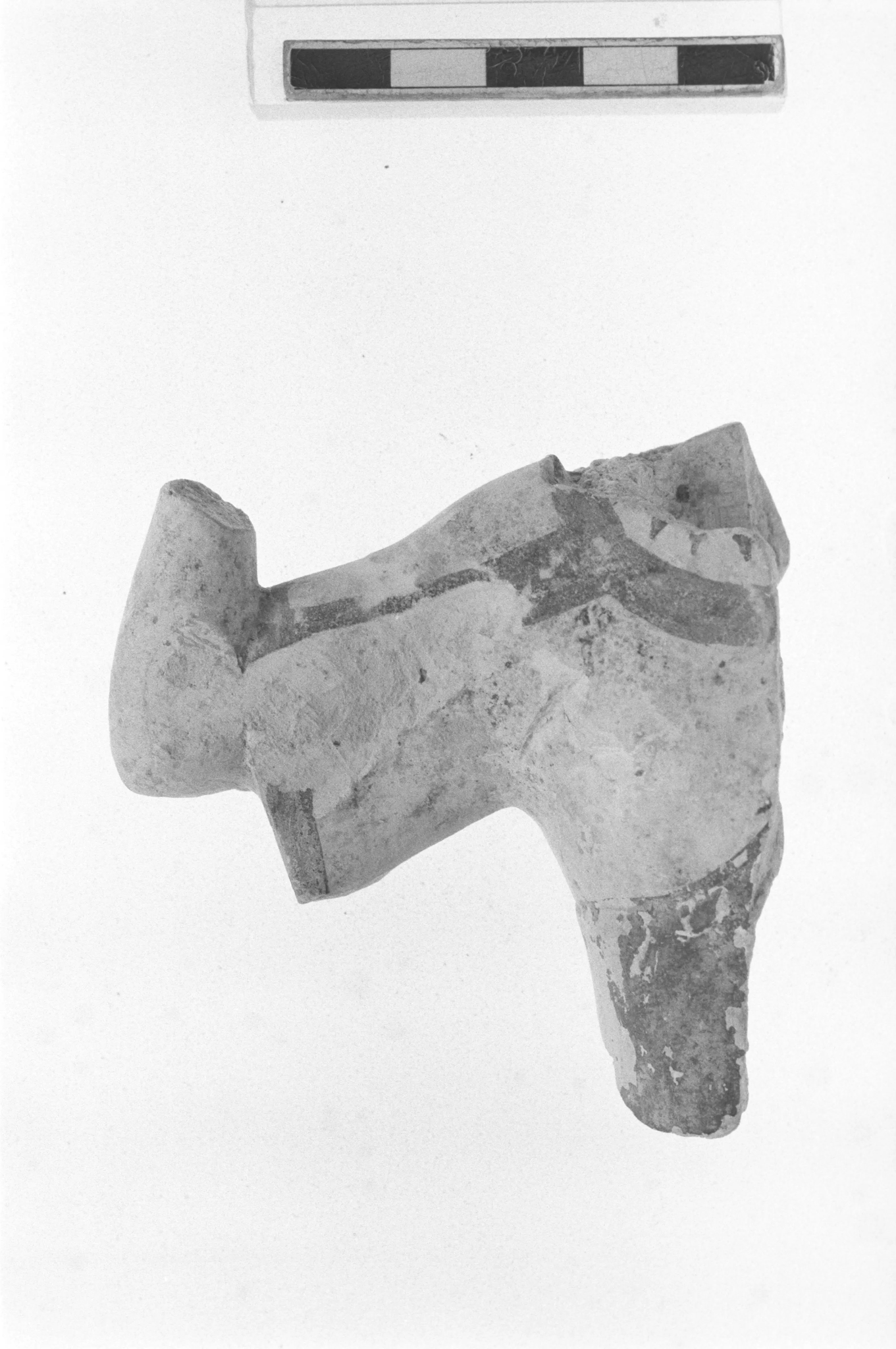
Tseliolophos
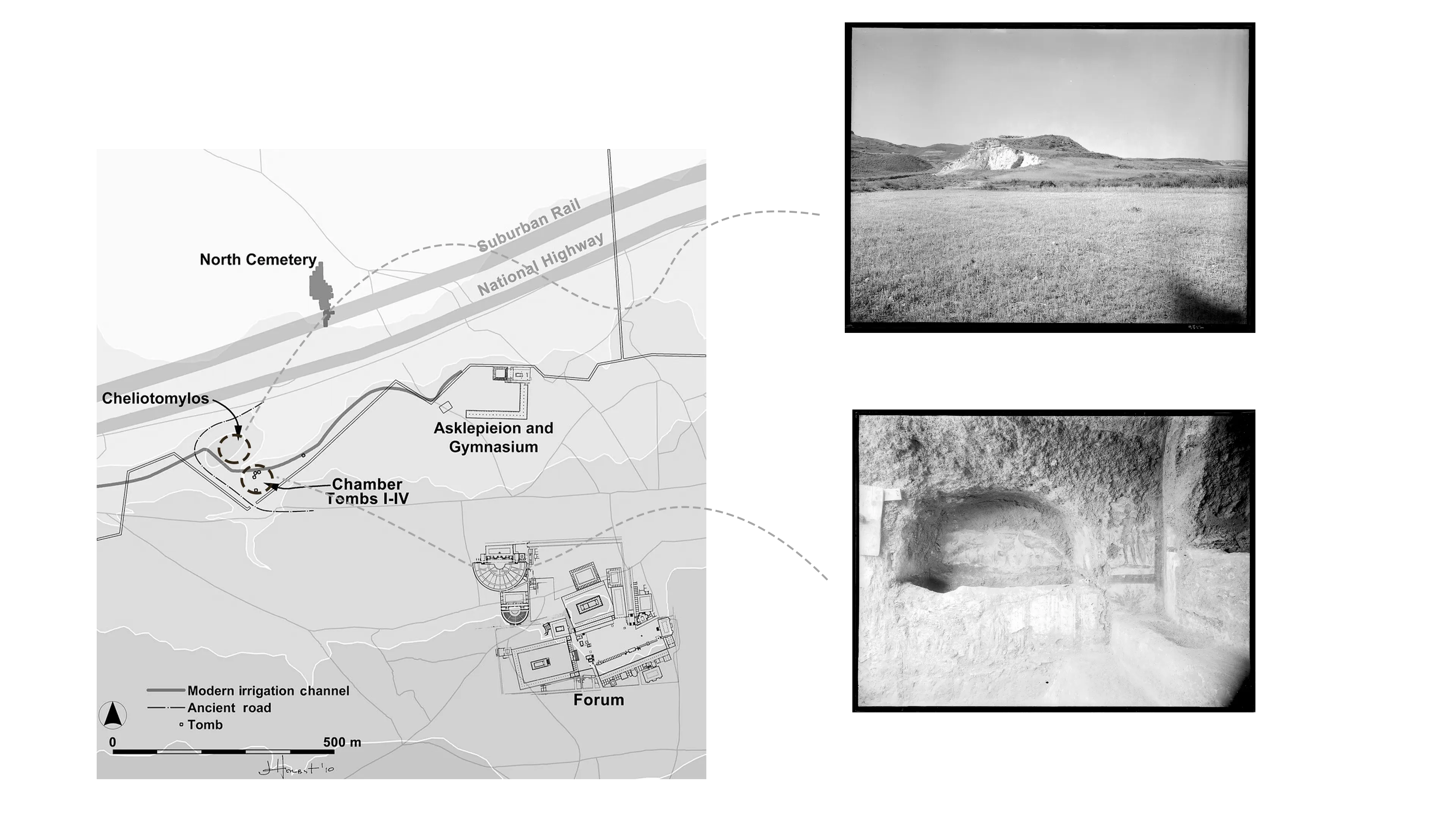
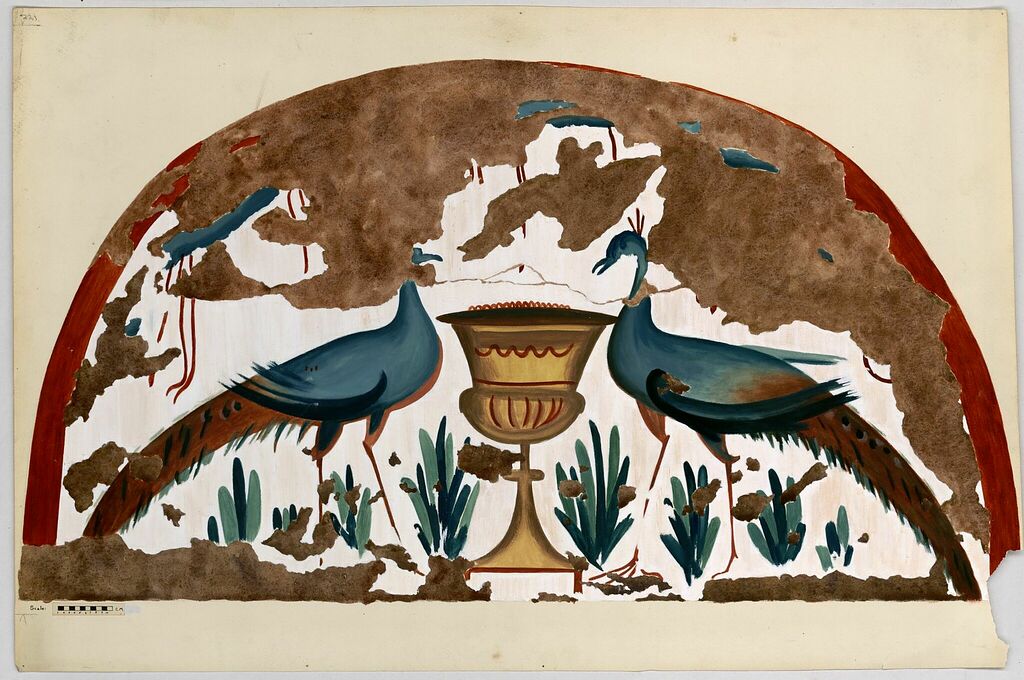
North-west of the Roman forum two hills are located overlooking the plain to the North. Cheliotomylos was the hill where the family of Cheliotis had a mill. Tseliolophos was the hill to the east of Cheliotomylos and separated from it by a ravine. The Tselios family owned property there. Archaeologists refer to these hills as Cheliotomylos and Tseliolophos. During the early 1930s 117 Geometric to Roman graves and several chamber tombs were found at Cheliotomylos. The most striking find was a well that contained a great mass of Early Helladic pottery of the 3 rd millennium BC and 17 human skeletons.
Excavations at Tseliolophos under the direction of T. Leslie Shear Sr., but conducted by his wife, Josephine Platner, during 1931 revealed that the area concealed a small Roman cemetery of 4 chamber tombs.
Among the graves the most spectacular was Chamber Tomb II or the Shear Painted Tomb, as it is now known. The tomb dates to the early 2nd c. AD and belonged to a wealthy Corinthian family. It was a substantial edifice with an imposing entrance and an elaborately decorated interior. Shear commented, “A tomb of this magnificence must have been constructed for a man of wealth and distinction, and the presence of military guards at each side of the grave implies some official association.” For Mary Walbank, the armed guards are rather mythological figures, the Dioskouroi, as savior gods and as a sign that the dead too may achieve immortality. The tomb was reused in the 5 th -6 th c. AD
From the excavations within the tomb and in the area around numerous finds came to light. A complete Geometric painted terracotta figurine of a centaur was found in fill lower down the slope to the NW of the tombs.
Grave goods from within the tomb include terracotta lamps, pottery, glass vessels, alabastra for expensive perfumed oils, gold foil coins for the Charon, and jewellery.
From Chamber Tomb IV, in the neighbourhood of the Shear Painted Tomb, comes an inscription, which was cemented in the entrance. It is dated in the first half of the 6th c. AD and it records the purchase of a grave by Euplous, the charioteer, for his wife, Maria. The inscription records that Euplous paid one and a half gold pieces, which was the going rate for a grave in a desirable location. The purchase was negotiated with Anastasios, a minor ecclesiastical official.
Corinth in Conflict: Families in the War
Living and working together, the Americans became a part of the Greek community at times of joy but also and especially in times of hardship. It was impossible to stay removed when suffering hit the village in the form of war.
In 1941, amidst WWII, American archaeologist Bert Hodge Hill was appointed to look after the protection of the Corinth museum. Greeks and Americans worked hard to cover and protect the antiquities.
Hill did whatever was needed to protect human lives as well. After having to take refuge in an air-raid shelter on a trip to New Corinth, Hill transformed two basement rooms of Oakley House, the headquarters of ASCSA, into a shelter for the villagers of Ancient Corinth.
During the civil war, the Americans were the only ones in the village with a car. When injured fighters would come knocking late at night, requesting a ride to the hospital in New Corinth, Robert L. Scranton loaded up the School's old Chevrolet station wagon and drove them down. Word spread that the Americans had a car and were willing to help the injured parties from both sides of the conflict and the Americans drove more injured down for medical attention before the end of the war.
Oscar Broneer served as Executive Vice President of the Greek War Relief. Together with his wife, Verna, he made a memorable distribution of donated clothing in the Corinthian Agora on St. Paul’s Day in 1947, after the conclusion of the religious service that took place on the bema.
On another occasion, Broneer reports in his excavation Notebook 195, p. 61, for Thursday, February 13, 1947:
“I spent much of the day distributing clothing. In the morning, I went to Corinth where I gave two blankets each to the following young prisoners from Old Corinth:
- Vasileios S. Bavellas
- Christos I. Skleres
- Constantinos P. Gouriotes
- Georgios J. Lekkas
- Demetrios A. Bouldas
A sixth prisoner, George A. Papaioannes had been taken to Nauplion for trial. In the afternoon Pavlos and I prepared bundles mostly of women's clothing sent by Lucy Shoe-- bundles were given to all the workmen and employees of the School at Corinth: … also to the Priest who has 10 children.
- Evangelos Lekkas
- George Kachros
- Evangelos Papapsomas
- Panagiotis Nikolopoulos
- Christos Metaxas
- Spyros Kondos
- Georgios Notes
- Takis Papaioannes
- Tasos Papaioannes
- Georgios Marines
- Vasileios Metaxas
- Pavlos Daphnes
- Evgenia Armenakou
- Marigo Psomas
- Despoina Trachadakes”
Lucy Shoe Meritt served as the ASCSA Editor of Publications from 1950-1972 and worked for the Red Cross to provide aid to Greece amidst the civil war. She sent Broneer clothing to disperse to the families of the workmen and employees of the ASCSA at Corinth.
Verna Broneer, wife of Oscar Broneer, was the librarian of the School from 1930-1940, and she spent a great deal of time at Corinth, keeping records and inventorying the collection. Upon her death, the village of Ancient Corinth repaid her care and concern for them in kind. Lucy Shoe Meritt writes:
"Their spontaneous outpouring of affection and respect at her funeral on January 30, 1948 was one of the most telling of the occasions of close rapport between the School and the village which the School treasures. The village bore all the expense of the funeral including the cost of the plot in the local cemetery; old excavation workmen carried the body from Oakley House to the church where the secretary of the village and representatives of other local groups spoke eulogies and offered wreaths after the local priest had read the service. Then the whole village population, nearly a thousand people, followed the procession through the village down to the cemetery.” (“A History of the ASCSA 1939-1980" Lucy Shoe Meritt)
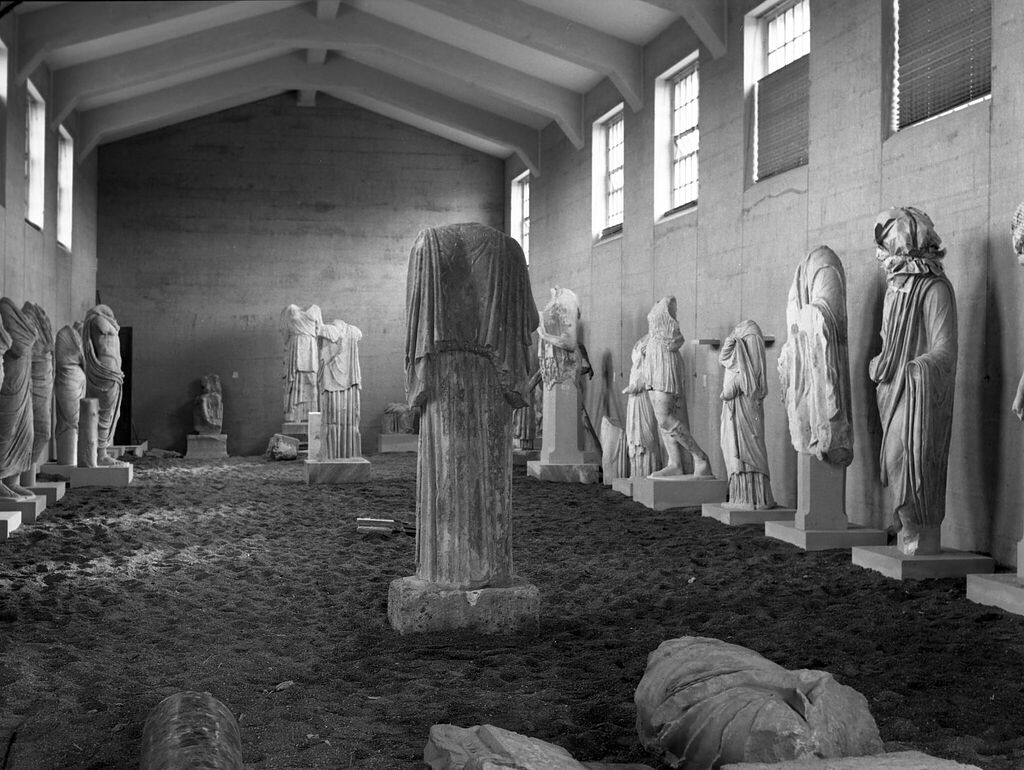
Community at Times of Joy
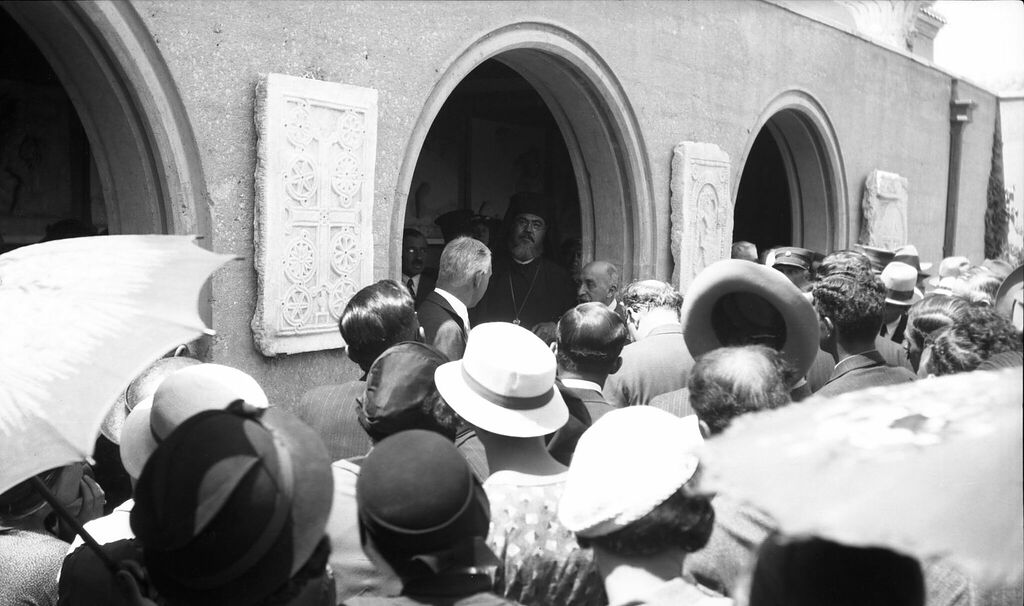
Fortunately, community is something Greeks and Americans have also shared in moments of joy. In times of celebration, we dance together as in this Easter photograph where we see R. Stillwell, A. Stillwell, D.S. Bakoulis, P. Dolias, O. Broneer, and E. Lekkas joining hands in a kalamatiano.
The occasion of the dedication of the Corinth Museum on 29 April 1934 was shared by the whole community. The Greek Prime Minister Panagis Tsaldaris received the building from W. Rodman Peabody, Chairman of the Trustees of the ASCSA
The ASCSA built the museum in 1931-2 with an addition in 1950 to house the finds of the excavations. The museum's designs were made by architect W. Stuart Thompson, whose New York office was used by Frank Lloyd Wright. The building combines the principles of modernism with historicism in architecture. The inner atrium with its arched openings evokes memories of Byzantine monasteries. The architect's goal was to create a building commensurate with the objects that were to be housed in its premises. At the museum's inauguration ceremony, the then Prime Minister of Greece, Panagis Tsaldaris, accepted the donation of the building from W. Rodman Peabody, Chairman of the American School's Board of Trustees, in the presence of the donor, Ada Small Moore. Moore donated the building in memory of her father, who loved the culture of Greece, as stated in the dedicatory inscription in the museum's vestibule. For her donation, the Greek State awarded Moore the Golden Cross of the Order of the Saviour and declared her an honorary citizen of the Municipality of Corinth. The ceremony of the dedication was attended by many people, archaeologists and locals alike. This museum, which has been in operation for over 91 years, continues to serve the needs of the broader archaeological landscape that is today Ancient Corinth. The need for a new Museum is severely felt by all of us working and living in Ancient Corinth as well as by the over 200,000 tourists who visit the site every year.



